Intro
Over the past couple of seasons, we have been testing *a lot* of ski / snowboard outerwear. So we thought it’d be useful to compare all of these pieces head-to-head in one huge, “mega roundup.” We’re starting by publishing Part One here, and will update with even more products in the coming weeks.
We published a similar roundup last year, and you should definitely check that out for even more options. Here, we’ll be covering all the pieces we’ve been testing since publishing that 22/23 roundup, but many of the products in that article are still current and relevant this today.
All of the garments here are meant to serve as the protective outer layer for a day in the mountains, but they all accomplish that in different ways. Some are super burly and ideal for resort skiers / boarders who are hard on their gear, while others are quite light, breathable, and better suited to those who spend some or all of their time skinning / hiking for their turns. And while most are uninsulated shells, there are a few insulated shells here, too.
[See our Layering 101 article for our more general advice on layering, combining different midlayers with different shells, the uninsulated vs. insulated shell question, and more.]
There are several pieces here that we reviewed as a jacket + pant kit, as well as jackets, pants, and bibs that we’ve tested on their own.
So, if you’re in the market for some new outerwear this year or in the future, take a look and see which of these pieces might work best for you.
[For reference, the pieces are ordered alphabetically, and our measured weights are for the sizes we tested, which are listed for each piece. We also list the name & specs of the reviewer(s) that reviewed each product.]
686 Gore-Tex Pro 3L Hydra Thermagraph Jacket & Pant
Price: $899 (jacket) $799 (pants)
Fabric: 3L Gore-Tex Pro Most Rugged + Polartec Alpha panels
Size Tested: Medium
Measured Weight: 802 g (jacket) 998 g (pants)
Reviewer: Luke Koppa (5’8”, 155 lbs / 173 cm, 70 kg)
First up is a very fully featured kit from 686, their Gore-Tex Pro 3L Thermagraph Jacket & Bib. At $899 and $799, respectively, these are the brand’s flagship shells with serious prices to match.
If an anorak with almost no features like the Houdini Shelter is the definition of “minimalism,” this 686 kit is basically the definition of “maximalism” when it comes to outerwear design. Not only are the jacket and bib made with Gore’s top-of-the-line Gore-Tex Pro “Most Rugged” 3-layer laminate, but they also have panels of Polartec Alpha fleece insulation in strategic locations for targeted warmth, plus they include 686’s “Hydrastash” system, which is essentially a small, built-in hydration bladder (which is also removable). On top of that, they have more pockets, closures, and adjustments than just about any shell I’ve tried. In accordance with all these features, I think I clipped 6 tags from 6 different places on each piece, with each tag highlighting one of the many features.
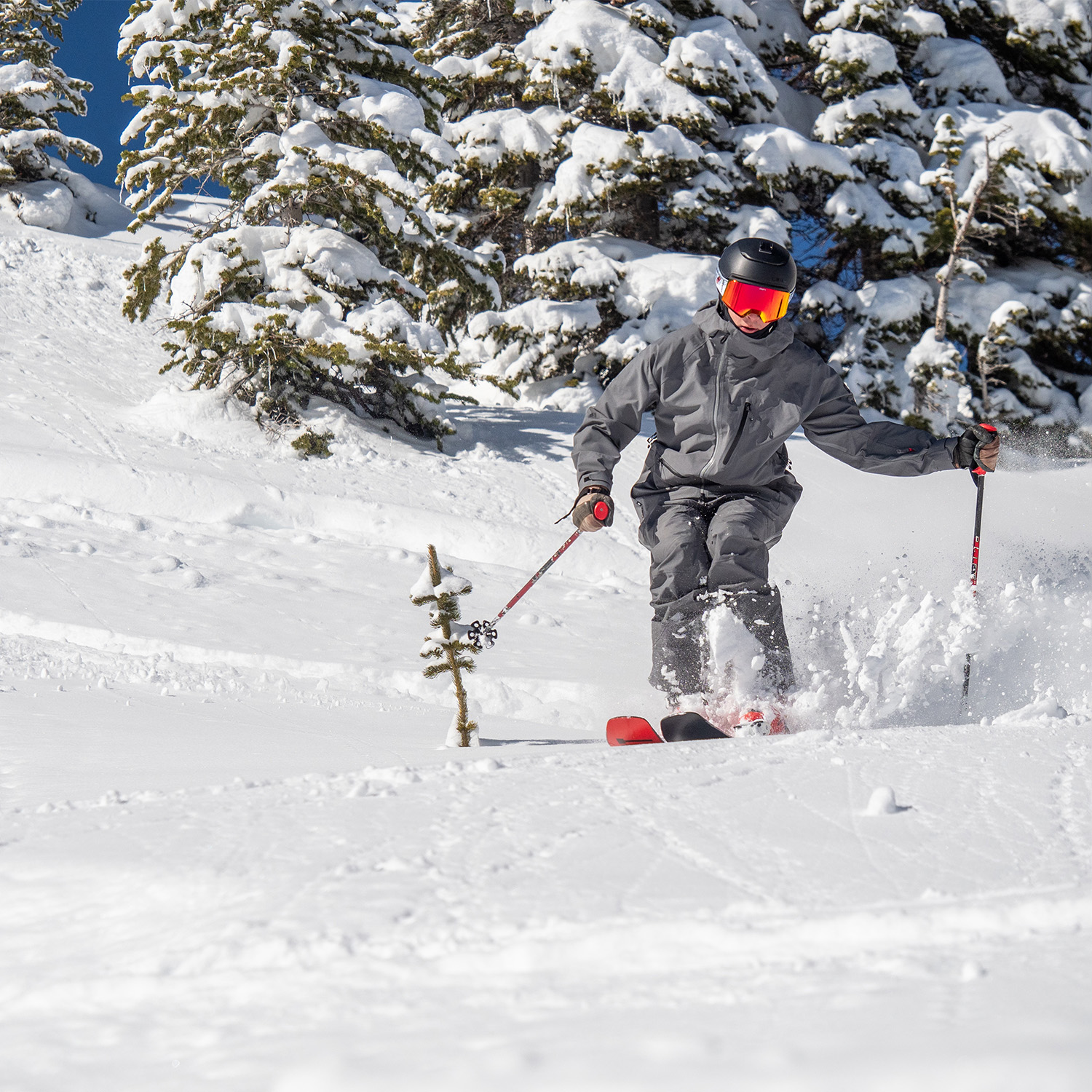
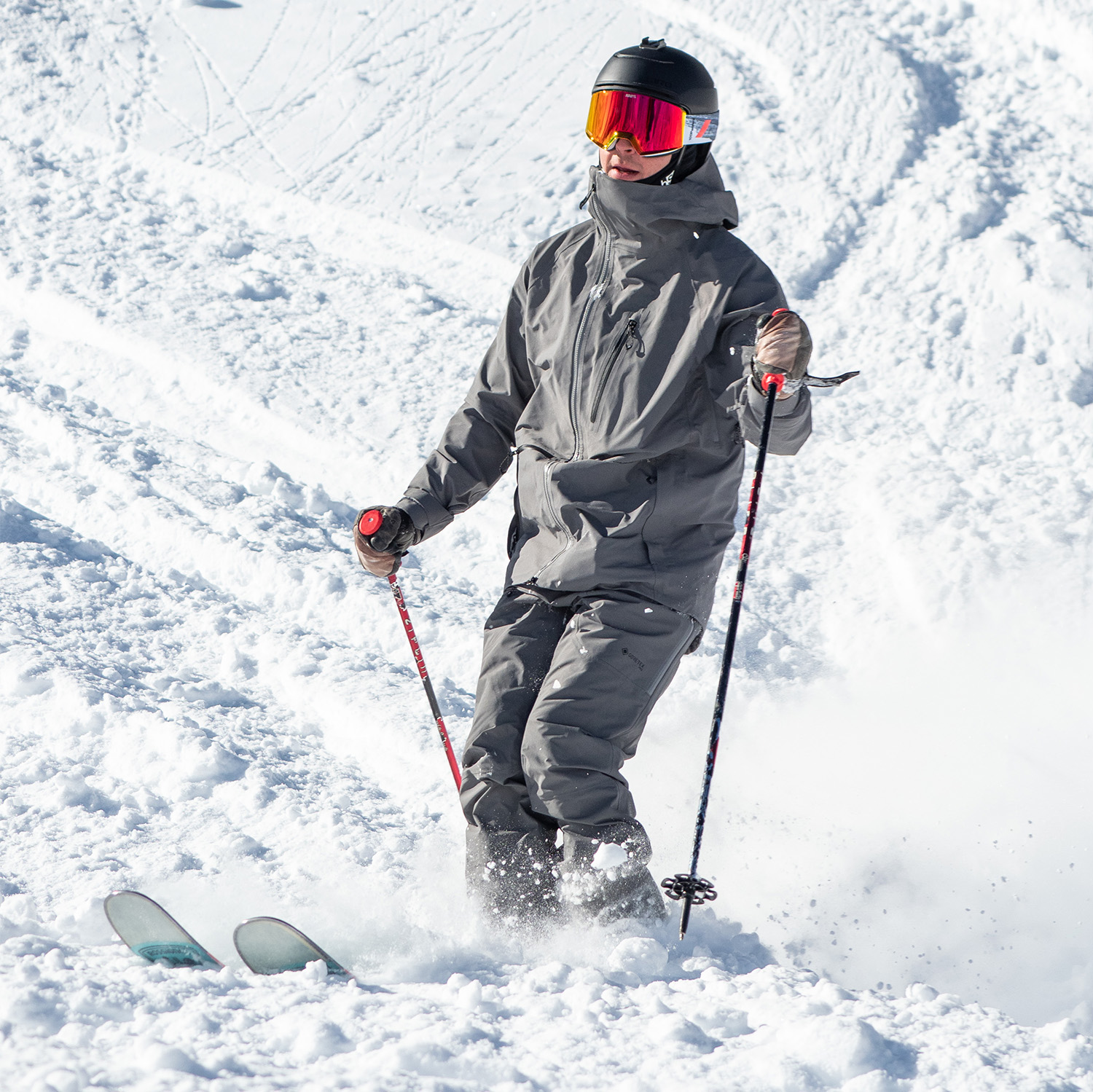
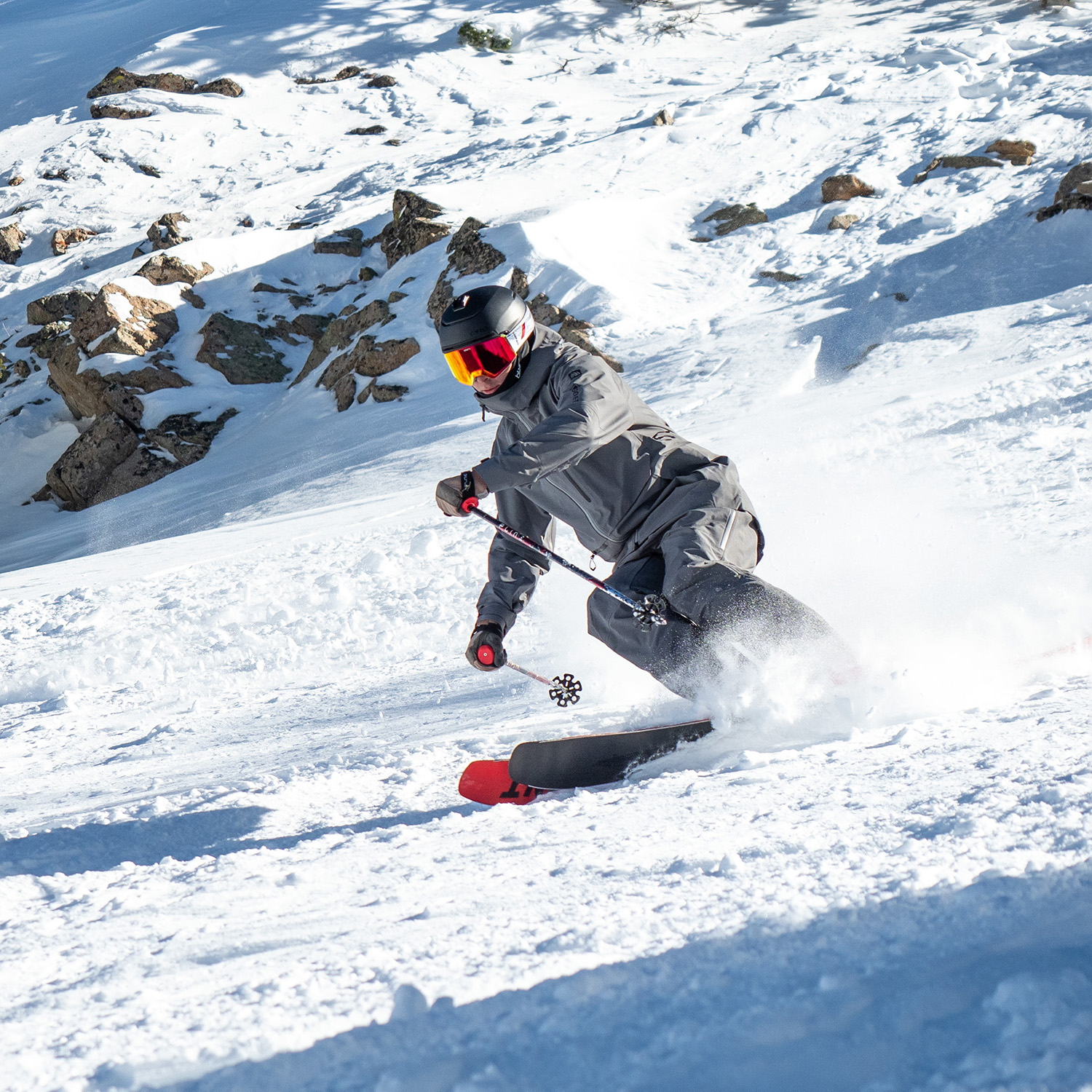
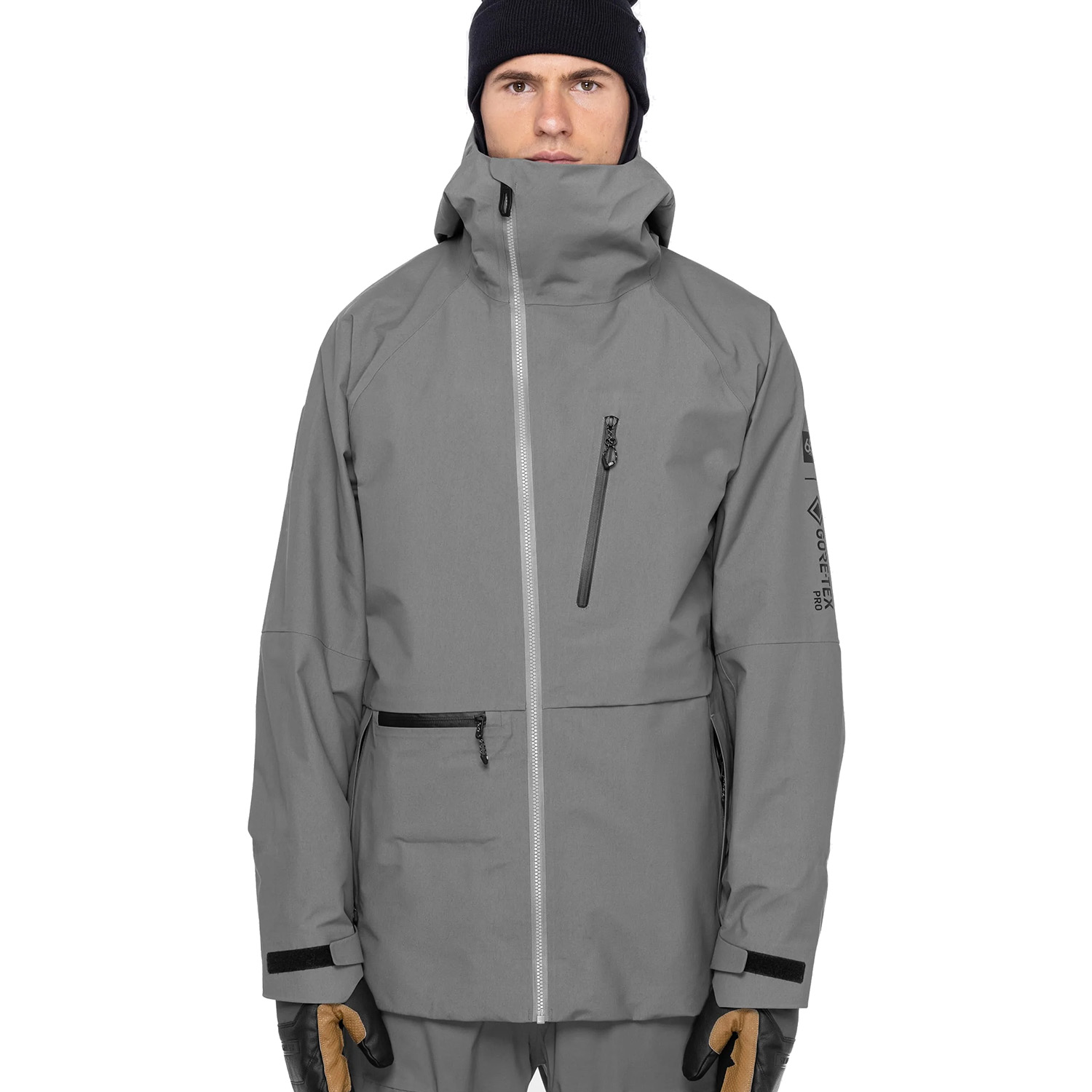
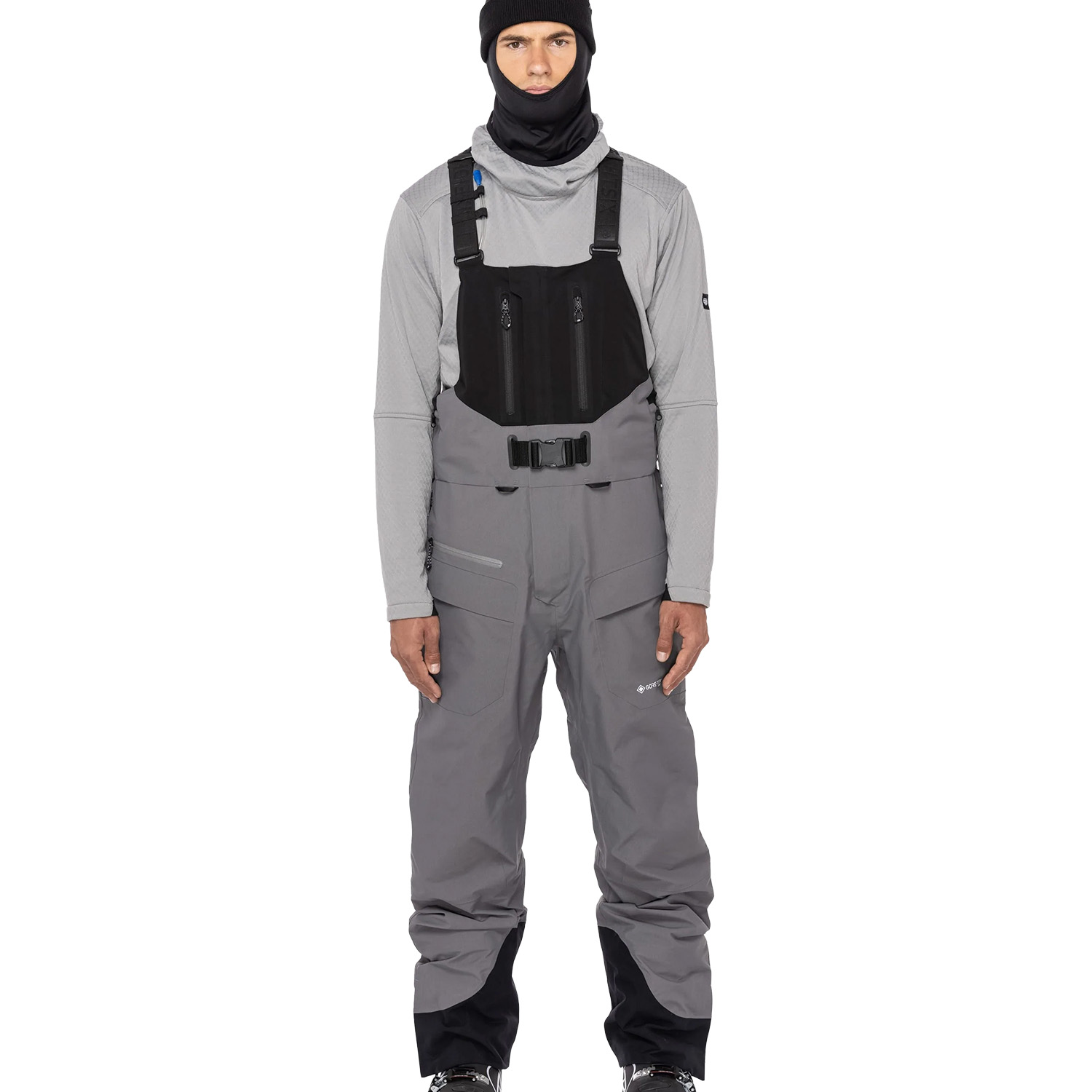
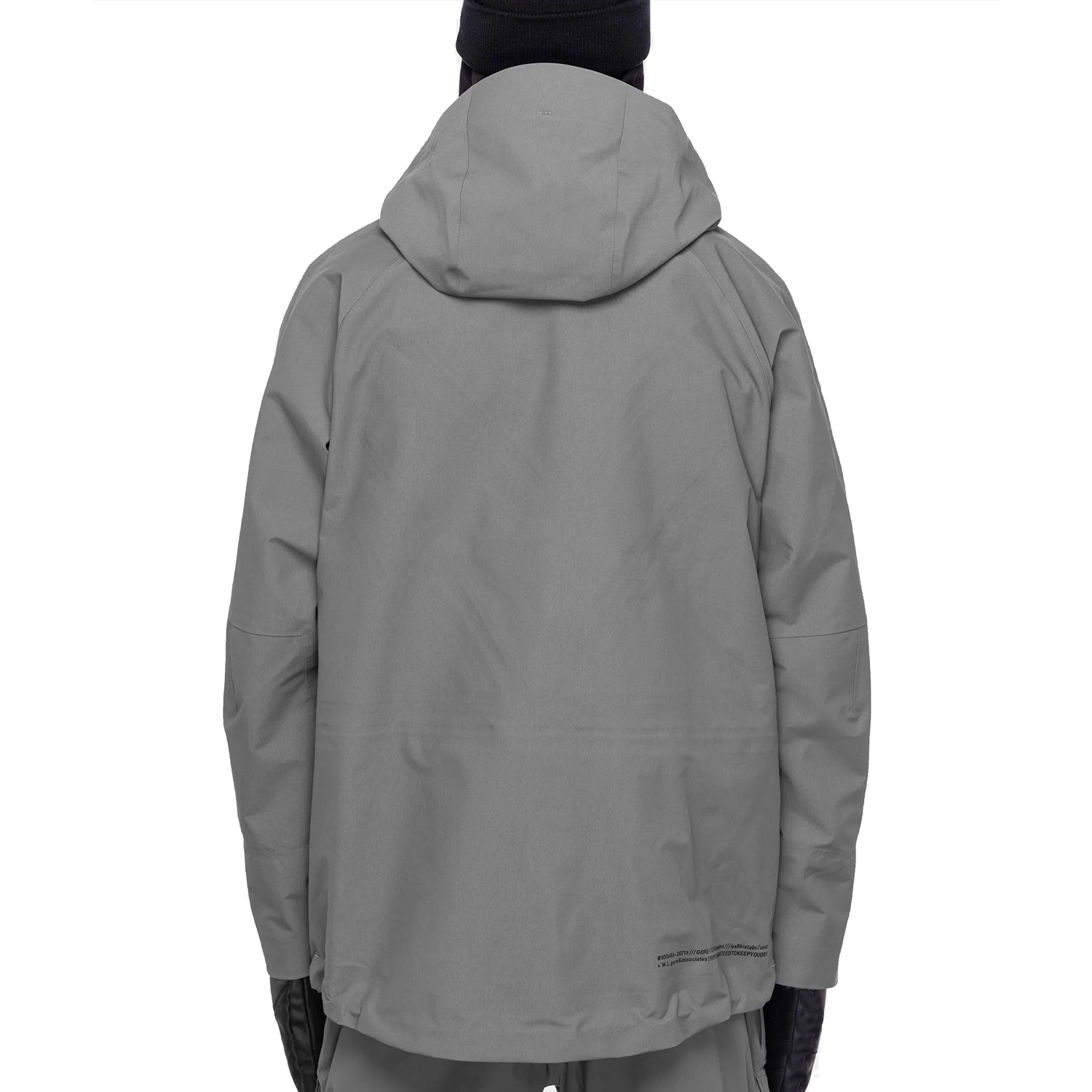
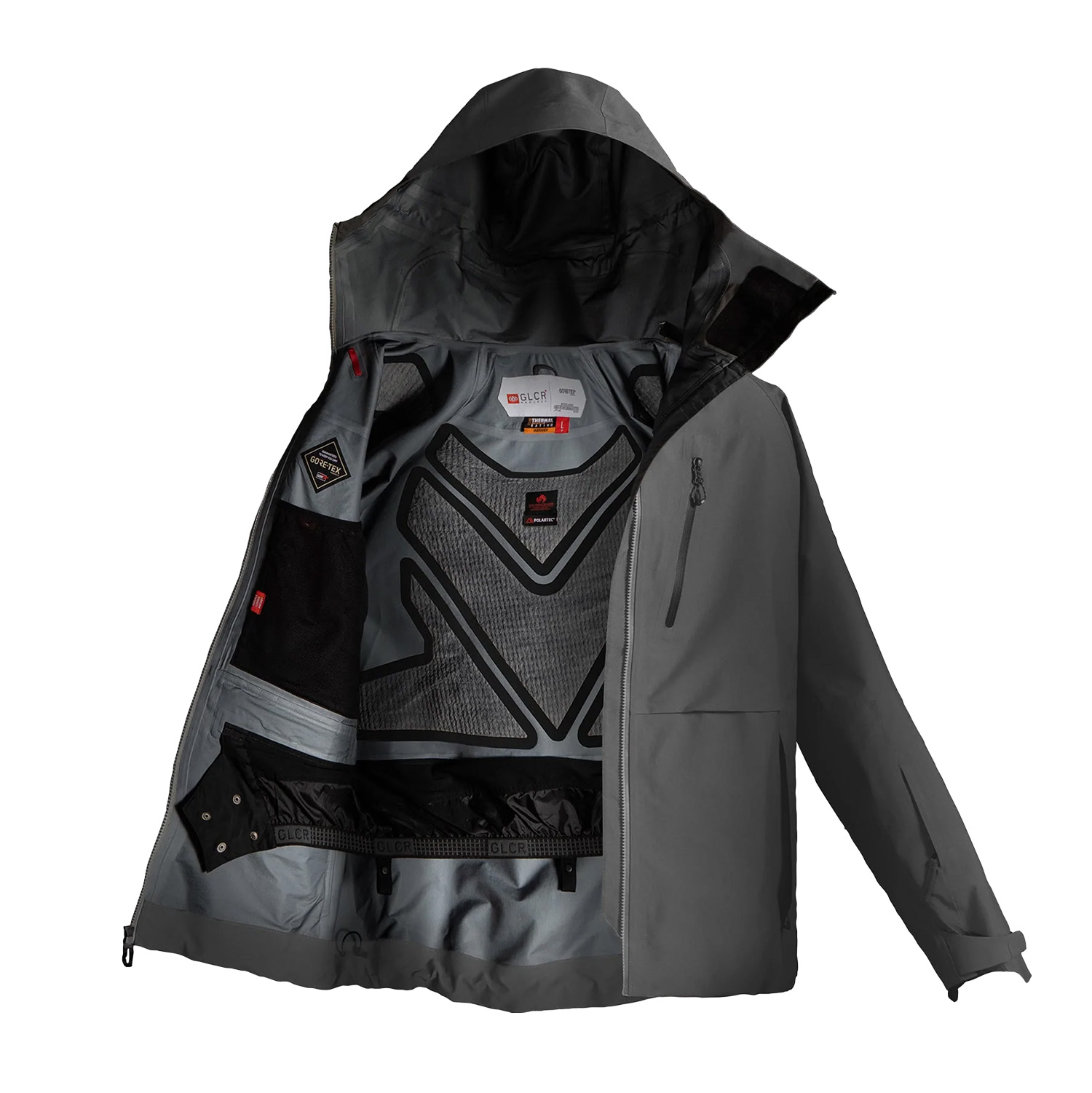
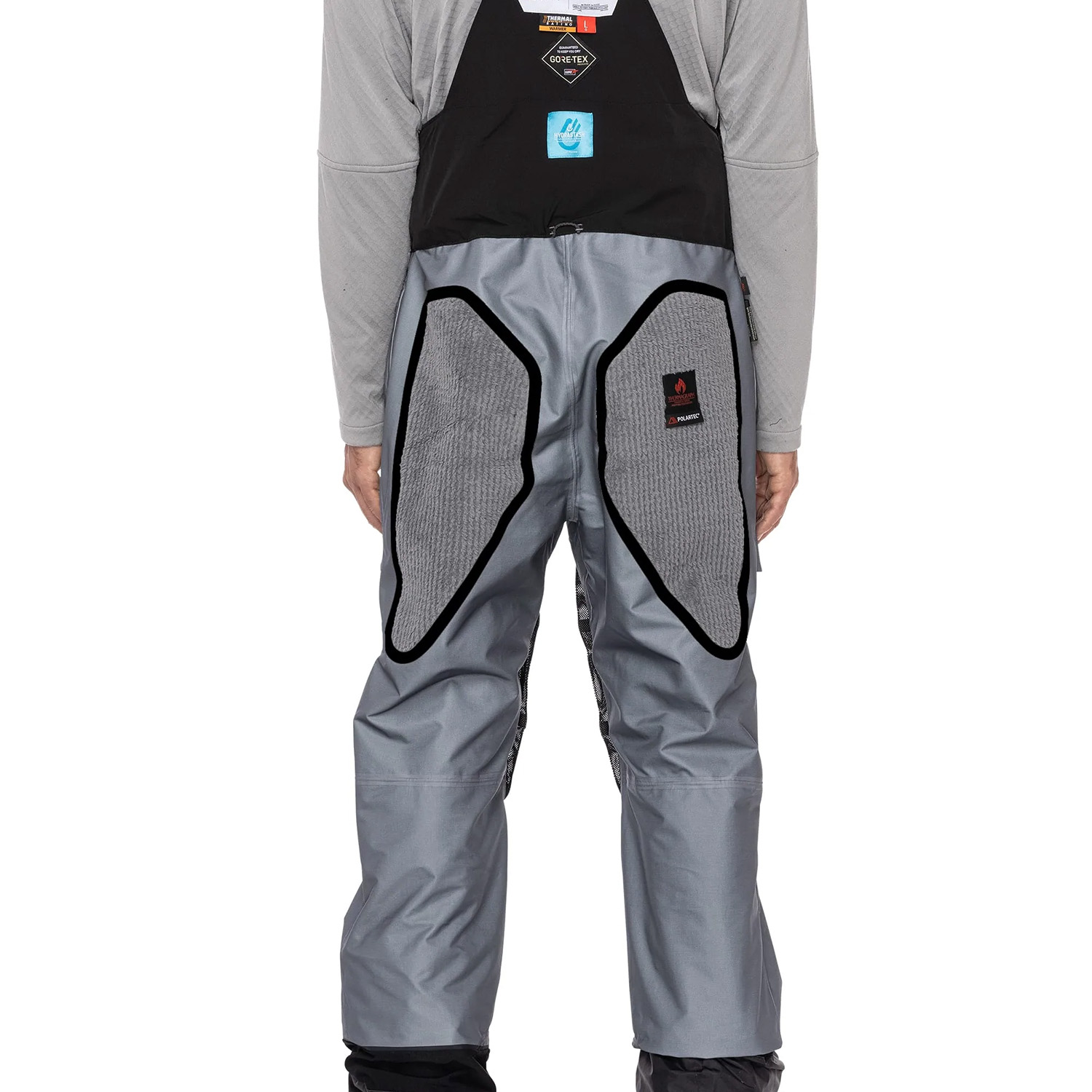
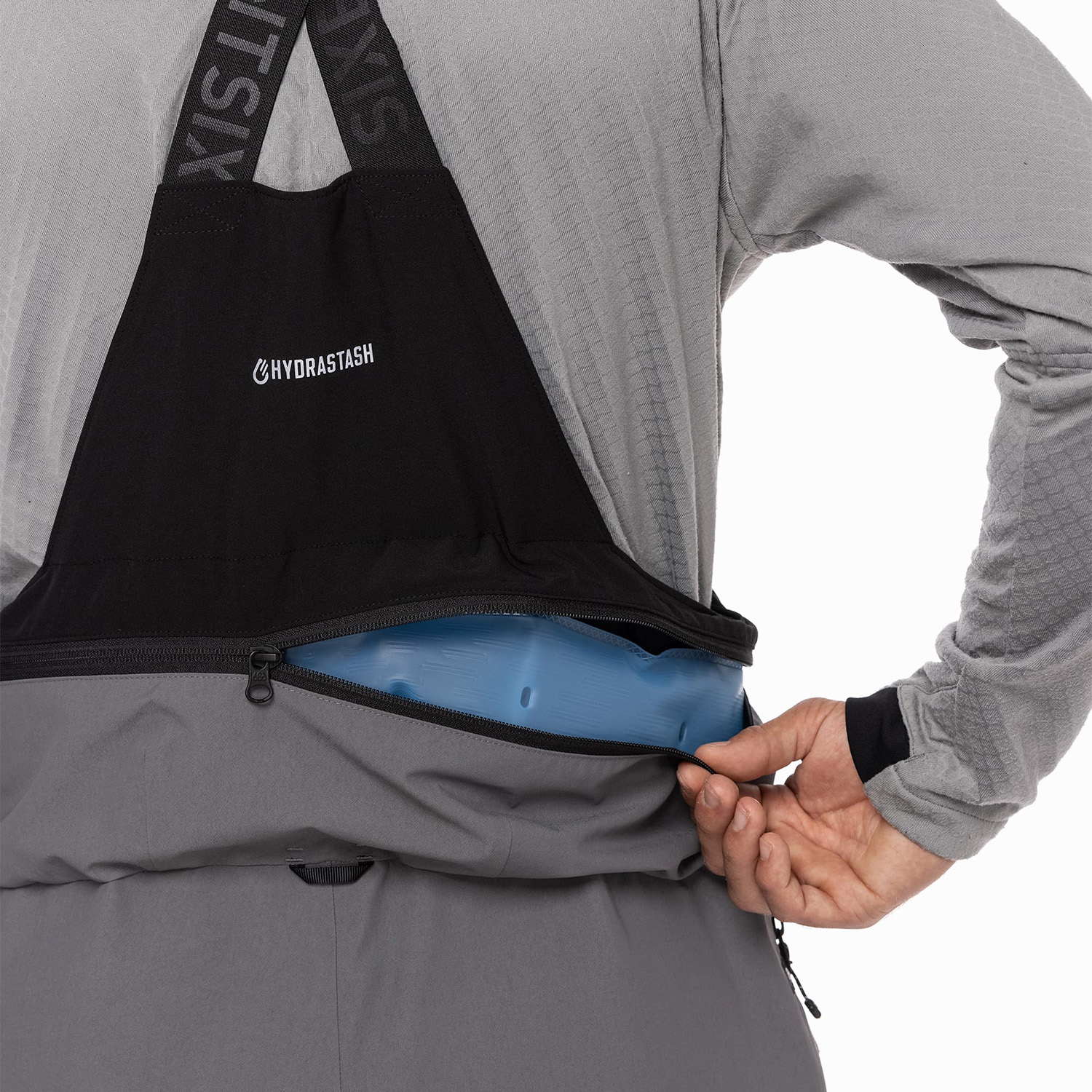
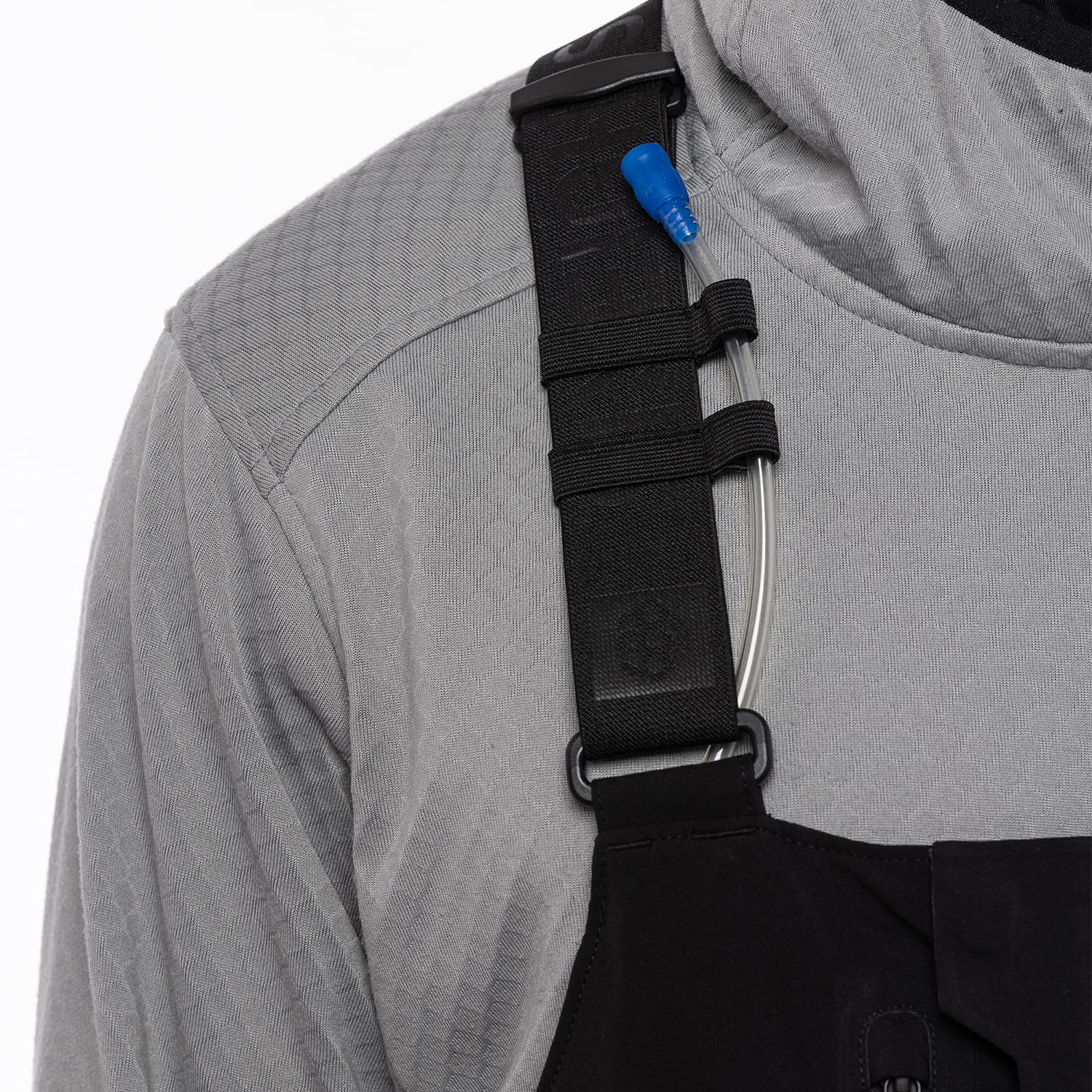
The good news is that, in use, I haven’t found myself really noticing all those zippers, buckles, and bits of fabric (I mean this in a good way). That said, these pieces are anything but light — they’re some of the heaviest uninsulated shells we’ve tested. The upside is that the fabric feels really rugged; not only is it built with Gore’s burliest version of their Gore-Tex Pro laminate (aptly named “Most Rugged”), but the herringbone-like face fabric feels very substantial. The downside is that this is certainly not a very supple or comfy kit in the way that, say, Gore-Tex C-Knit feels, but it’s held up very, very well to lots of resort skiing. I’d expect its long-term durability to be well above average, especially compared to softer, more supple fabrics that are more prone to snagging on branches, rocks, etc.
As for those panels of Polartec Alpha, they add a bit of warmth over the upper back, shoulders, knees, and butt. I appreciate the fleece on the bib more than the jacket, since I rarely find myself feeling cold at my back or shoulders, but they also didn’t seem to add an excessive amount of warmth to my layering system. That said, this kit is notably less breathable overall than some of the class leaders in that metric, such as the Beringia St. Elias 2.0 (see below), Strafe Cham, Trew Le Skieur / LW Bib, and Flylow’s pieces that use their “Perm” fabrics. This 686 kit does have nice vents, though.
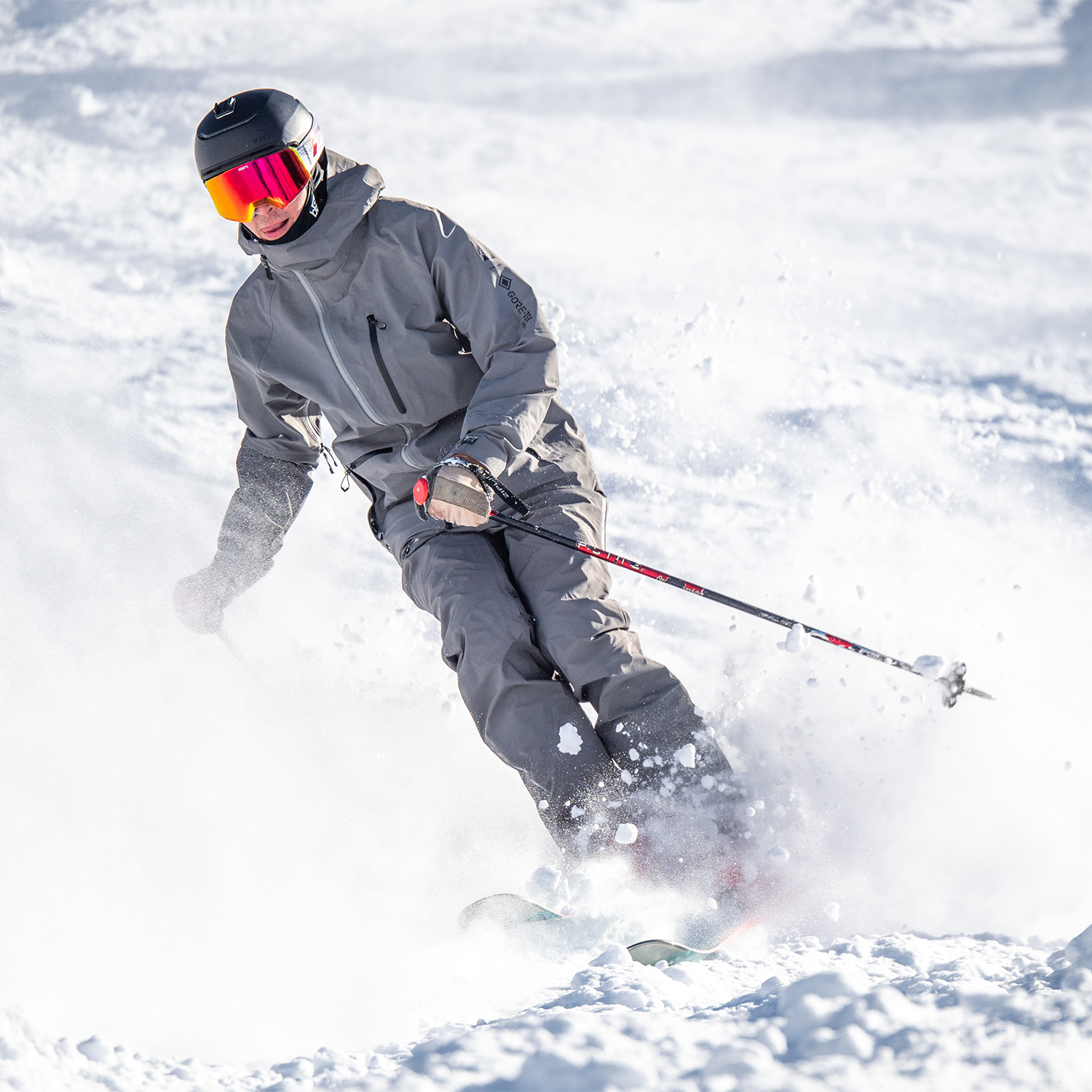
If you like to store a lot of stuff in your jacket and bibs, this kit is great for you. There are more pockets than I’d ever use, but as I noted earlier, I haven’t yet felt like the unused ones got in the way that much. As for the Hydrastash system, I opted to remove it for most days, but I have used it on longer resort days and was impressed by how little the water in the bladder bounced / sloshed around. For people who find themselves getting thirsty on the mountain, it’s the best solution I’ve found that doesn’t involve a backpack.
As for fit, I’d say it’s pretty middle-of-the-road — neither super slim nor super baggy. The asymmetrical center zip on the jacket has taken some getting used to in order to zip it all the way up, but it does make for a very comfortable, fairly high collar.
The Gore-Tex Pro 3L Thermagraph kit is anything but cheap, but it is an interesting approach to making a very legitimately “fully featured” shell kit with some unique additions.
Berinigia St. Elias Jacket 2.0 & Bib 2.0
Price: $675 (jacket) $675 (pants)
Fabric: 3L Täsmä laminate
Size Tested: Medium
Measured Weight: 603 g (jacket) 650 g (pants)
Reviewer: Luke Koppa (5’8”, 155 lbs / 173 cm, 70 kg)
Overhauled for 22/23 and returning for 23/24, the St. Elias Jacket 2.0 and St. Elias Bib 2.0 are Beringia’s flagship shells (coming in at a hefty $675 a piece), and they serve as the launch pieces for a new fabric that they developed with Japanese textile company, Toray. Dubbed “Täsmä,” the fabric uses an electrospun membrane that Beringia claims can “variably adjust to ambient weather conditions, assuring the perfect combination of protection, breathability and comfort, especially during activities that require unpredictable alternation between periods of high performance and repose, such as skiing and climbing.”
Electrospun membranes are still somewhat new, the most marketed of which being The North Face’s Futurelight membrane. I don’t recall The North Face talking about any dynamic aspect of Futurelight’s performance, though Schoeller has made similar claims about their c_change membrane, which I found to at least be somewhat accurate in use when testing the c_change-equipped Amundsen Peak Anorak.
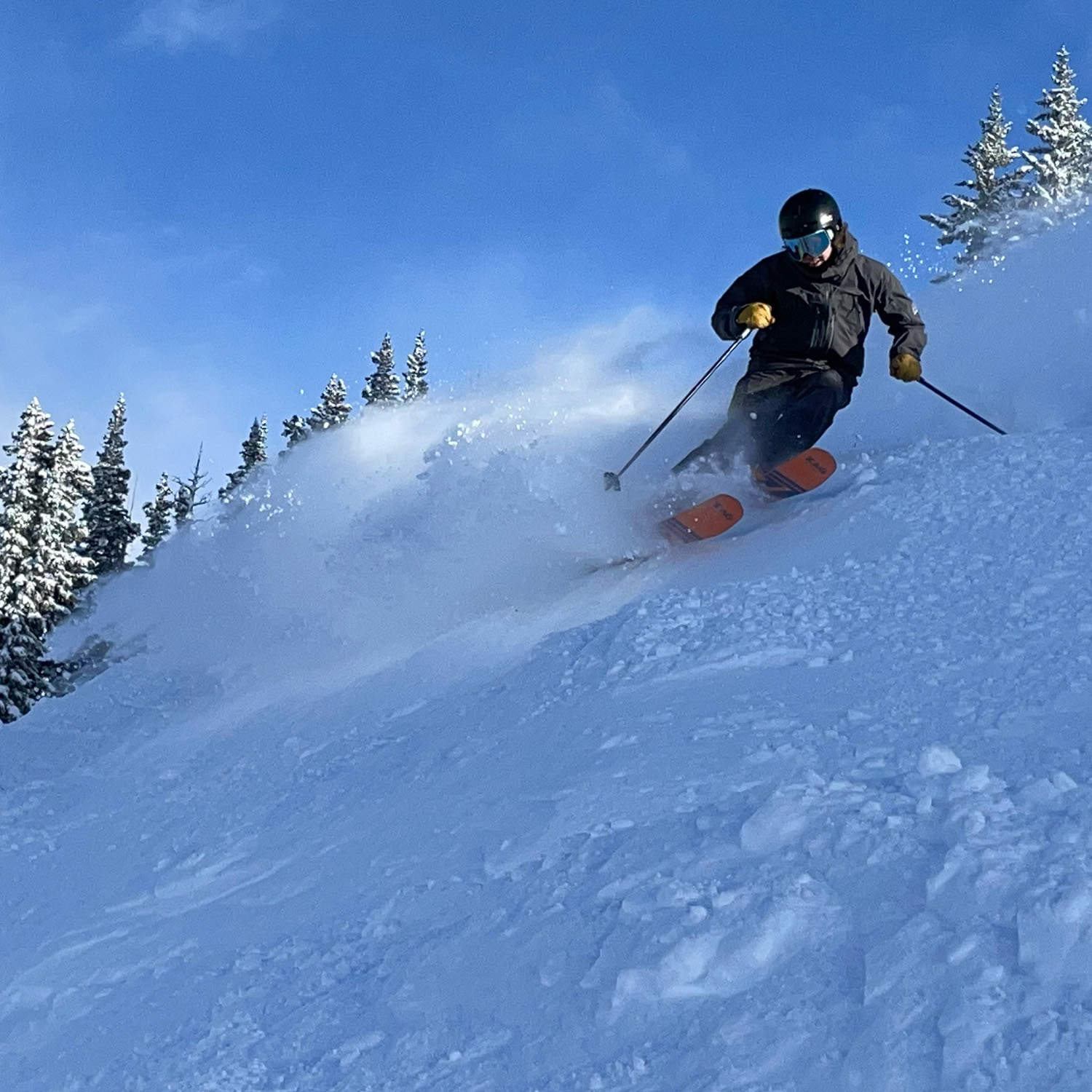
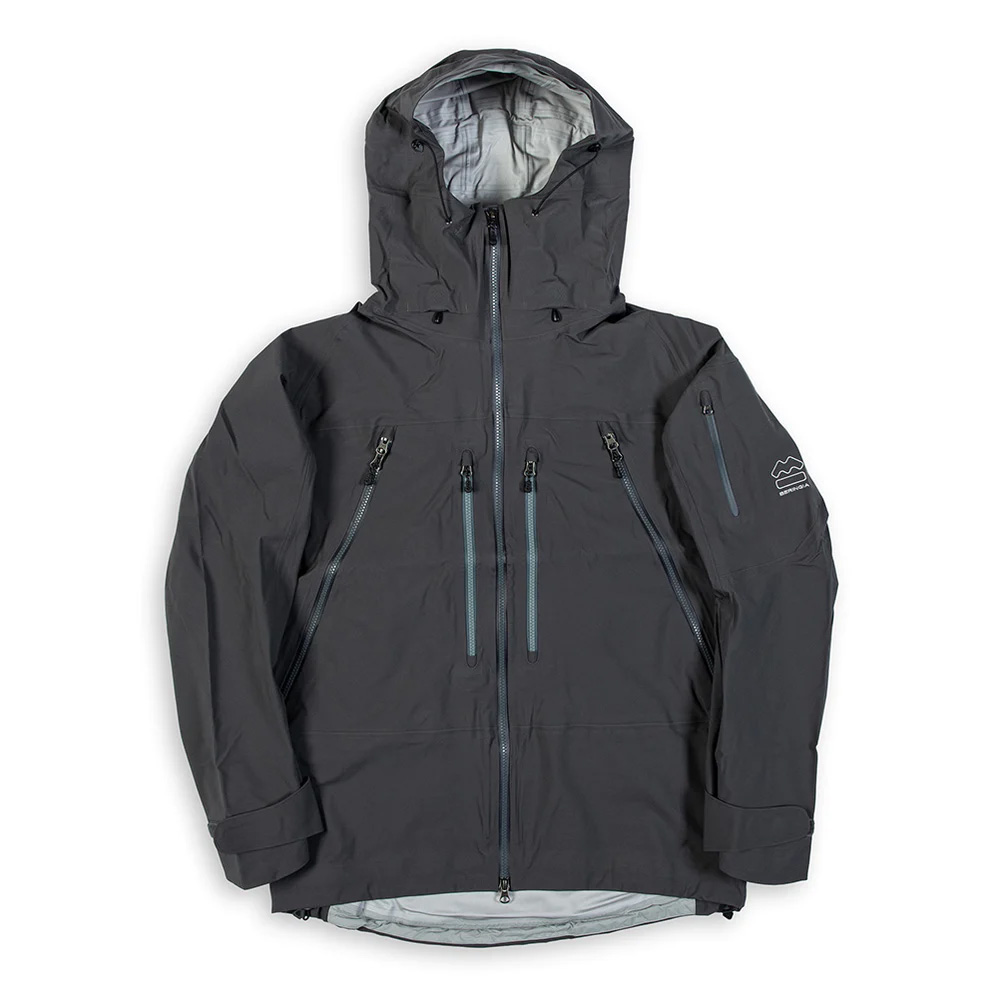
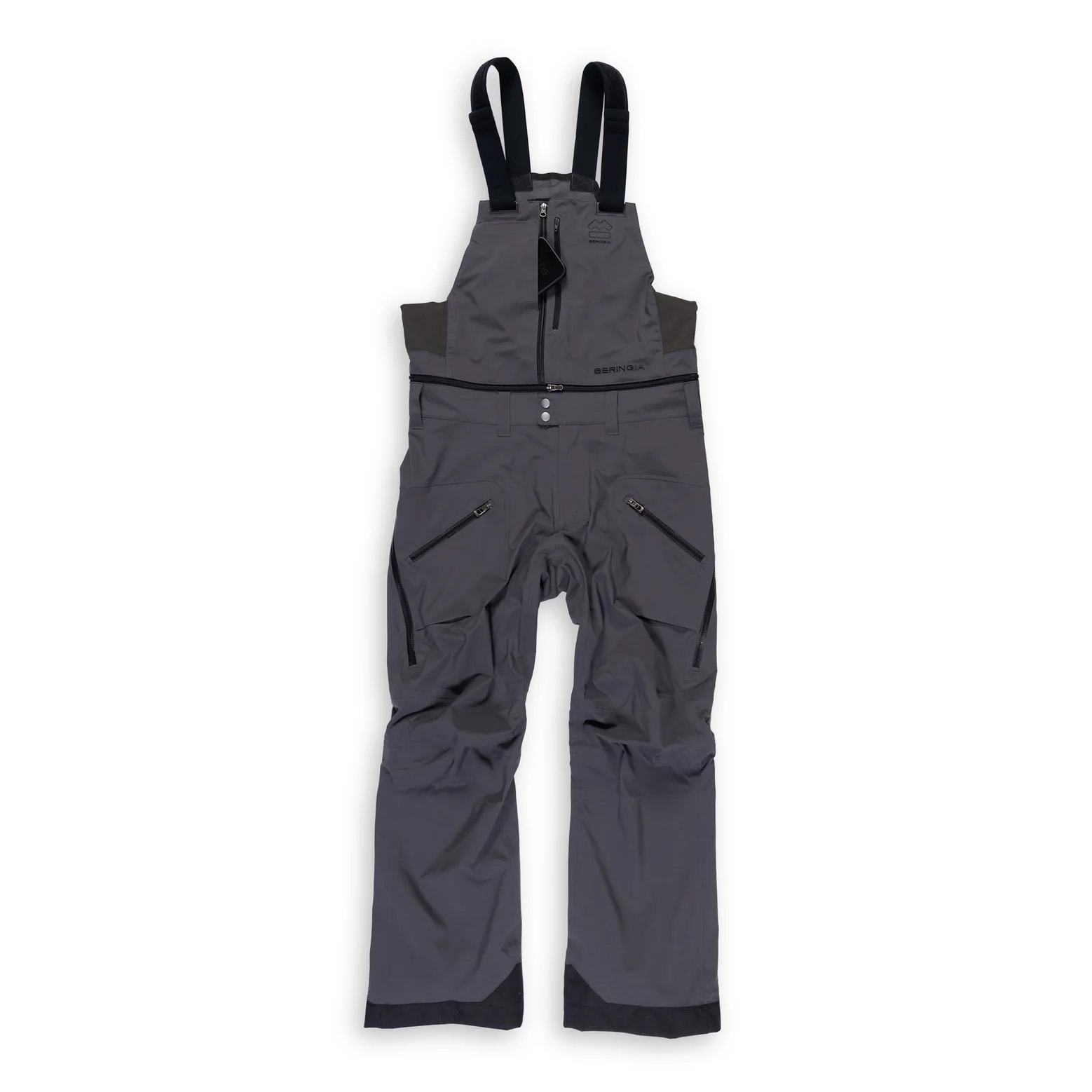
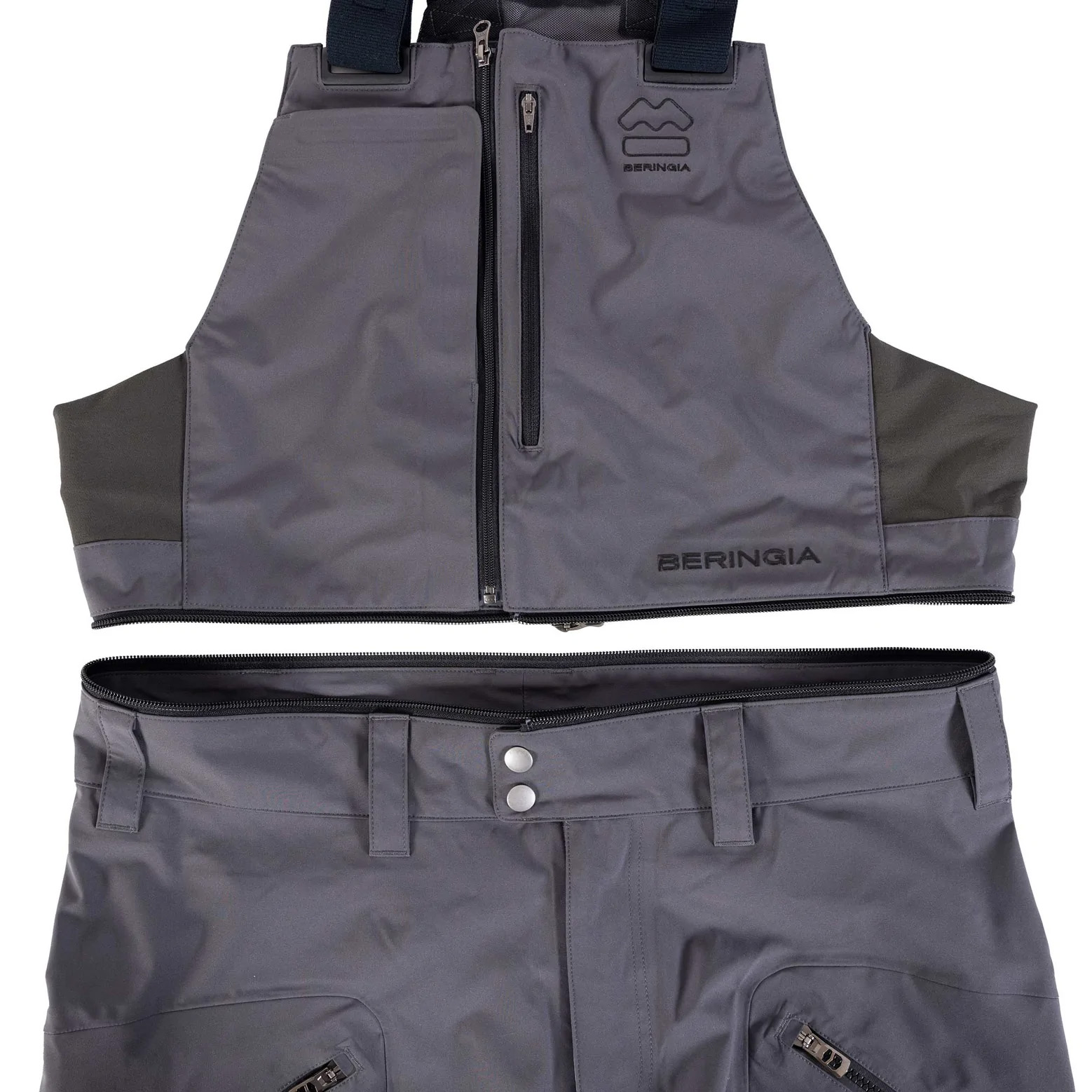
[Apparel Nerd tangent: the electrospinning process can produce membranes with a wide range of performance ratings / traits, so you can’t necessarily make broad-level claims about the entire class. But the St. Elias 2.0 kit’s fabric is slightly air-permeable, with a reported rating of .2 cubic centimeters per second, which I believe translates to about 0.0004 cubic feet per minute, though I’m not sure it’s an apples-to-apples comparison in terms of the Japanese testing standards Toray / Beringia reported, vs. the ASTM or ISO standards companies like Strafe and Flylow use. For reference, Strafe claims an air permeability of .4 cubic feet per minute for the Schoeller Aerobrane fabric on their Cham kit, which is still the most breathable waterproof laminate I’ve used to date. I don’t know if comparing those numbers is legitimate, but skinning in the St Elias 2.0 kit, it definitely falls on the more breathable end of the spectrum. It’s better in that regard than most of the pieces here.]
Air-permeability speculation aside, Beringia says the St. Elias 2.0’s fabric also has a water resistance rating of 15,000 mm, and a water vapor transfer rating (aka the “breathability rating” you often see for waterproof fabrics) of 29,000 g per square meter of fabric over 24 hours.
All that is to say: this kit doesn’t have the highest water resistance rating, but it is slightly air permeable and has a pretty high “breathability” rating.
In practice, that has seemed accurate. I didn’t have any issues with moisture getting through the fabric on days when it was dumping snow with temps right around freezing, but the St. Elias 2.0 is significantly more breathable than the 686 kit above, and more so than most “20K/20K” shells I’ve used.
In terms of fit, the St. Elias 2.0 kit is a bit on the slimmer side, especially compared to the Flylow Lab Coat / Baker Perm Bib and the next kit, but the St. Elias 2.0 hasn’t felt restrictive and I can still comfortably throw a midlayer under the bib and jacket. In terms of hand feel, the fabric is super soft and comfortable, though there is a bit of an audible crinkle to it, despite how flexible it feels.
The St. Elias 2.0 has all the features I want but not many I don’t; two big exterior chest pockets, two diagonal vents on the jacket, two pockets on the (removable) bib, two hand pockets on the pant, and two pretty big vents on the pant. The velcro-adjustable bib straps are a bit finicky to set up, but I haven’t had to touch them since and they’re very low-profile and comfy.
My one complaint feature-wise is the pant cuff reinforcements — they’re quite short. They do wrap all the way around the bottom, but they don’t rise much on the inside; I shred pant cuffs very quickly because of how often my ski edges hit my boots, and the minimal coverage on the St. Elias left me mostly using it for touring, with a handful of resort days mixed in. I think this kit will be most appealing for more human-powered skiing than daily resort laps, and thankfully, I’m much less prone to shredding the cuffs of my touring pants since more time is spent walking uphill than jumping around and hitting my cuffs with my ski edges.
Overall, the St. Elias 2.0 Jacket & Bib make for an impressively breathable kit that still offers very respectable weather resistance and lots of features — despite not being ultra heavy. I’ve loved it as a touring kit, and it could do double duty in the resort, provided you’re not super hard on your gear.
Dakine Sender Stretch 3L Jacket & Pant
Price: $495 (jacket) $475 (pant)
Fabric: 3L laminate w/ 20K/20K polyester membrane, 100% recycled polyester face fabric, & 100% polyester circular knit backer
Size Tested: Large
Measured Weight: 717 g (jacket) 732 g (pant)
Reviewers:
- Dylan Wood (5’10.5”, 160 lbs / 179 cm, 73 kg)
- Luke Koppa (5’8”, 155 lbs / 173 cm, 70 kg)
Dakine’s Sender Stretch kit stands out for a few reasons. First off, its fit — the jacket and pant are very, very roomy. That’s great if you prefer a loose, baggy fit, but if you’re not sure, it might be worth sizing down.
Second is the Sender Stretch’s — you guessed it — very stretchy fabric. It’s particularly soft and supple, and combined with its generous fit, that makes it a really comfy combo that does whatever the opposite of “restrict motion” is.
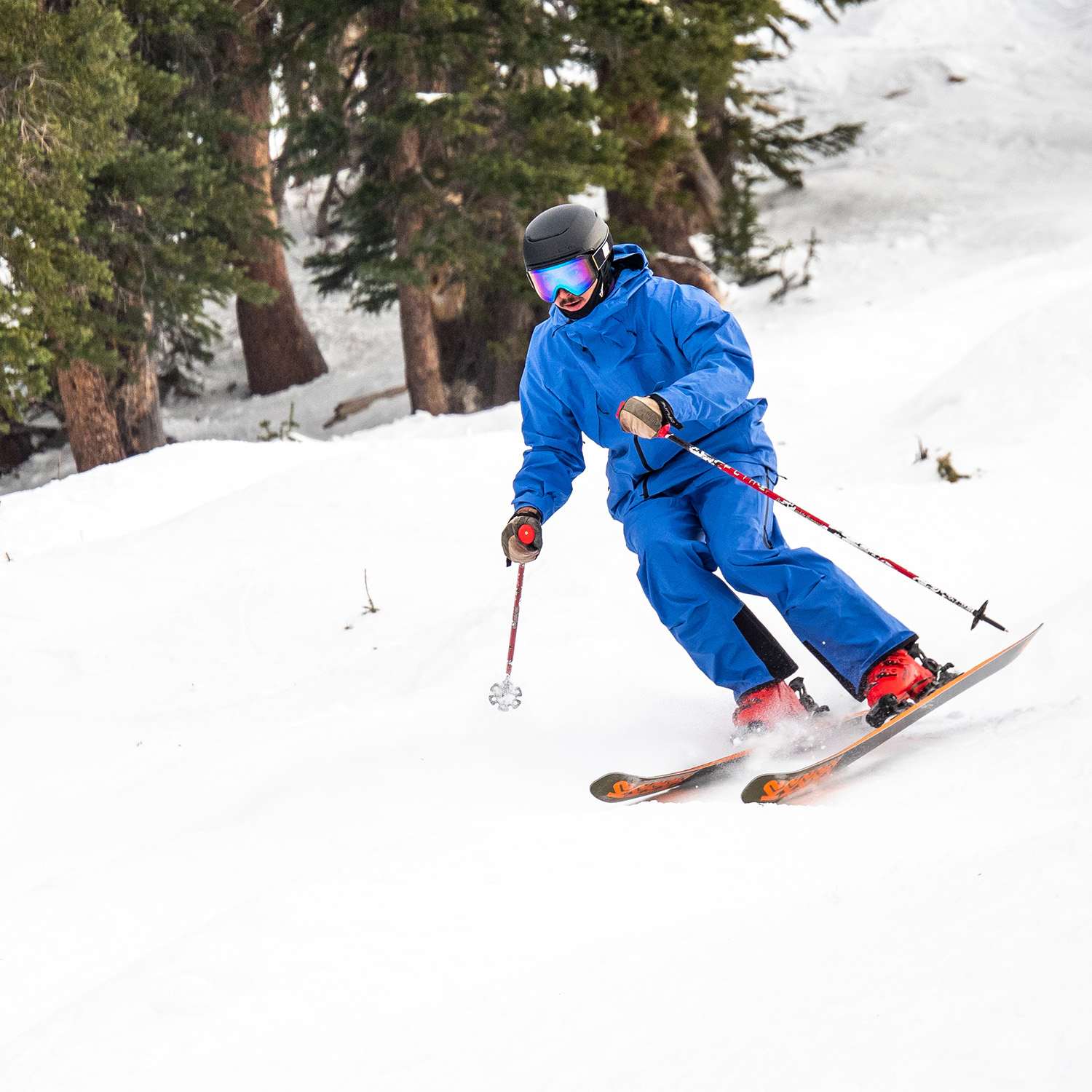
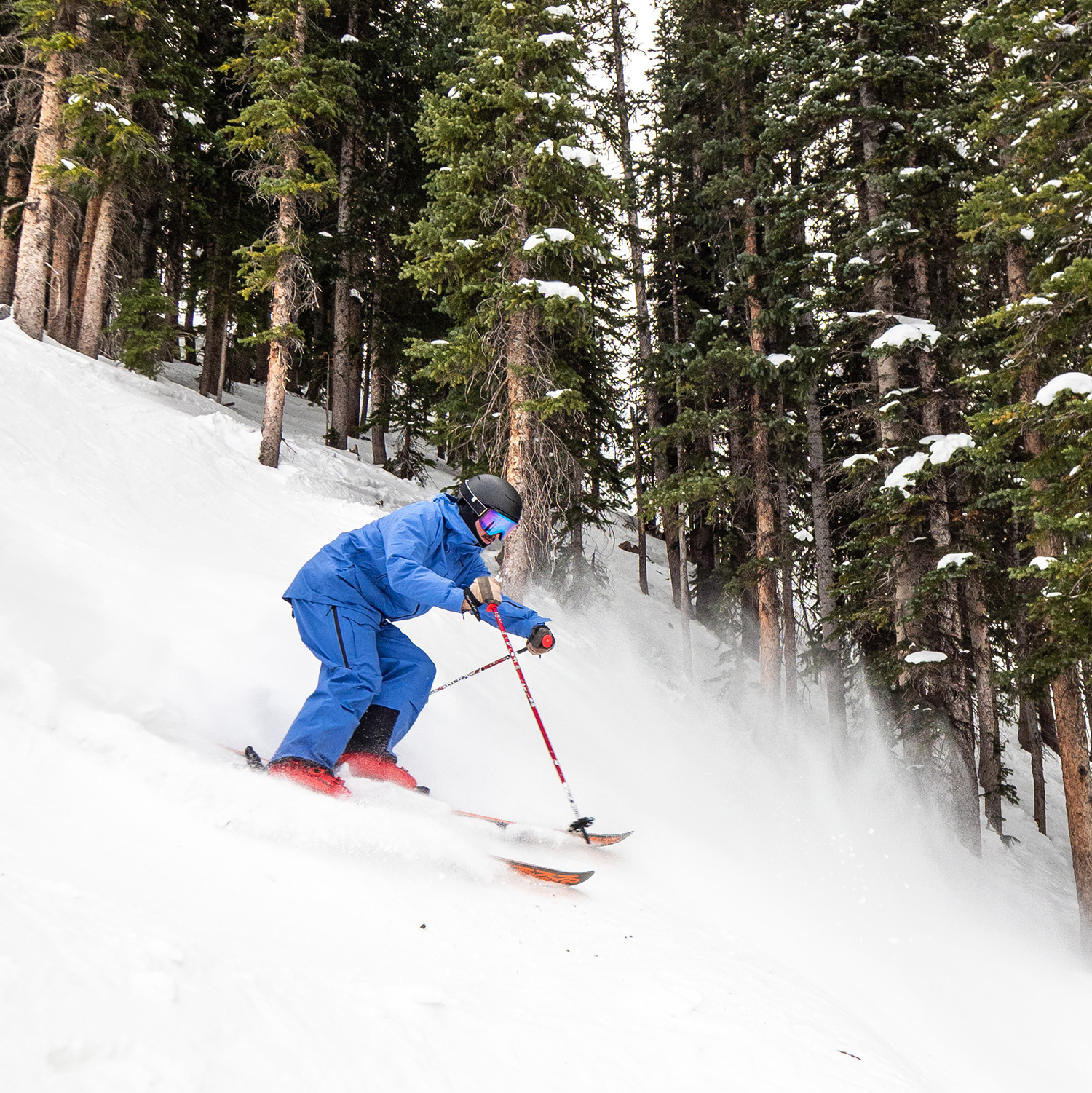
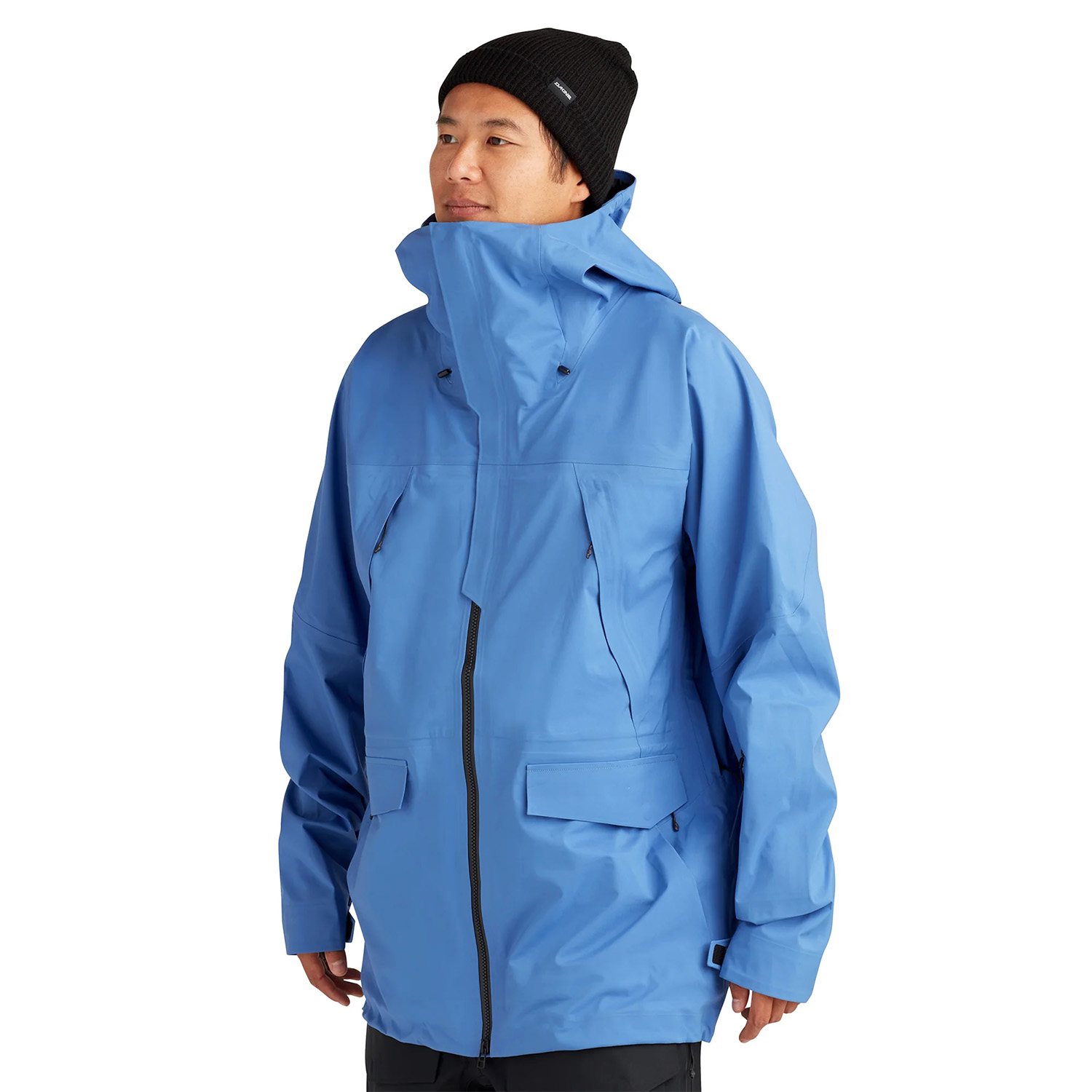
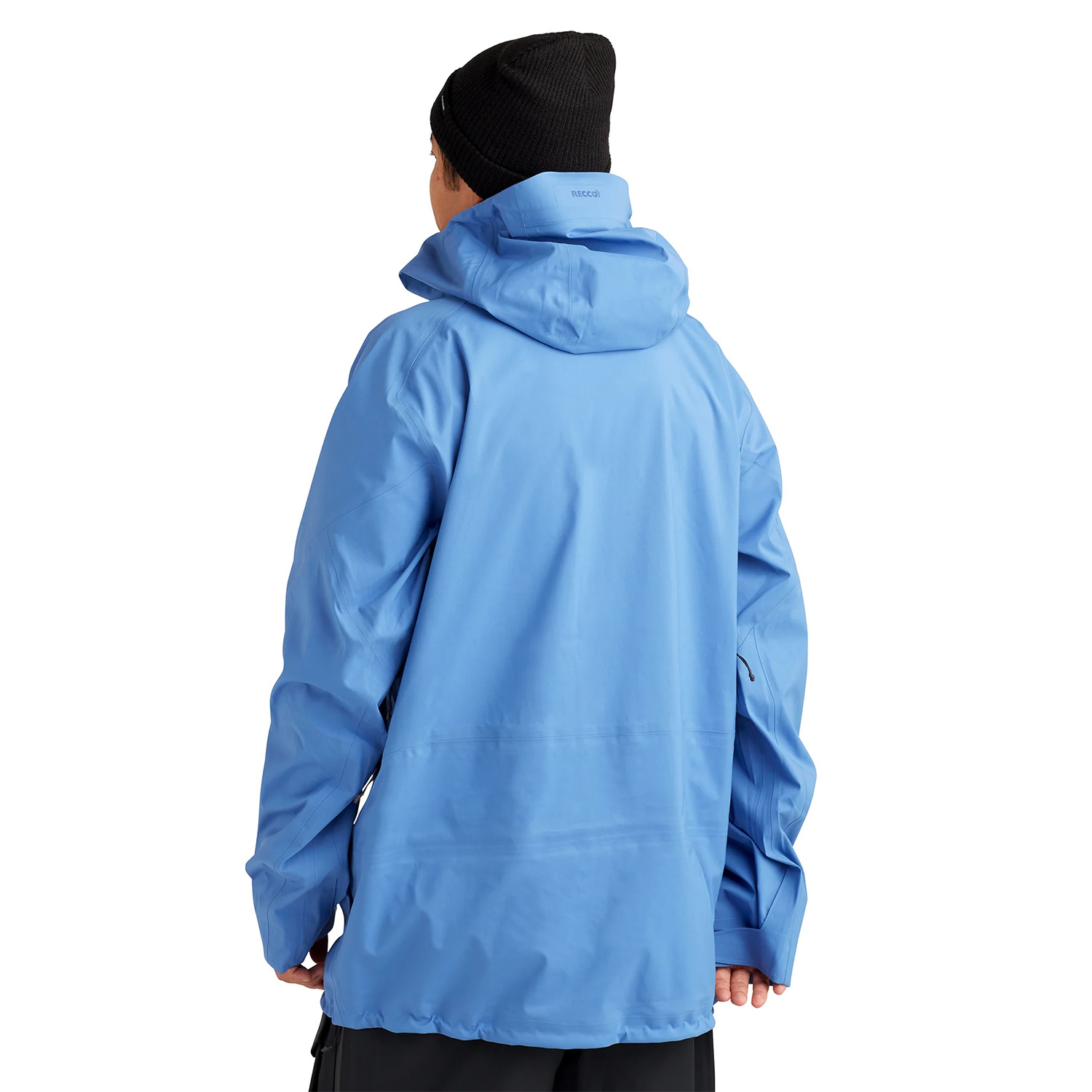
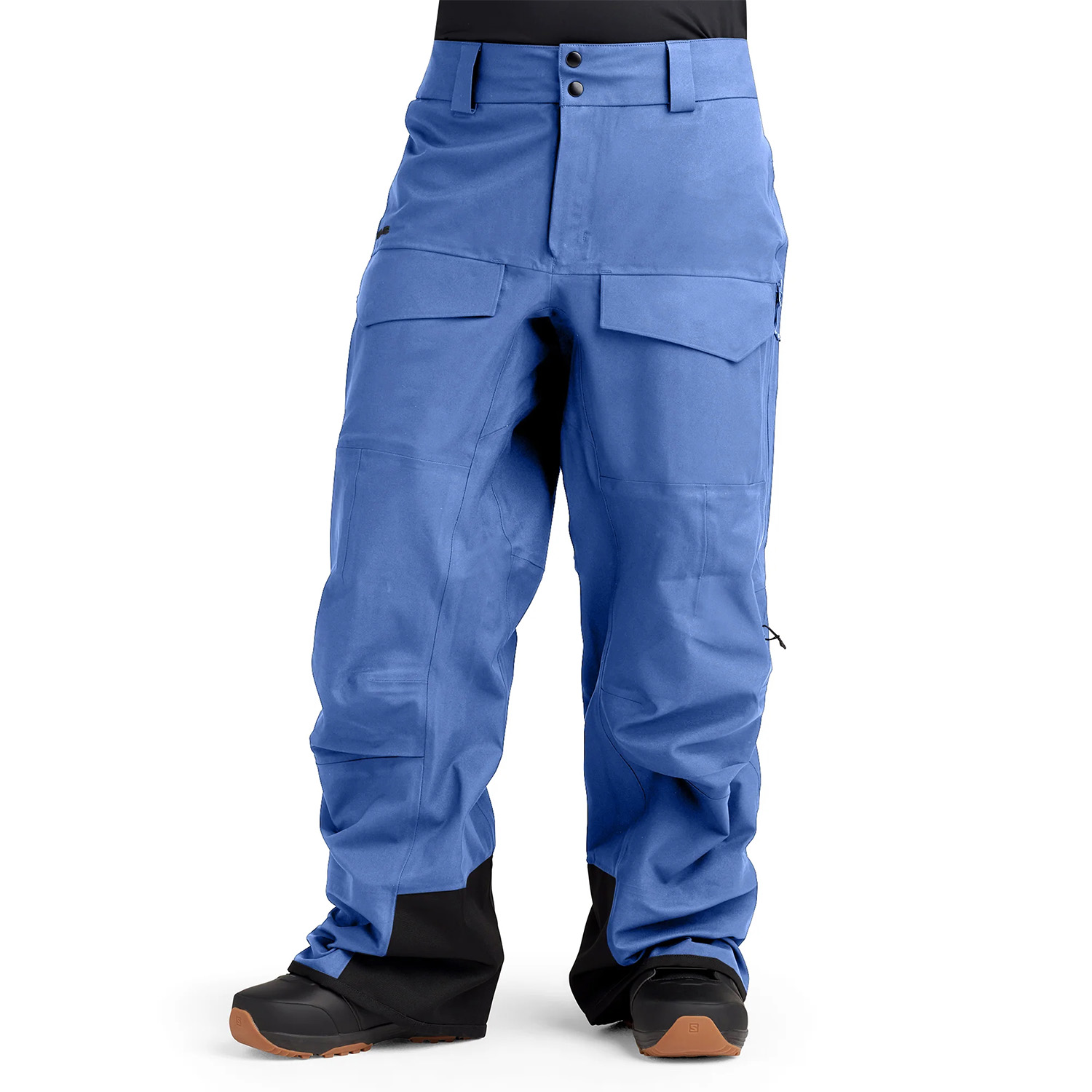
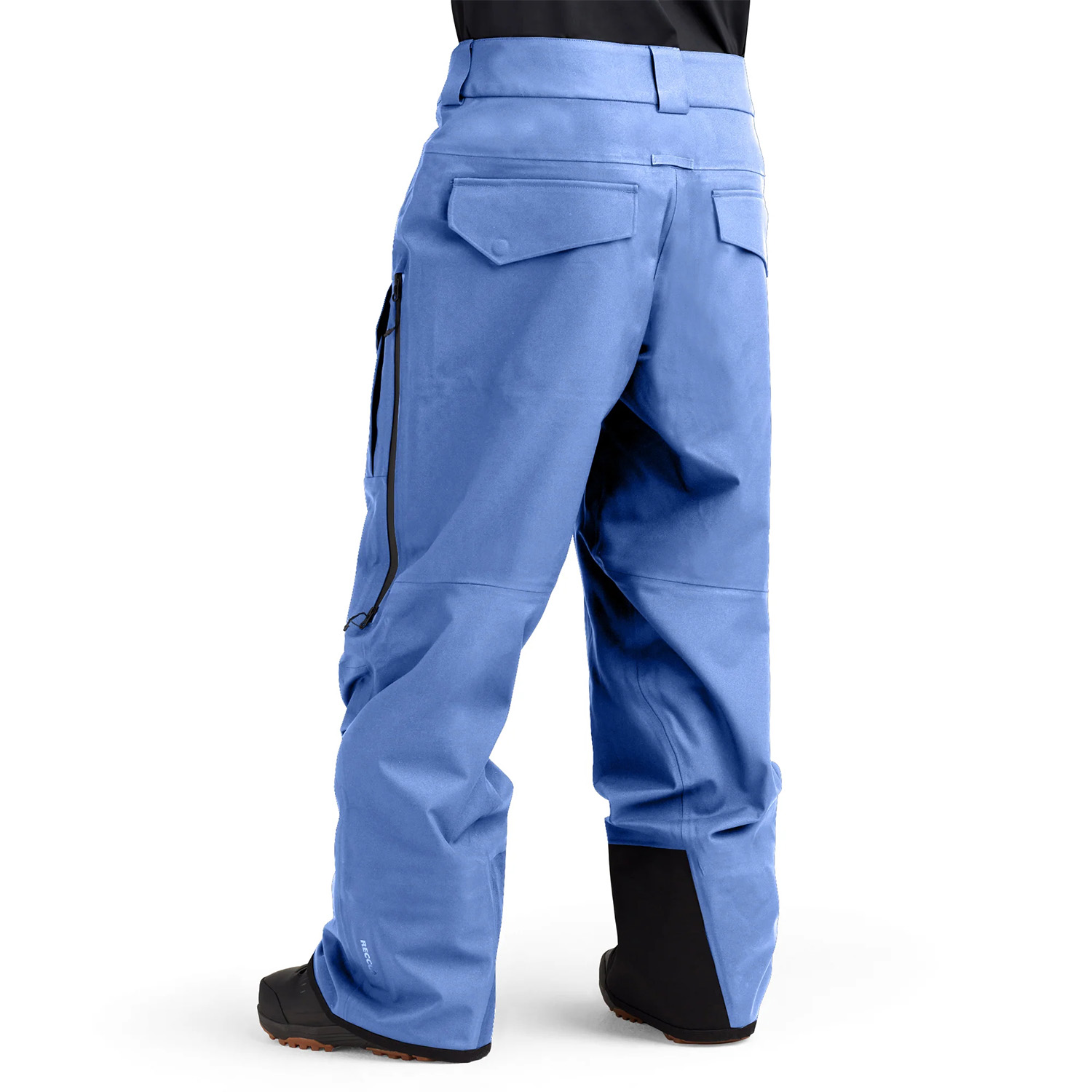
That fabric is fairly average in terms of weather resistance and breathability for a pretty high-end shell. We haven’t had any issues with it wetting out, and while there are more breathable alternatives (see the next kit), the Sender Stretch breathes about as well as you’d expect for a “20K/20K” shell.
As for features, it’s what we’ve come to expect from a higher-end shell — multiple chest pockets, multiple hand pockets, dual cargo pockets on the thigh, and a helmet-compatible hood. All of them work pretty well, though the Sender Stretch’s roomy fit and stretchy fabric do mean that heavy items tend to droop a bit in the larger pockets.
Overall, the Sender Stretch 3L warrants a look if you (1) prefer a roomy, baggier fit and (2) would rather have a shell with a comfy, stretchy fabric than one that’s ultra-rugged. We haven’t had any significant durability issues with the Sender Stretch, but its fabric isn’t super burly and the stretchier shell fabrics generally tend to wear down a bit quicker than fabrics of equal weights but with more traditional, stiffer face / backers.
Flylow Lab Coat & Baker Perm Bib
Price: $550 (jacket) $520 (pant)
Fabric: 3L Intuitive Perm HD
Size Tested: Large (Lab Coat) Small (Baker Perm Bib)
Measured Weight: 640 g (jacket) 809 g (pant)
Reviewers:
- Jonathan Ellsworth (5’10”, 175 lbs / 178 cm, 79.5 kg)
- Luke Koppa (5’8”, 155 lbs / 173 cm, 70 kg)
The Lab Coat has been a staple in Flylow’s collection for many years, but it’s changed a fair bit during its tenure. The latest version now utilizes Flylow’s proprietary “Perm HD” fabric, which is a 3L laminate that’s air-permeable (Flylow lists a 0.02 cfm rating) and Flylow says its water-resistance rating is 20K.
Some things that haven’t changed a whole lot with the Lab Coat, at least in the past few years, are its fit and feature set. It’s slightly on the roomier end of the spectrum, though not super long; unless you prefer a particularly slim fit, we imagine many people would be able to get along with the fit of the Lab Coat.
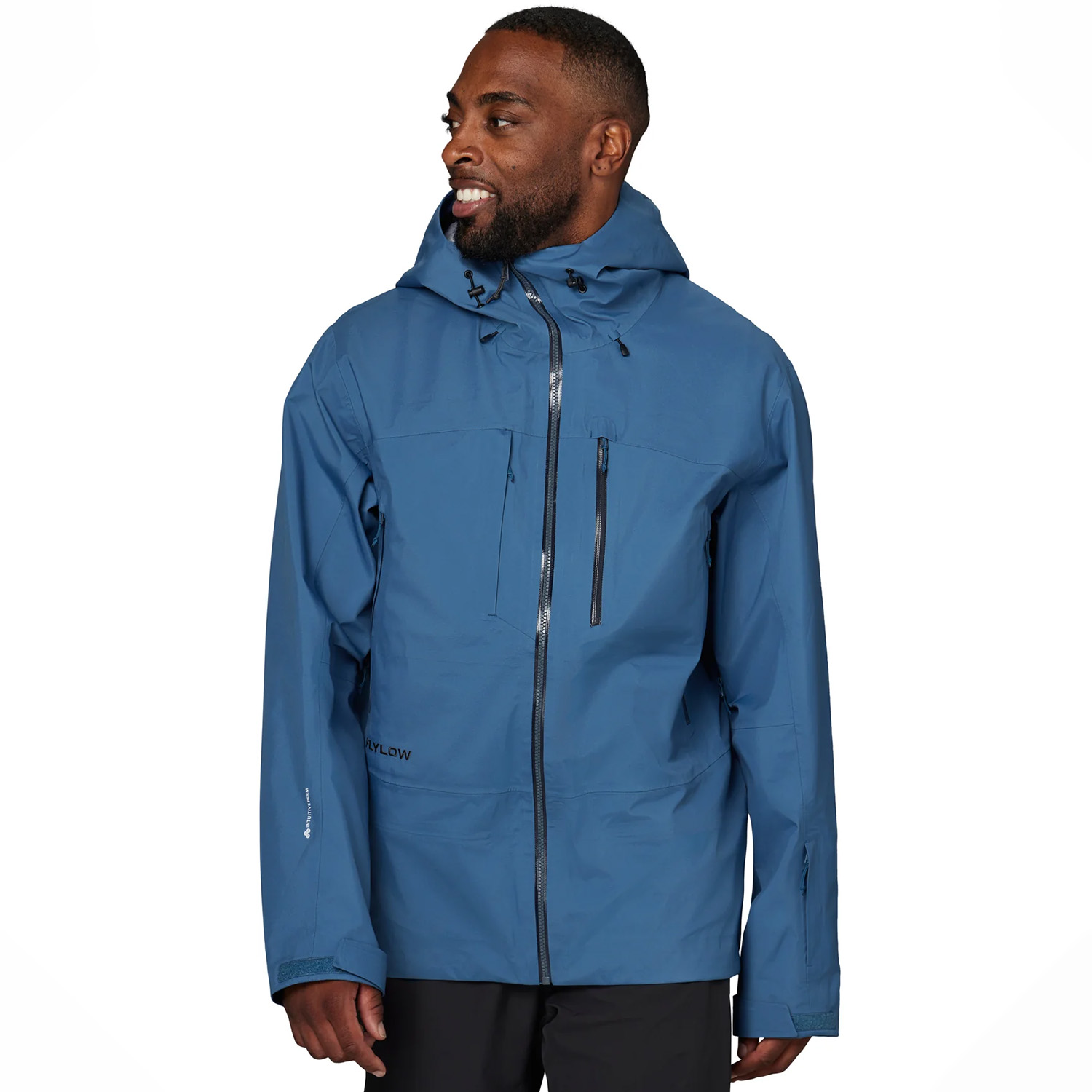
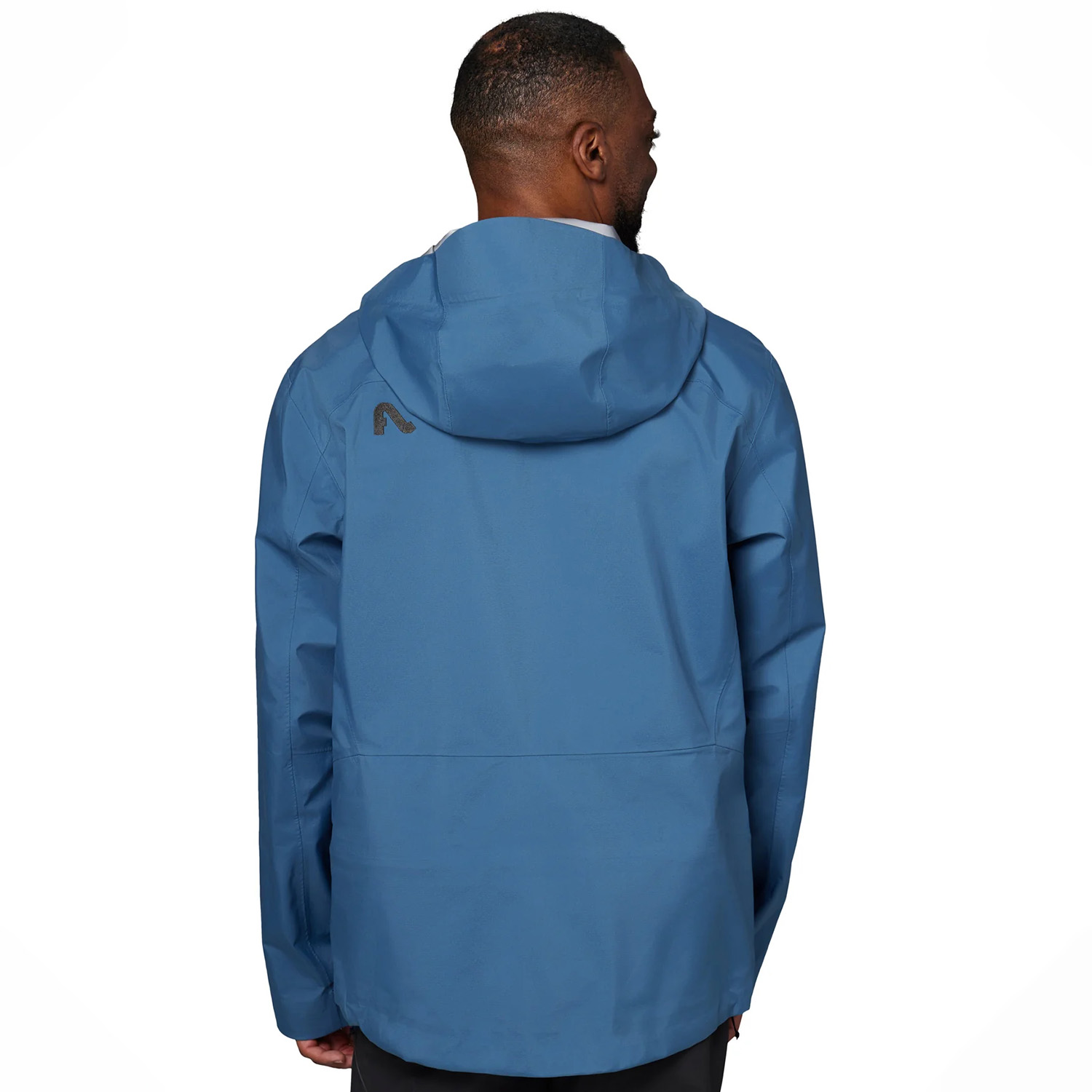
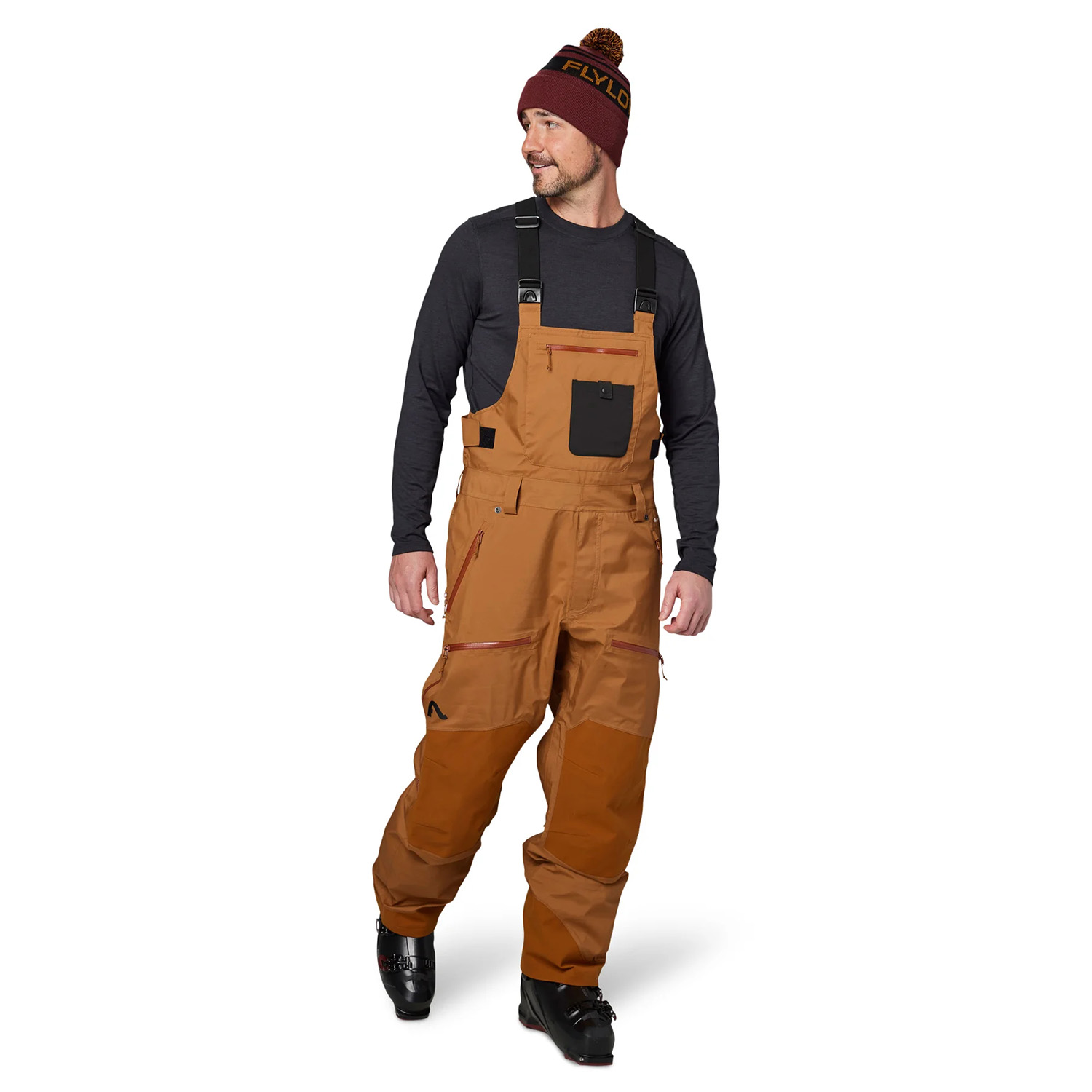
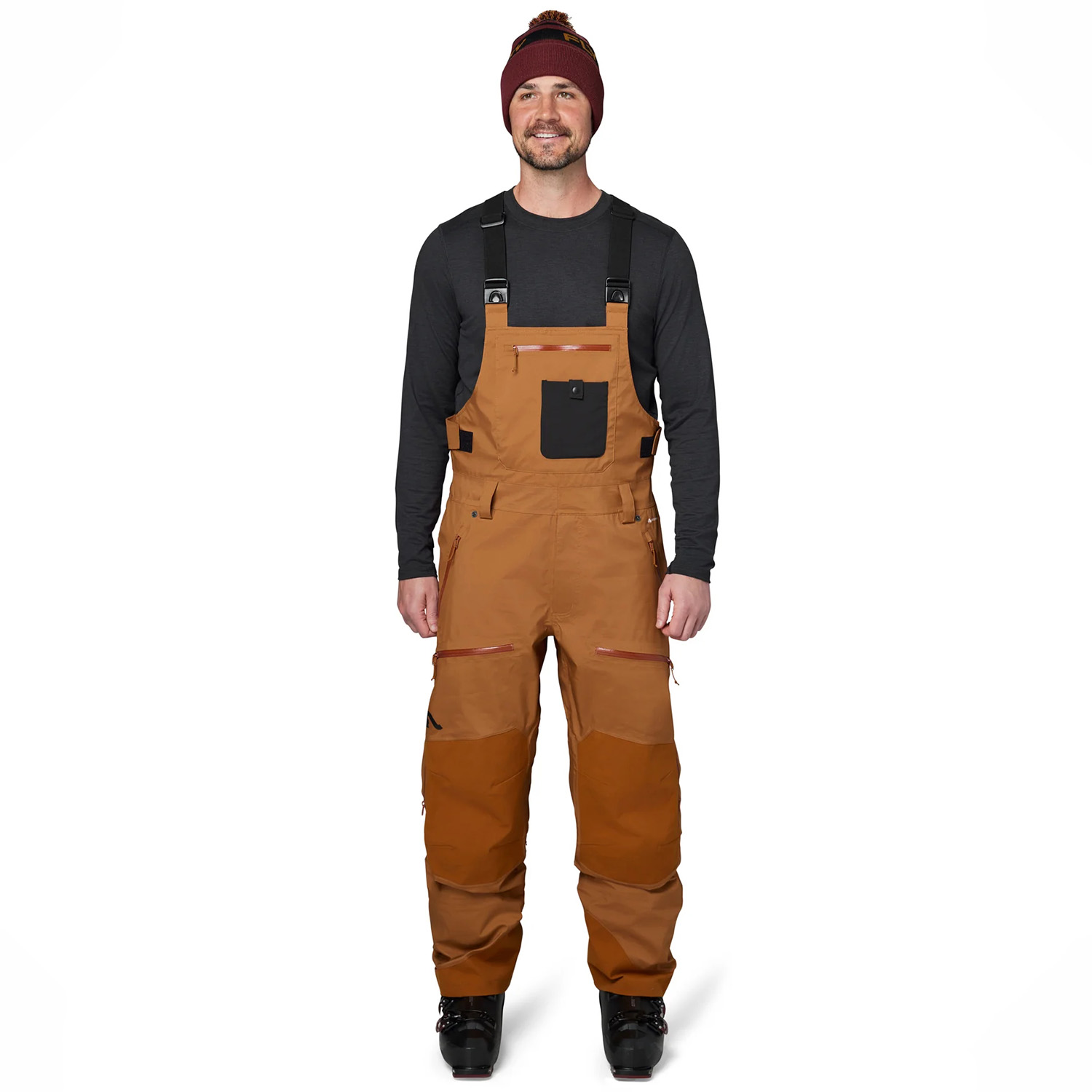
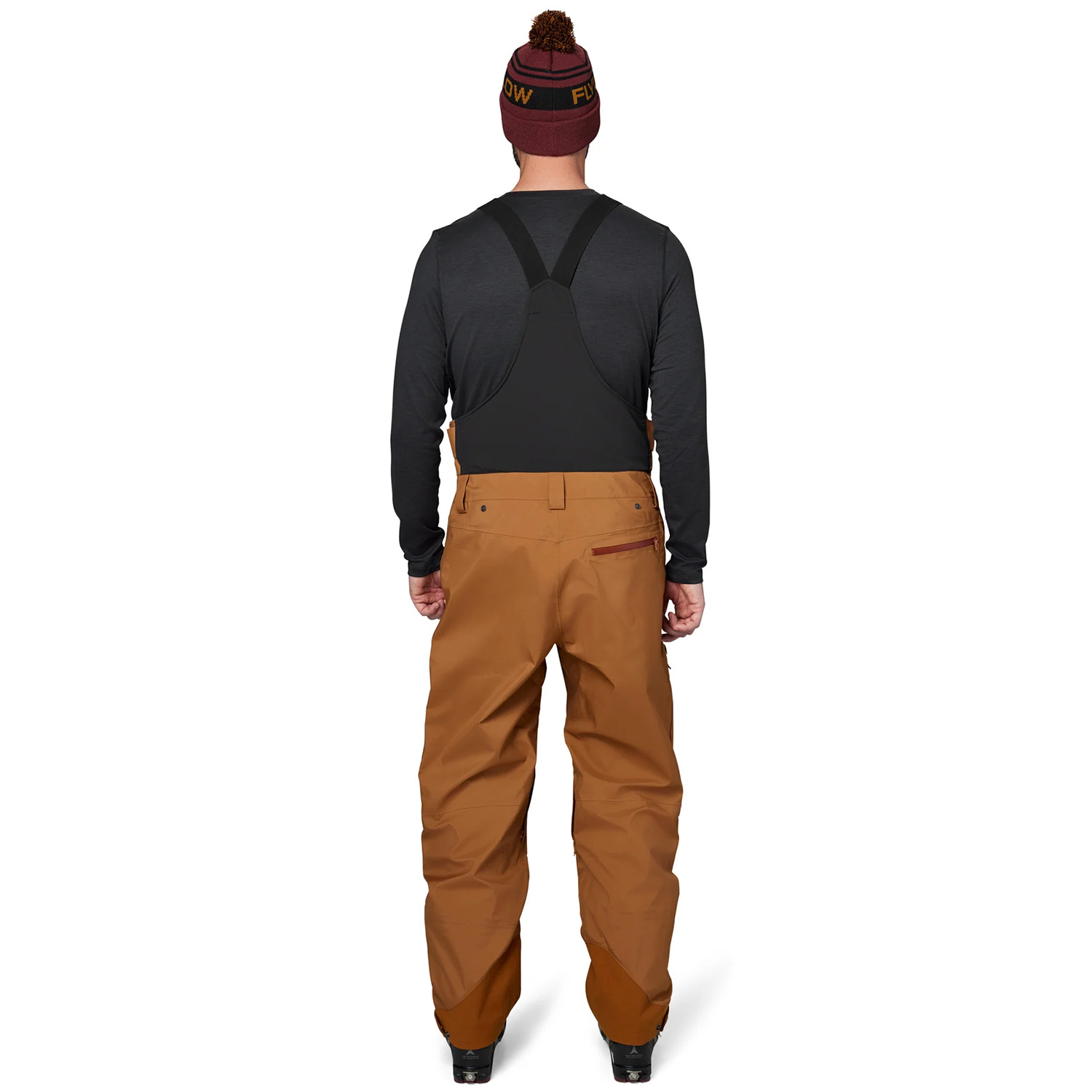
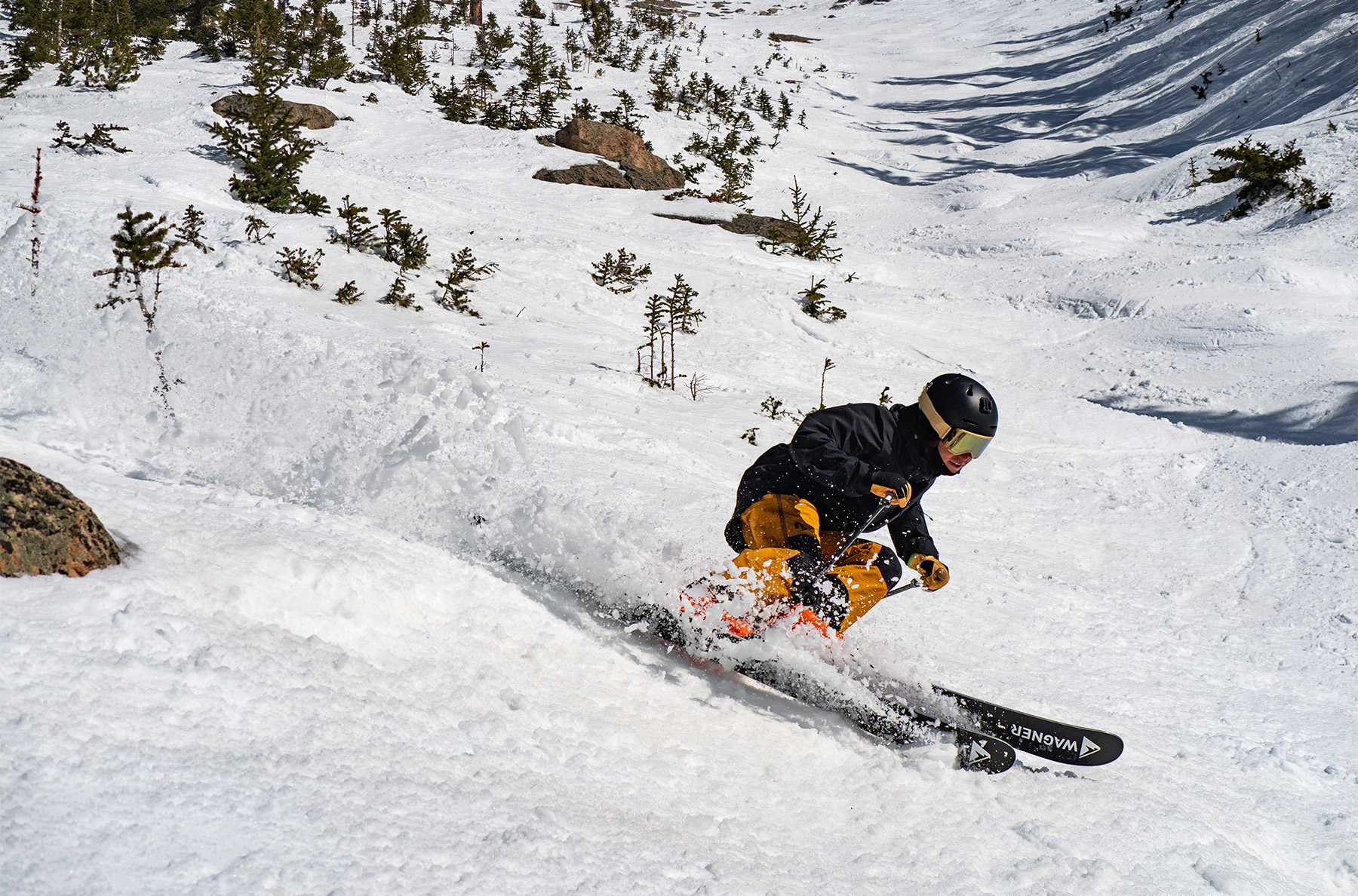
The Lab Coat offers dual exterior chest pockets, two exterior hand pockets positioned high to avoid conflicts with backpack straps, a sleeve pass pocket, and an interior pocket. It’s also got 14-in / 35.5 cm pit zips, a removable powder skirt, and simple velcro cuffs.
The Lab Coat makes for a great 50/50 piece, and it could also serve as a dedicated option for the backcountry or resort, depending on your priorities. Its Perm HD fabric breathes quite well for how protective it is (we haven’t had any issues with moisture penetrating the fabric). It’s fairly light so it doesn’t take up tons of space in a pack, but it’s not so light that we seriously worry about using it daily in the resort. So if you want a shell with above-average breathability, solid weather protection, a roomier fit, and a pretty standard feature set, the Lab Coat remains one of our easiest recommendations.
Since they share a similar Perm HD fabric, we’re pairing the Lab Coat and Baker Perm Bib together here. In terms of breathability and weather protection, the Baker Perm is very similar to the Lab Coat — impressive in both regards.
The Baker Perm Bib is a newer take on Flylow’s classic Baker Bib. The Perm version has a similar feature set and fairly similar fit, though it’s slimmer overall than the (notably roomy) standard Baker Bib.
[The Baker Bib remains one of our top picks if you are looking for maximum durability and prefer a roomy fit.]
The Baker Perm is also a lot lighter than the standard Baker Bib, but the Perm version still has reinforcements at the knees and cuffs, which add to its resort capabilities. The standard Baker is still the winner in the long-term durability department, but like the Lab Coat, the Baker Perm Bib is a very worthwhile option if you want above-average breathability in a pant that’s not super fragile, nor short on features.
Flylow Kane Jacket
Price: $475
Fabric: 3L Intuitive Perm
Size Tested: Medium
Measured Weight: 504 g
Reviewer: Luke Koppa (5’8”, 155 lbs / 173 cm, 70 kg)
The Kane Jacket is Flylow’s lightest and most touring-oriented shell jacket. It’s built with a version of their air-permeable Perm fabric that’s lighter and stretchier than the Perm HD fabric used on the Flylow Lab Coat and Baker Perm Bib. This makes the Kane notably lighter and more packable, and a bit less appropriate for daily resort laps.
Still, the Kane isn’t an ultralight shell, and it feels fairly similar to the Ortovox Deep Jacket, below, in terms of heft and ruggedness. I.e., it wouldn’t be our first pick if you’ll mostly be skiing / riding in the resort and prioritize durability, but I wouldn’t call it 100% touring-specific.
On the skin track, the Kane breathes better than most “20K/20K” fabrics we’ve tested, largely thanks to its air-permeable fabric.
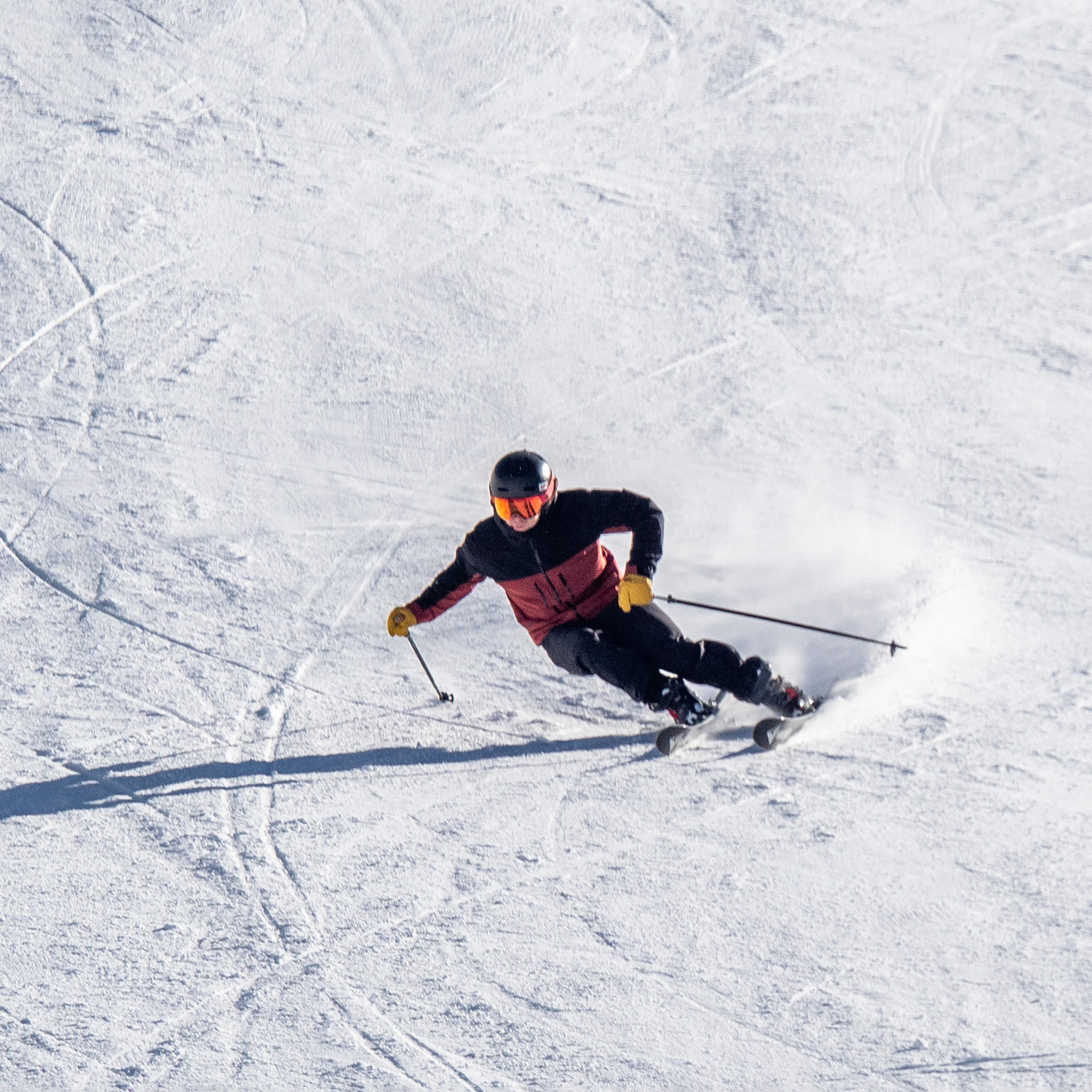
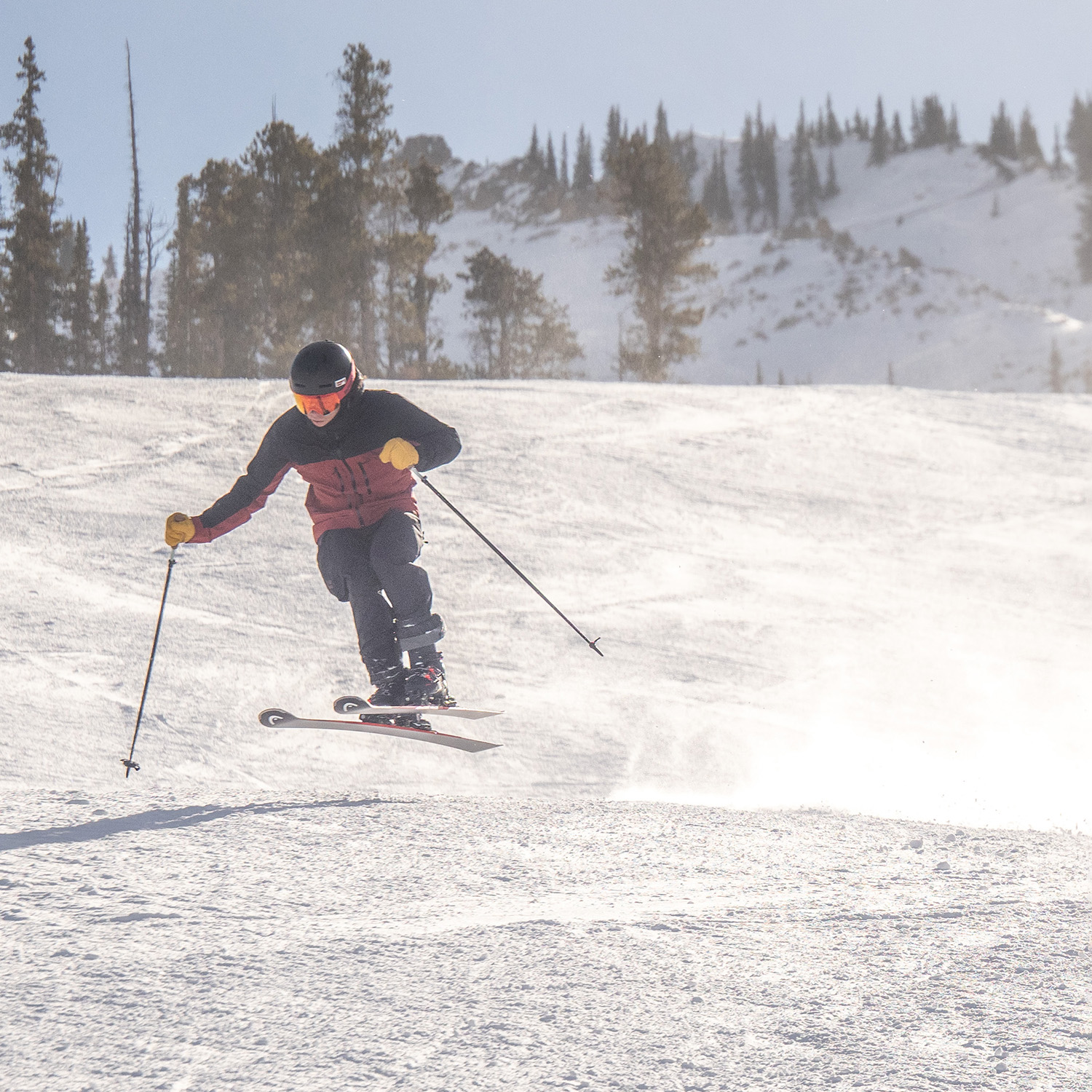
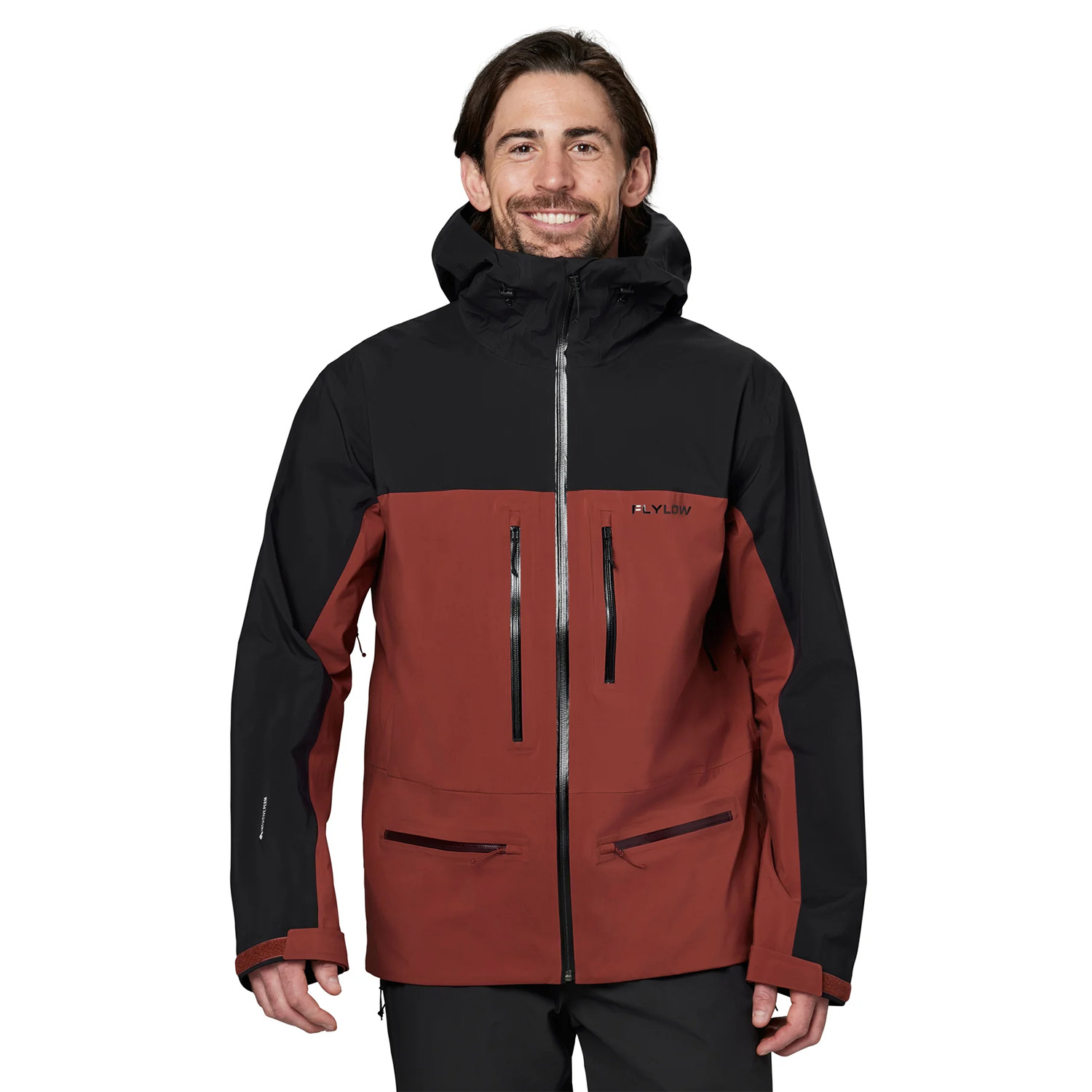
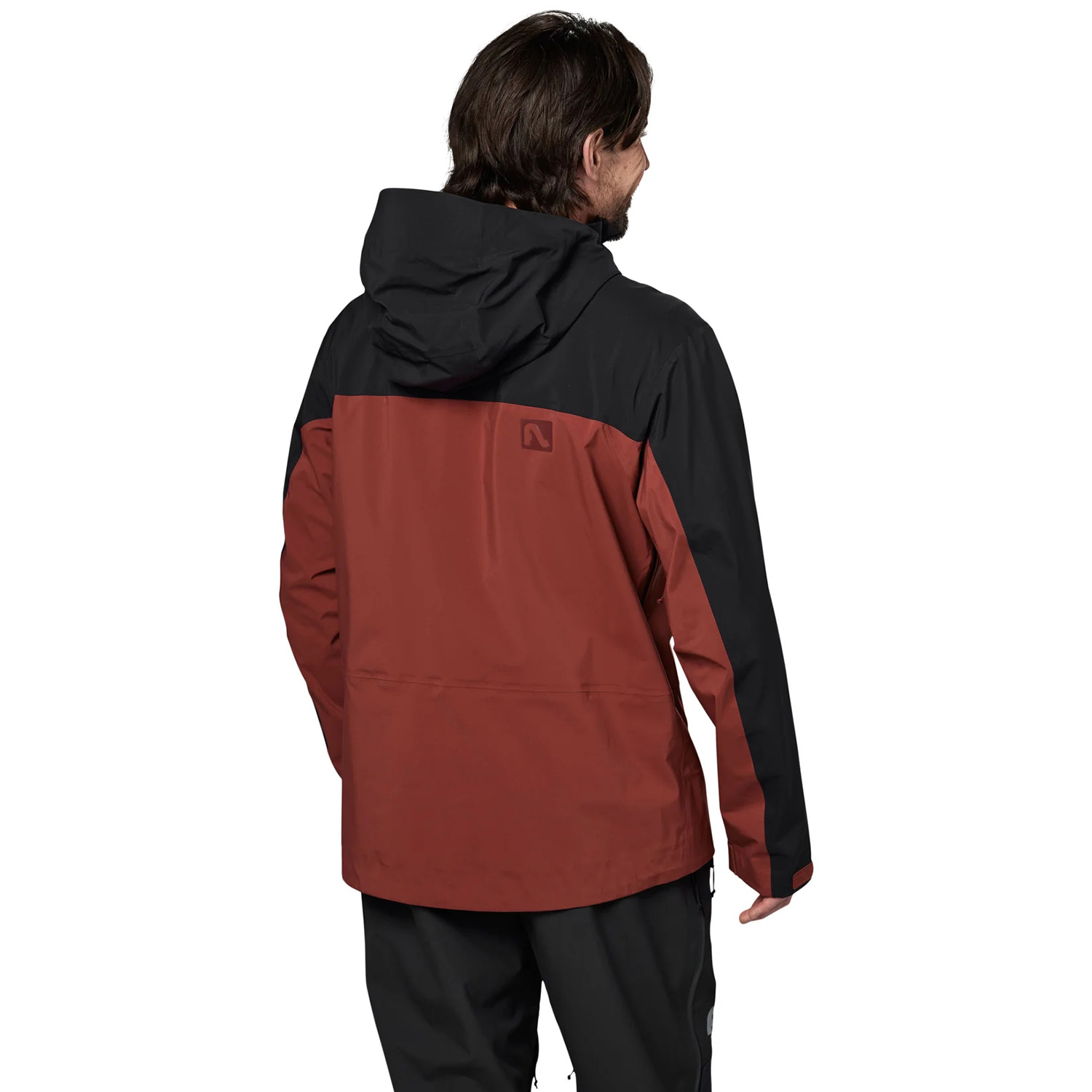
In our experience, air-permeable fabrics make a difference in the breathability department largely because you don’t necessarily have to build up moisture inside them before they start letting it out (which is the case with nearly all non-air-permeable membranes; see our Outerwear 101 articles for more on that).
Once it starts storming, the Kane fends off moisture and wind a bit better than non-waterproof softshells and some of the most breathable hardshells we’ve tried (e.g., Strafe Cham). So if you want some air permeability but you frequently encounter heavy snow, the Kane could be a good fit.
Speaking of, the Kane fits a bit slimmer than the Flylow Lab Coat, but I’d call its fit fairly standard, if not a bit roomier than average.
The Kane has several pockets, and I appreciate the horizontal hand pockets for stashing gloves, though I wish both chest pockets were as large as the wearer’s right pocket; stashing skins in the Kane’s pockets can be difficult when using skins cut for long, wide skis. Other than that, the Kane is fairly bare-bones — no powder skirt and minimal bulk.
Overall, the Kane is a very good touring shell for those who prioritize breathability, still want very solid weather protection, and who prioritize pocket space and a not-super-slim fit over minimum weight.
Flylow Magnum Pant
Price: $375
Fabrics:
3L Tactic softshell w/ recycled 100D face fabric & jersey backer
3L Surface hardshell w/ 150D face fabric & tricot backer
Size Tested: Small
Measured Weight: 656 g
Reviewer: Luke Koppa (5’8”, 155 lbs / 173 cm, 70 kg)
The Magnum Pant is (1) very burly and (2) features nearly full-length outer zips for those who want to get in and out of their pants without taking off their boots.
It utilizes two of Flylow’s 3L, “20K/20K” fabrics: their Tactic softshell (upper) and their Surface hardshell (lower). Both are pretty thick and substantial fabrics — while we just started testing the Magnum this season, we are pretty optimistic about its long-term durability. Like most fabrics that share similar stated ratings for water resistance and breathability, the Magnum is about average in those regards for a high-end 3L shell. Its thicker fabrics make us less inclined to do a lot of touring in it, though its extremely long side zips do also double as massive vents, which goes a long way when you’re working up a sweat.
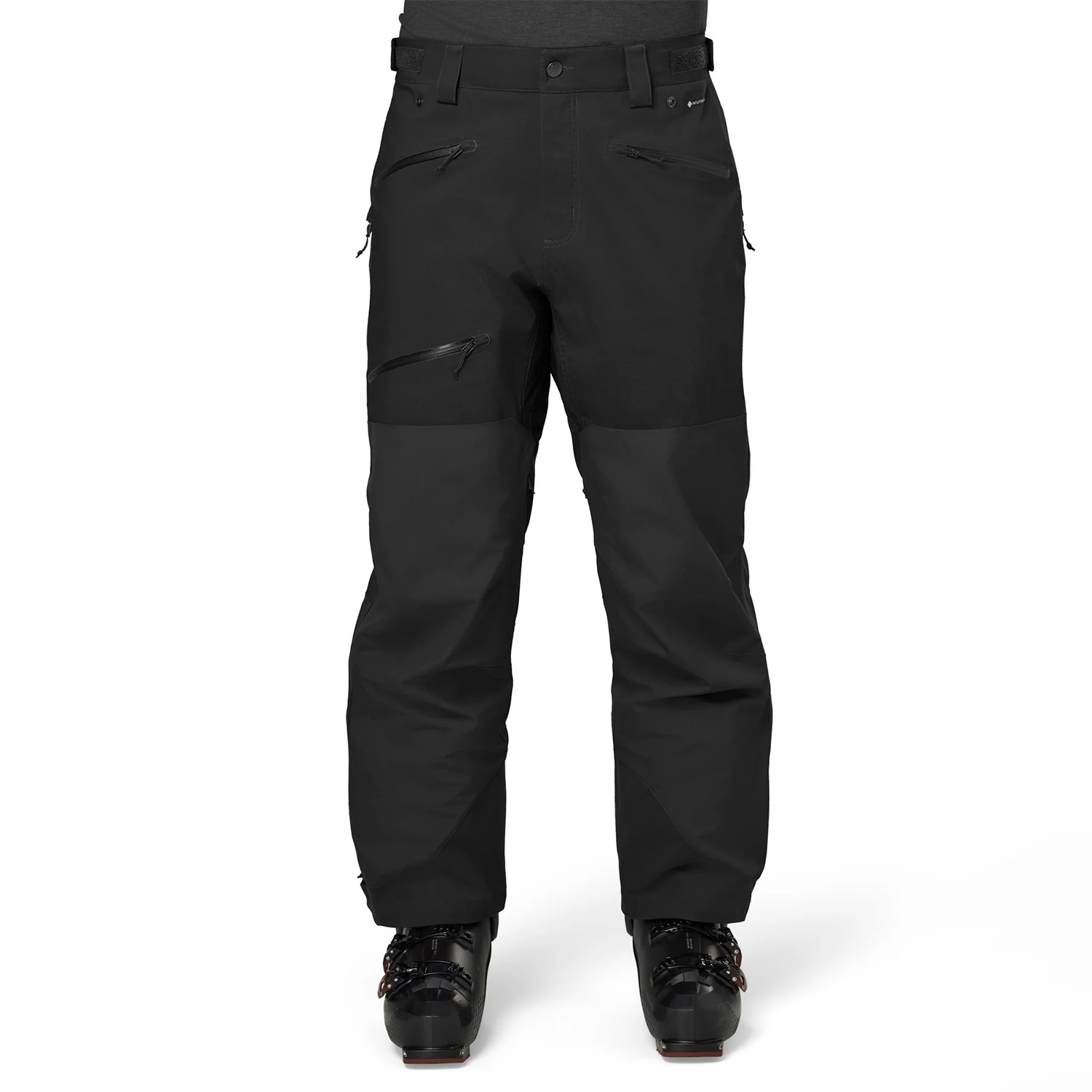
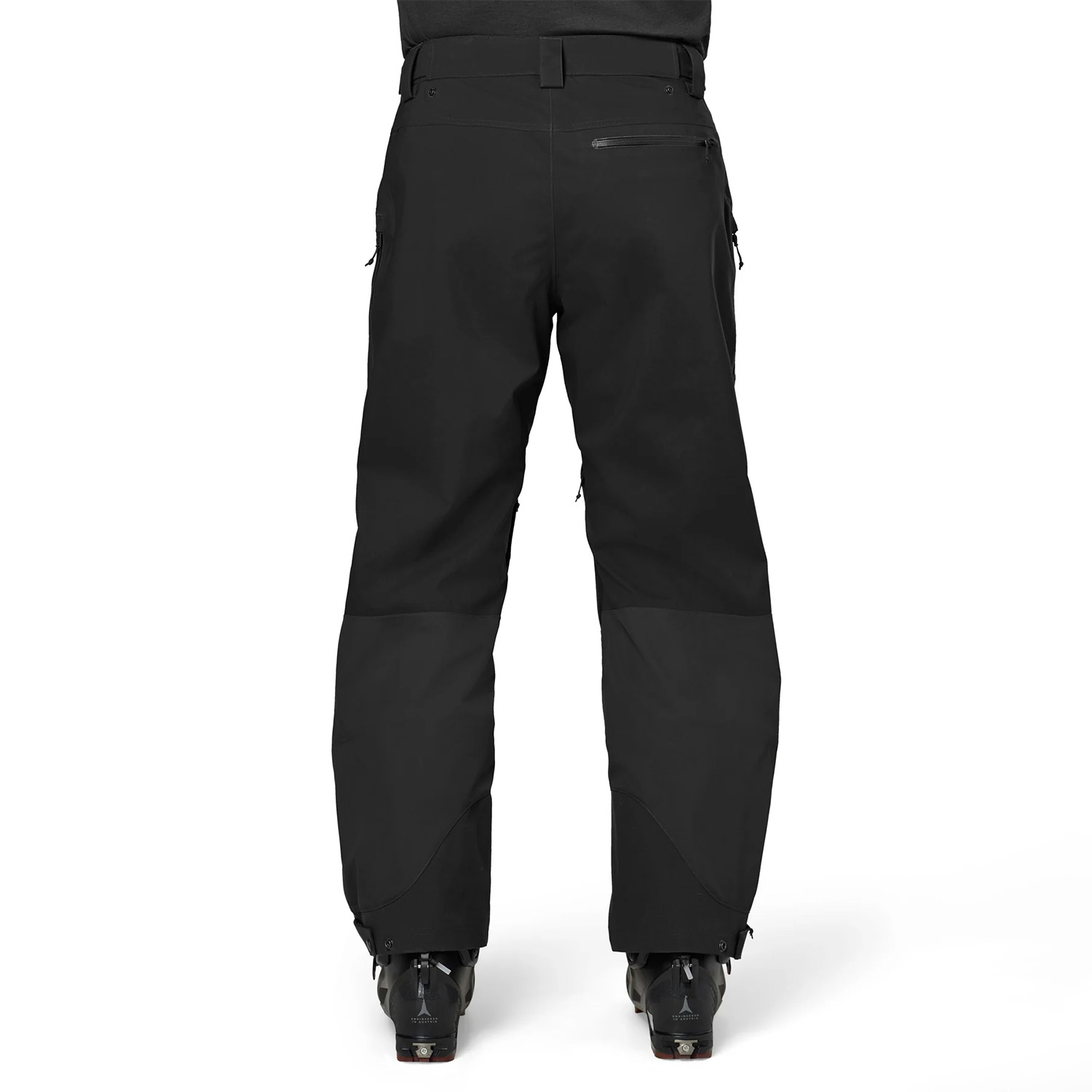
In terms of features, the Magnum offers you two zippered hand pockets, a zippered thigh pocket, and another one on the back of the seat. It also features 1000-denier cuff reinforcements, which add to its rugged feel.
The Magnum’s nearly full-length side zips (Flylow calls them “⅞” zips) are a standout feature, since they seem to be a bit of a rarity these days and certain folks love them because they let you take them off / on without taking off your boots. I rarely do this, but I know our own reviewer, Justin Bobb, is a big fan of that feature. And, as I noted above, they also just equate to absolutely massive vents.
The one somewhat unusual thing about the Magnum is its fit. Most of Flylow’s outerwear fits on the roomier end of the spectrum, and personally, I often find that a size Small is best for me when it comes to their pants (I wear Medium top & bottoms in most other brands). However, the size Small Magnum Pant is very tight on me — it’s much slimmer through the thigh and waist than the Baker Perm Bib, and even more so when compared to the standard Baker Bib. So if you have sized down on Flylow pants in the past, I wouldn’t do so on the Magnum. If you haven’t tried Flylow pants before, I’d probably just stick with your regular size.
Size quirks aside, the Magnum Pant is a solid choice if you need a burly shell pant that makes it easy to get in / out of when wearing bulky footwear like ski and snowboard boots — or you just like the sound of massive leg vents.
Jones Shralpinist Recycled Gore-Tex Pro Jacket & Pant
Price: $849 (jacket) $599 (pant)
Fabric: 3L Gore Tex Pro Most Breathable (40D) & Gore Tex Pro Most Durable (70D)
Sizes Tested: Large
Measured Weight: 670 g (jacket) 512 g (pant)
Reviewer: Jed Doane (6’2”, 165 lbs / 188 cm, 75 kg)
The Shralpinist 3L Gore-Tex Pro kit is the top-of-the-line option in the latest Jones outerwear collection. It features a body-mapped design in which two different Gore-Tex Pro fabrics are used: Most Rugged, which focuses on durability, and Most Breathable, which is a thinner fabric with an (obvious) focus on breathability.
Gore-Tex is known for its uncompromising waterproofing, but with the rise of other breathability-focused fabrics, they’ve modified their line to allow for more breathable fabrics. See this “oldie but a goodie” episode of the Blister podcast from 2019 for more explanation on the new fabrics. Jones placed the Most Rugged membrane over high-wear areas including the knees, butt, and arms, otherwise using the Most Breathable membrane (all the lighter-color areas in the jacket).
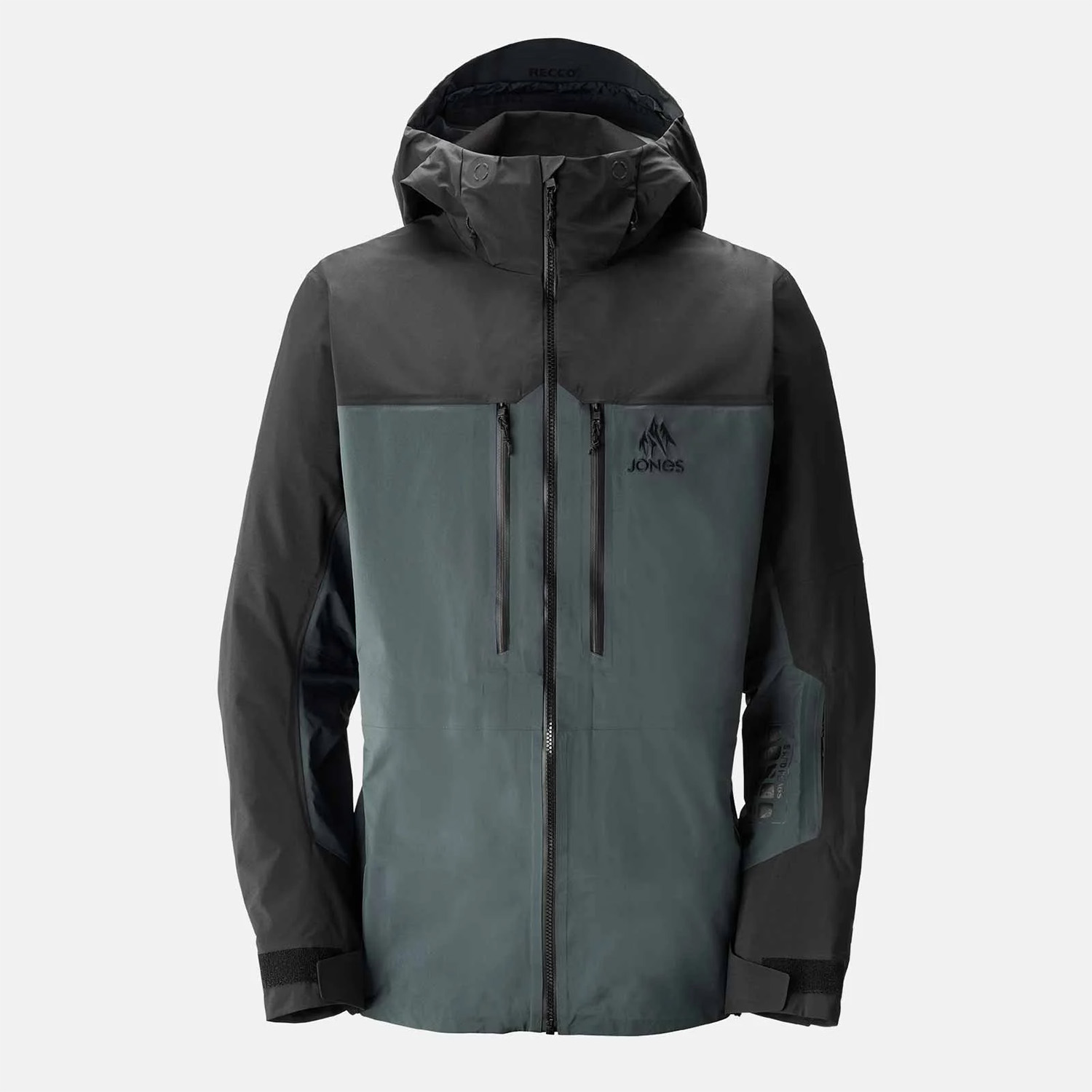
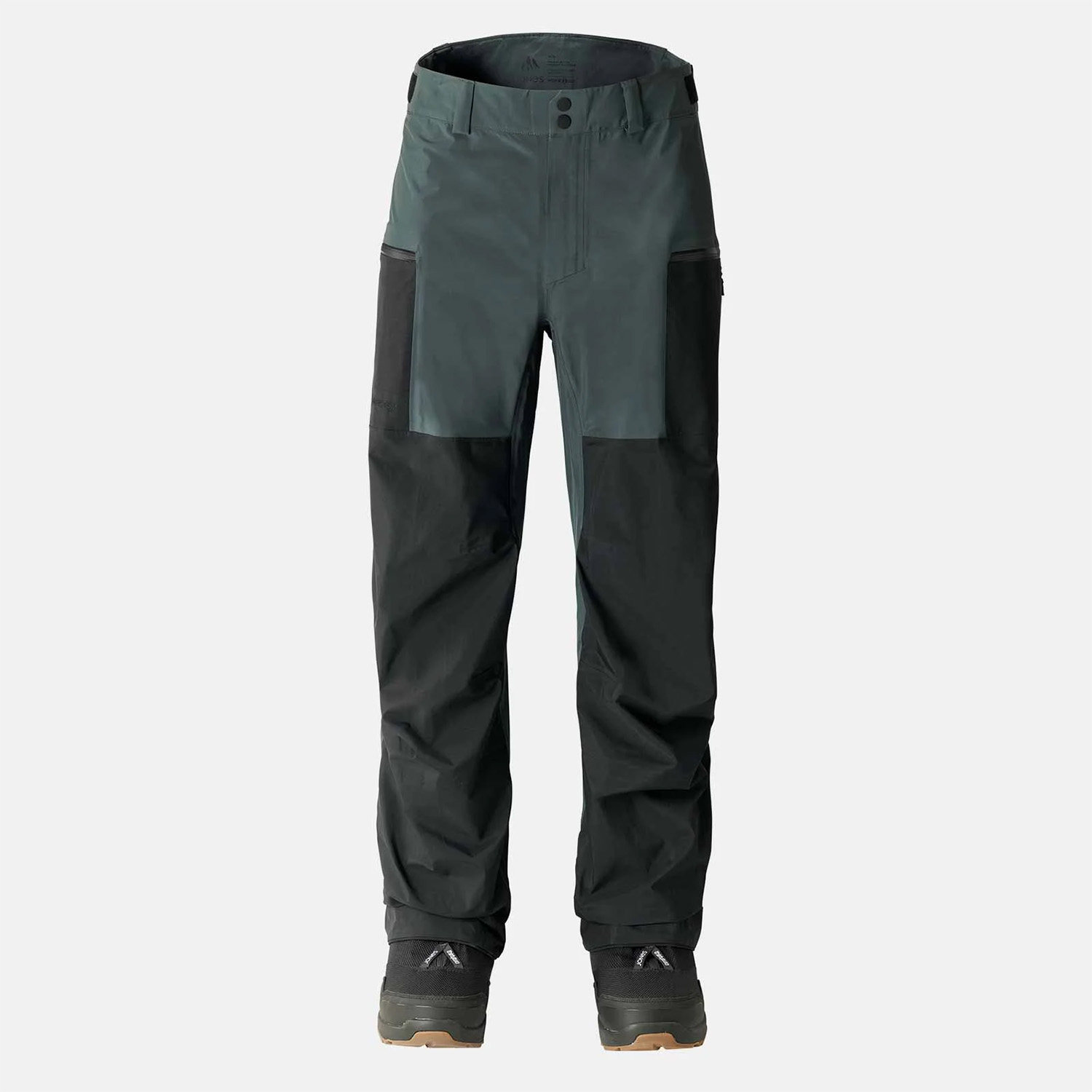
I love my ultra-breathable shells, but live in the Pacific Northwest and have been caught in one too many rainstorm without Gore-Tex. This design seemed like an ideal compromise, and I was excited to try it out.
Overall, the Shralpinist 3L kit’s design strikes a better balance between waterproofing and breathability than any other Gore-Tex Pro piece I’ve used. Gore Pro, even their new Most Breathable membrane, still pales in comparison to air-permeable membranes on the market when it comes to breathability, but offers an unmatched level of water resistance that many riders ultimately need to stay safe in the mountains. The difference is subtle, but I was definitely more comfortable on the uphill in the Shralpinist 3L kit than other Gore-Tex Pro pieces I’ve worn. Pairing the shell with a very breathable insulator (in my case, a Helly Hansen Lifaloft Air jacket) also helped with this. Notably, despite this increase in breathability, I found no change in the quality of the water resistance through wet PNW powder days. I also found the durability to be excellent through bushwhack-heavy tours and slogs through sopping-wet thick trees. For days when a wet experience is even remotely possible or trips deeper into the backcountry, I found myself leaving my more breathable fabrics behind and favoring the dependability of the Shralpinist jacket and pant.
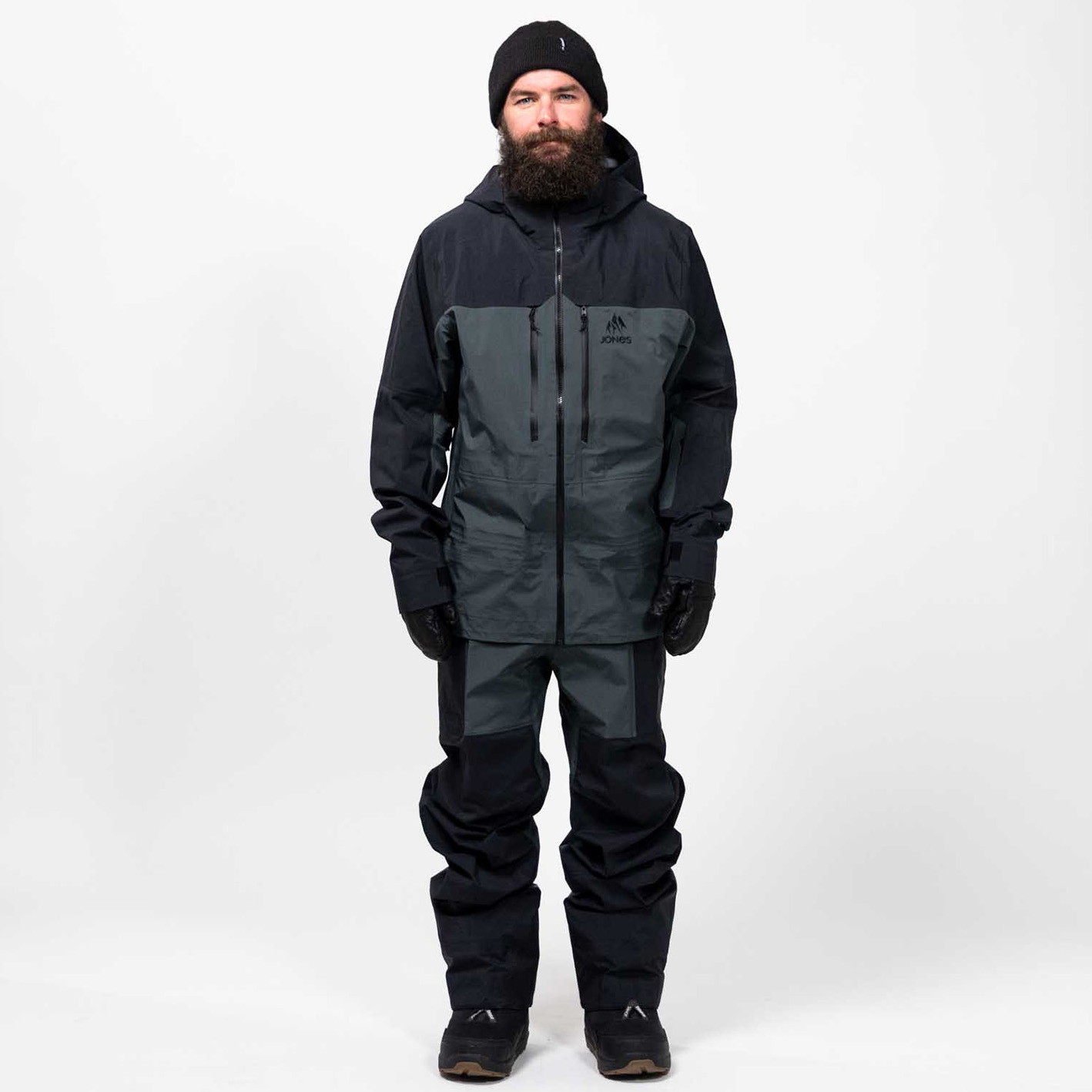
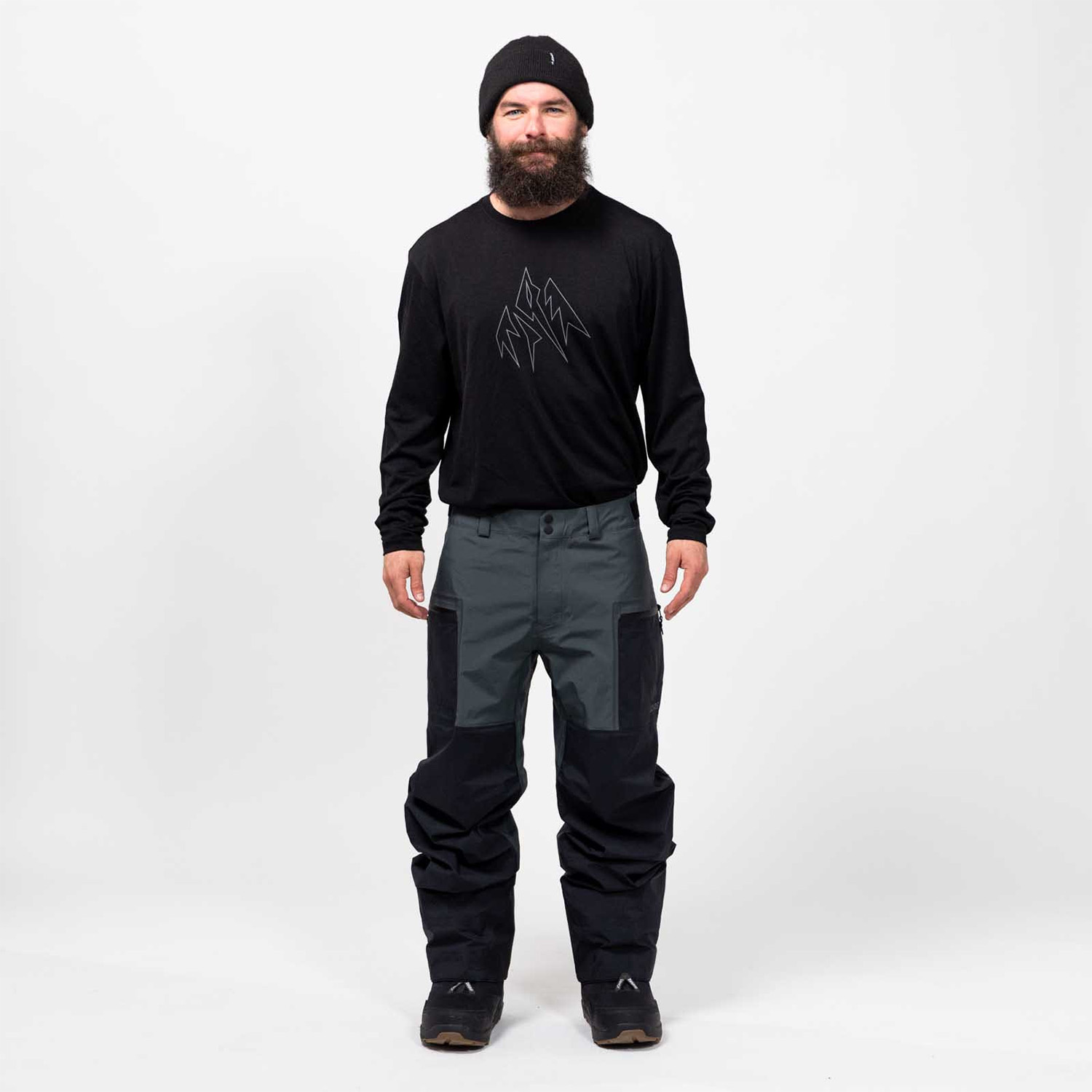
I really enjoyed the fit of this kit compared to other hardshells, including my beloved but baggy and short-armed Patagonia Powslayer, which featured an older iteration of Gore-Tex Pro. The Shralpinist jacket has a slim fit that was not constricting for everyday touring and I found long enough for my tall frame. The sleeve length was perfect for me, and it could be slightly too long for those with shorter arms, but not to the extent that I would consider a sizing change. Cuff diameter, a pet peeve of mine, was perfect, and fit over my Hestra Fall Line and other slim-cuff gloves quite easily. The pants had a similarly slim fit but were much less tight than other touring-specific pants I’ve worn in the past. I’m generally against using Velcro and stretch bands to fine-tune the fit of snowboard pants because many inevitably stretch out and become useless over the expected life of the pants, but the stretch material on the Shralpinist 3L pant does seem to be very high-quality and I haven’t noticed any change in the stretch during my several months of testing. I also appreciate the normal belt loops, which let me use an old stretchy Arcade belt without much bulk or weight.
The Shralpinist 3L kit is generally well thought-out from a design perspective. Notable features include generously sized mesh inner chest pockets that easily accommodate skins, a breath of fresh air compared to the too-small or one-side-only inner pockets on other touring jackets I’ve used. The outer chest pockets are well-placed, and I appreciated the subtle inclusion of a stretch band across the front of the left pocket that keeps a phone secure while maintaining easy access, a much better design (in my opinion) than full-mesh secondary inner pockets or additional zippers that are cumbersome and clumsy. The cord-lock system is sleek and easy to use, and the hood is roomy and compatible even with large-volume helmets like my Smith Nexus. The pant pockets are well-placed, and my Area Evo5 transceiver sits securely in the inner mesh pocket. I’m a stickler for pocket placement on touring pants, and I found that the Shralpinist Gore-Tex Pro Pants’ were comfortable while touring with a transceiver. The vents extend to the knee and are relatively out of the way.
I did notice a few minor design issues. The left forearm pass pocket is placed pretty awkwardly, and I would intermittently feel my pass when adjusting my helmet or while riding, especially with my shoulders and elbows both flexed simultaneously. As a touring-specific jacket, this might not be an issue for most users, but I prefer the pass pocket to be up closer to the shoulder and out of the way (or not present at all). The powder skirt does not feature a front closure, to save weight and bulk. I was curious about this feature since I rarely use the front button closure for my powder skirt and find them cumbersome. Unfortunately, I found that this design did not keep out snow and wind as much as I would have liked, which was especially difficult when wearing the Shralpinist Gore-Tex Pro pants or any other non-bib pants. There is a single jacket-to-pant interface button closure that did help with this. I wouldn’t call this a dealbreaker, but I think the subtle inclusion of a single-button closure would help with weather protection.
Overall, for those who live in wetter climates but are still looking for a breathable option, the Jones Shralpinist 3L kit is a solid option using top-of-the-line materials.
Orotovox 3L Deep Shell Jacket
Price: $730 (jacket)
Fabric: 3L Dermizax NX laminate w/ merino inserts
Size Tested: Medium
Measured Weight: 591 g (jacket)
Reviewers:
- Dylan Wood (5’10.5”, 160 lbs / 179 cm, 73 kg)
- Luke Koppa (5’8”, 155 lbs / 173 cm, 70 kg)
The Deep Shell Jacket is one of Ortovox’s highest-end jackets, meant to be a lightweight “freeride” shell that’s designed for the backcountry.
The Deep Jacket uses a Dermizax NX laminate, which is the most breathable option in the Dermizax lineup, while still offering a stated 20K+ water resistance rating. In use, I’ve found the Deep Jacket to be plenty protective in wet snow, while I’d say it breathes a bit better than average; not quite as well as the Trew LW kit, Beringia St. Elias, or Flylow Kane, but a bit better than most of the other shells here. The Deep’s fabric is also a bit more supple and comfortable than traditional hardshells like the Rab Khroma Diffuse, but not as stretchy as the Patagonia SnowDrifter, Dakine Sender Stretch, or Beringia St. Elias 2.0.
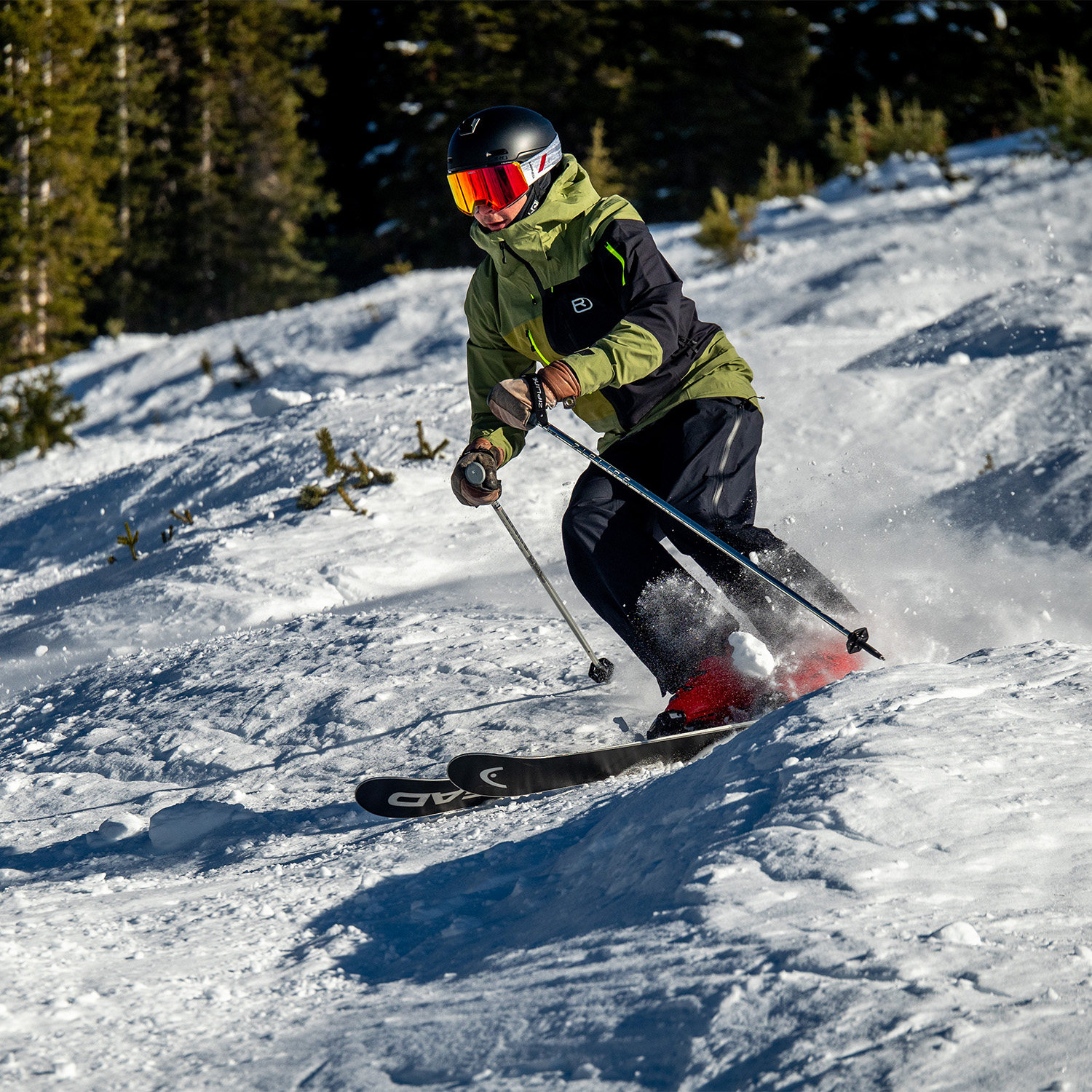
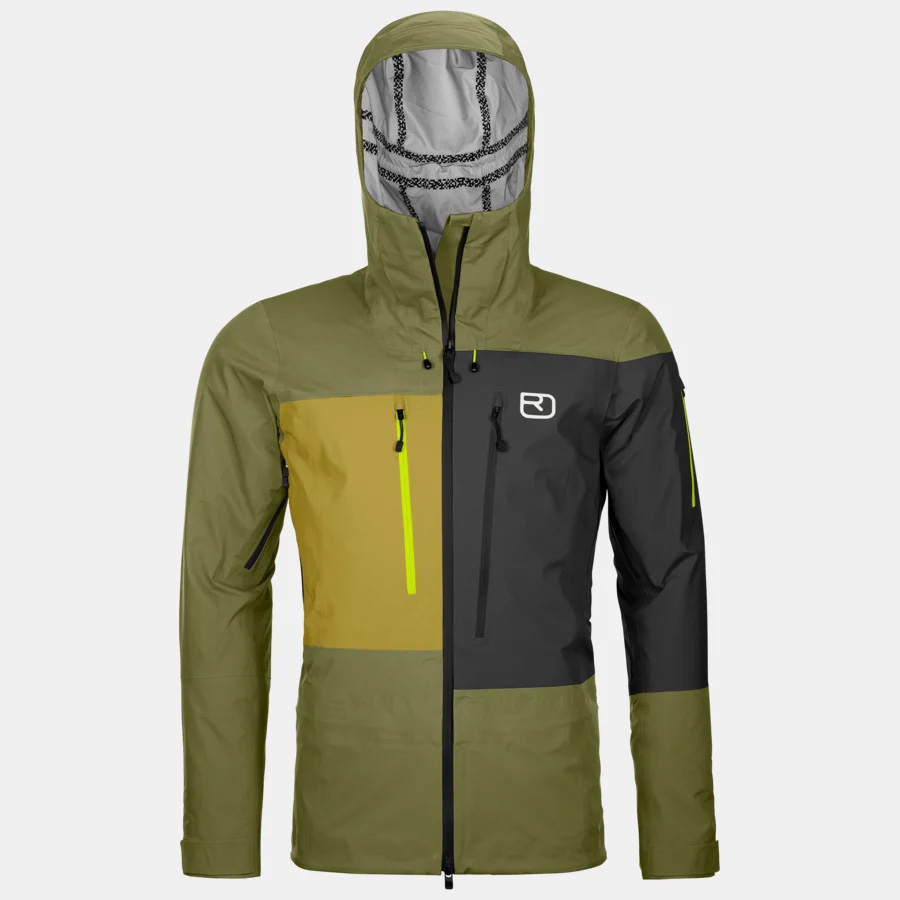
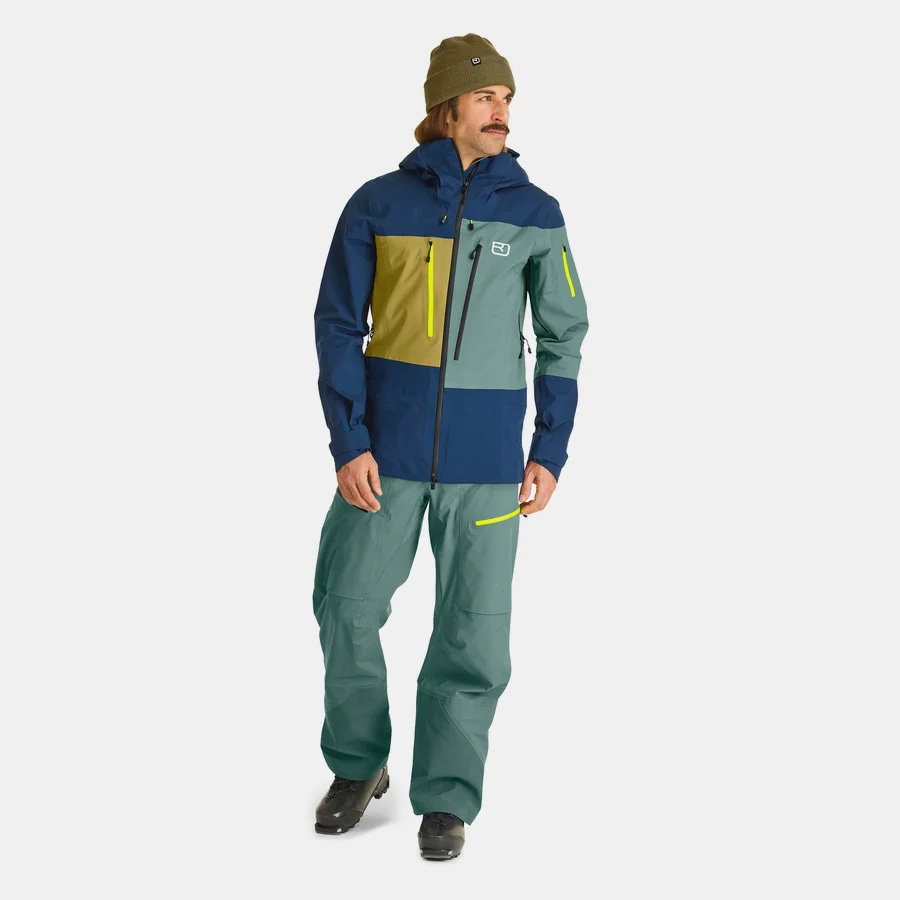
One of the polarizing aspects of the Deep Jacket will probably be its fit. Ortovox calls its cut “loose,” whereas I’d call it quite narrow — especially through the hips and arms. Maybe it’s just a European vs. North American thing, but if I (Luke) were to buy this piece, I’d definitely go up a size, since I prefer a slightly roomier and longer fit. The Medium fits me well enough, but I don’t like feeling my shells pulling on my hips, shoulders, or elbows, and the size Medium (my usual size) Deep Jacket does this on occasion. If you have particularly wide hips and/or shoulders, I’d probably size up.
The Deep Jacket’s feature set seems nicely sorted, with multiple useful chest pockets (with a lined phone sleeve), a small bicep pass / lip balm pocket, and some big velcro cuffs. There are also some small underarm vents and a pretty nicely patterned, helmet-compatible hood.
As with many of their shells, Ortovox also adds some small panels of merino fabric to the lining of the Deep Jacket, primarily at the chin and chest, for just a bit of added warmth in those areas. I appreciate this when just wearing a baselayer underneath this jacket in windy conditions; otherwise, I don’t notice them much at all, which is probably a good thing.
If you prefer a more average or roomy fit and/or a softer and more supple fabric, I’d check out the Flylow and Beringia pieces here. But if you like a slimmer fit and want slightly above-average breathability, impressive weather resistance, and a fairly low weight — and are willing to pay a premium to get all that — check out the 3L Deep Shell Jacket.
Outdoor Research Snowcrew Jacket & Bib
Price: $349 (jacket) $299 (pant)
Fabric: 2L Ventia laminate w/ 75D X 150D face fabric
Insulation: 60-g & 80-g synthetic VerticalX ECO
Size Tested: Medium
Measured Weight: 918 g (jacket) 752 g (pant)
Reviewers:
- Dylan Wood (5’10.5”, 160 lbs / 179 cm, 73 kg)
- Luke Koppa (5’8”, 155 lbs / 173 cm, 70 kg)
The Snowcrew kit from Outdoor Research is ideal for those who prefer the simplicity of an insulated shell over a complex layering system, and it offers a lot of performance relative to its price.
The Snowcrew’s 2L Ventia laminate has kept us dry throughout the winter, including lots of use during many storm days. The kit’s synthetic (and 85% recycled) VerticalX ECO insulation feels quite light and fluffy for a synthetic, making the Snowcrew feel less cumbersome than many insulated shells. With a mix of 60-g and 80-g insulation, I’d say the Snowcrew feels like it offers the equivalent warmth of a pretty average synthetic midlayer (e.g., Patagonia Nano-Air), since those insulation weights are quite common for standalone midlayers.
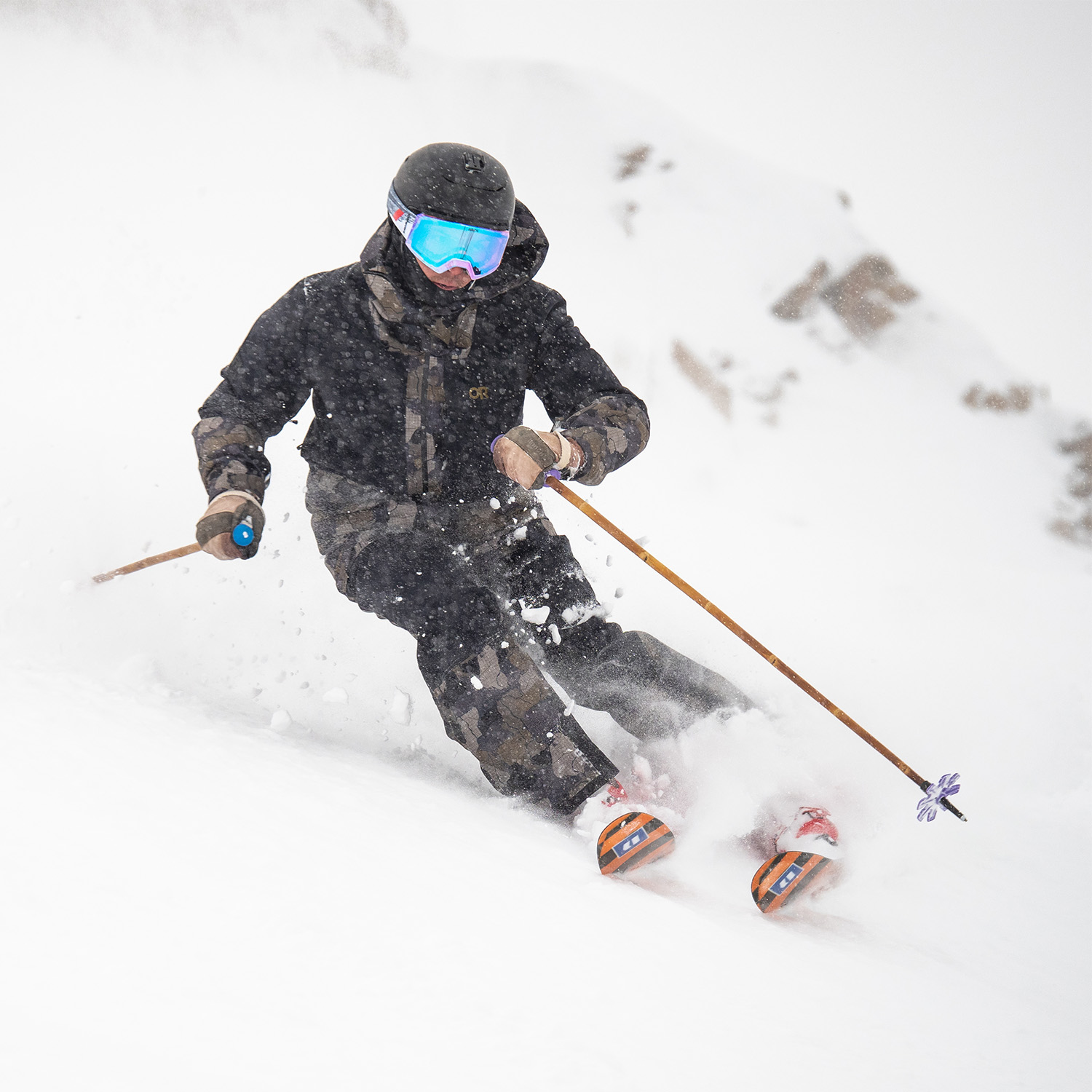
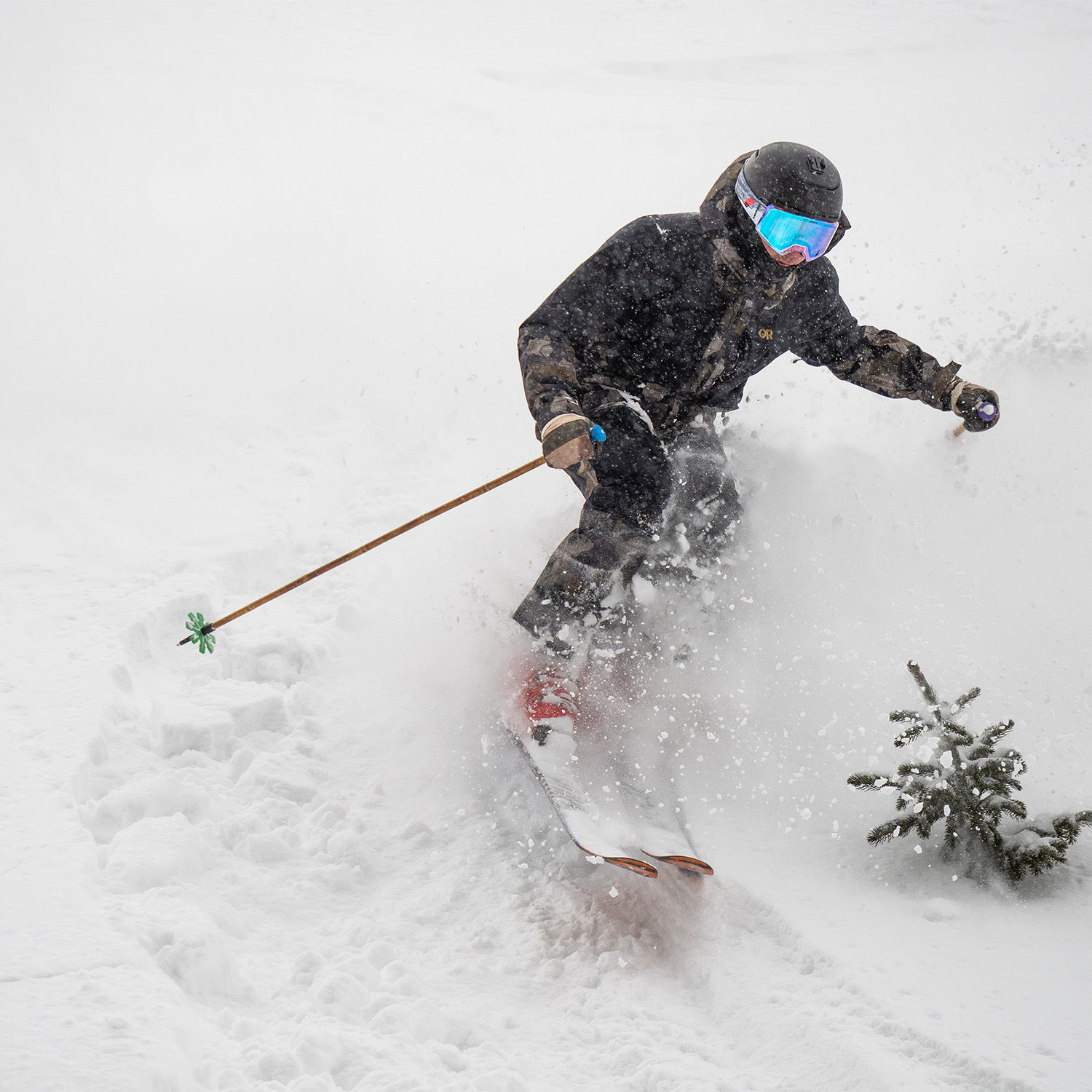
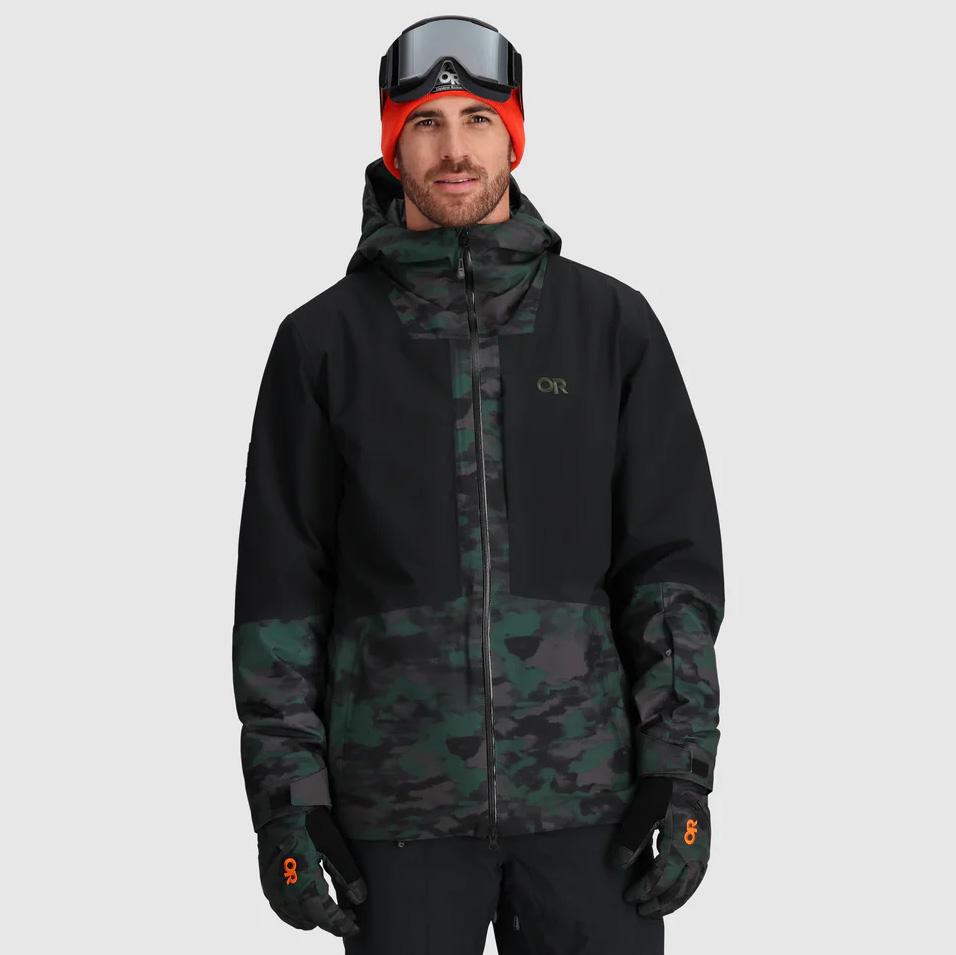
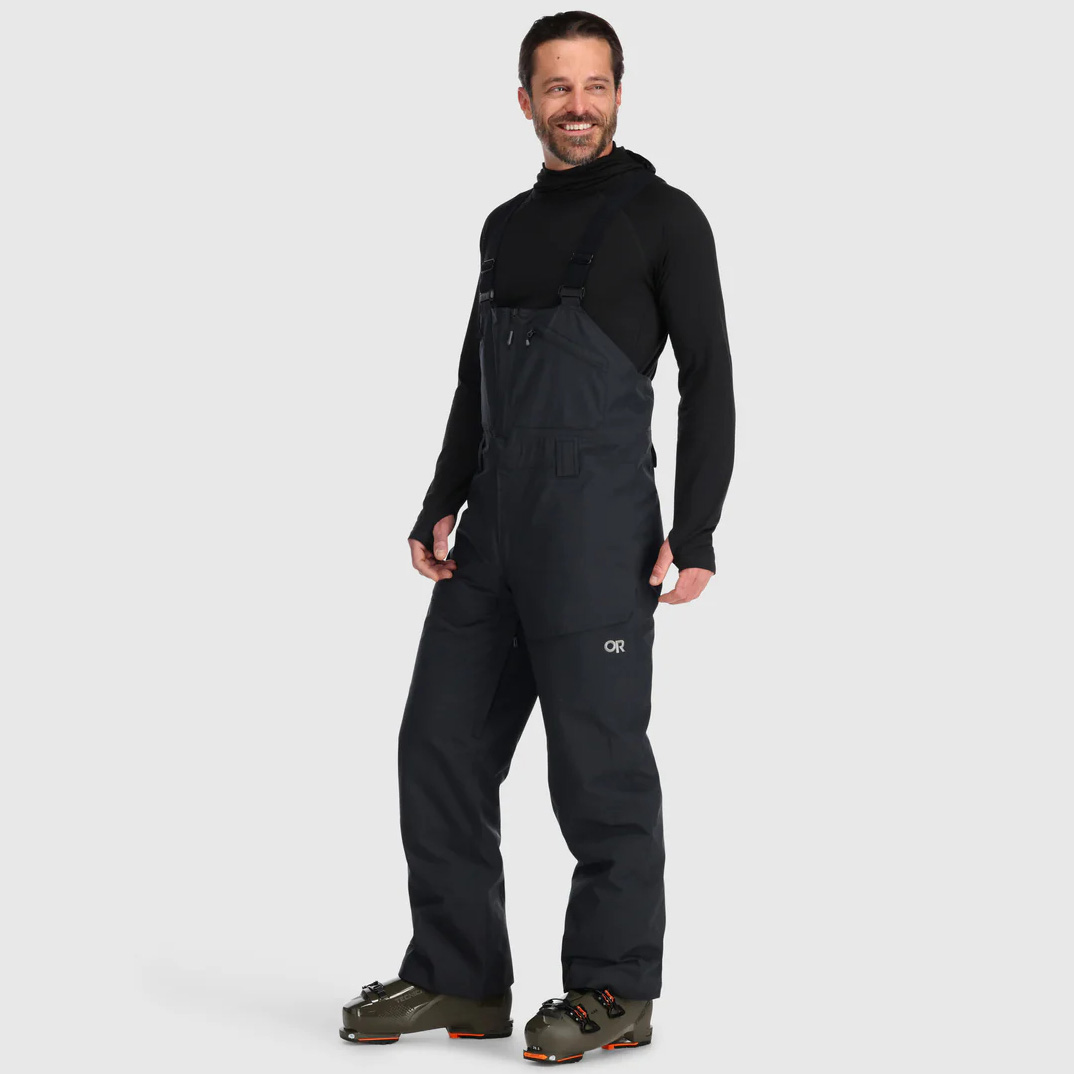
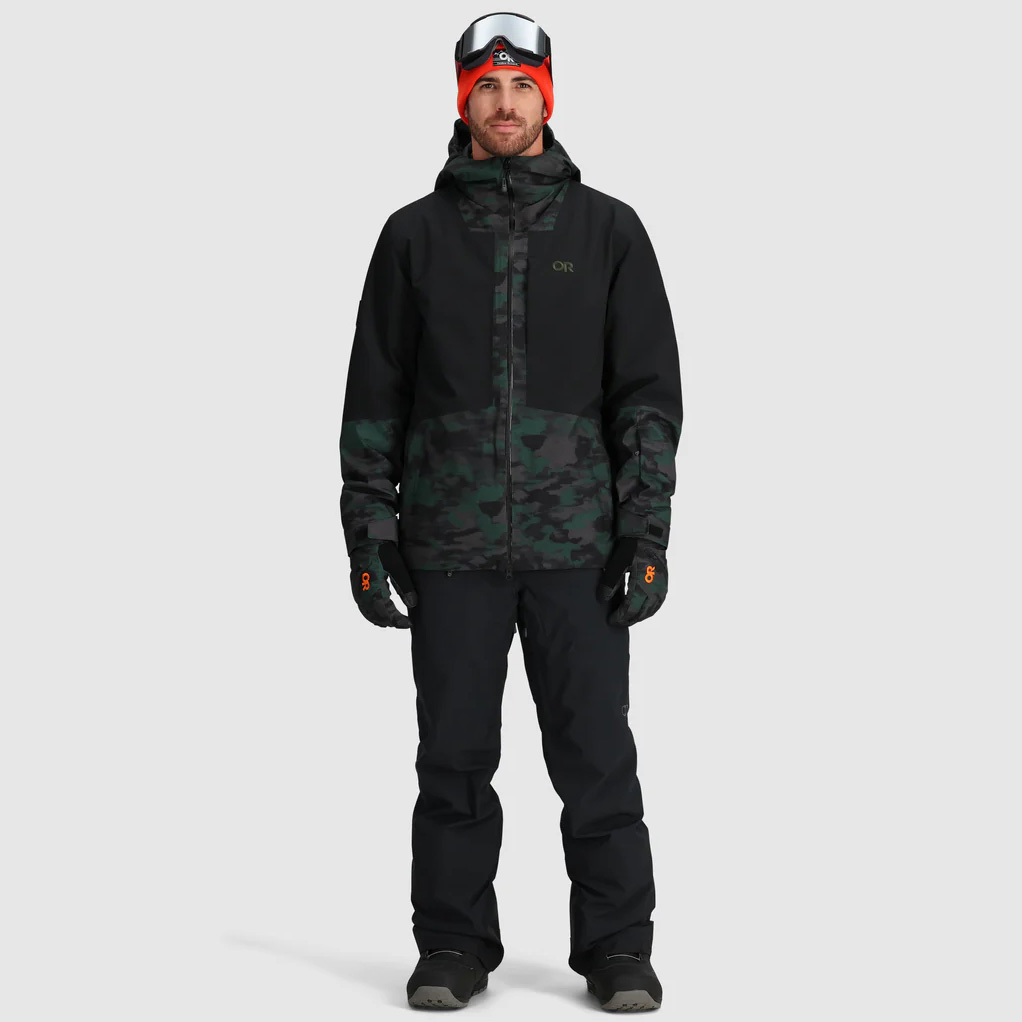
The downside with the Snowcrew is that it can start to feel pretty hot on days when the temps are getting close to freezing and/or you’re working hard, but on colder days, we welcome its cozy feel. So it’ll just depend on your preferences regarding layering systems, the temperatures in which you frequently ski / ride, and how hot or cold you run.
The Snowcrew’s fit is neither particularly slim nor very baggy, making it worth a look for a lot of folks, and it’s still got just about all the usual snow-oriented features we’d expect. Plus, between its actual price and the fact that it could potentially serve as both shell and midlayer, the Snowcrew’s value is very impressive.
Patagonia SnowDrifter Bib
Price: $399
Fabric: 3L H2No laminate w/ 50D 100% recycled stretch polyester & knit backer
Size Tested: Medium
Measured Weight: 651 g
Reviewer: Luke Koppa (5’8”, 155 lbs / 173 cm, 70 kg)
When Patagonia launched the first iteration of the SnowDrifter, we were really impressed by its overall comfort, and it’s versatility across resort and touring settings.
This season, Patagonia updated the SnowDrifter kit, and the Bib probably saw the most change. One of the main things we didn’t love about the original SnowDrifter Bib was its fit — particularly, it had a ton of extra fabric / room around the seat and back, which added bulk under other layers and just made it look a bit weird.
The new SnowDrifter Bib’s fit feels much more refined. It is fairly similar from the knee to the cuff (being fairly average, if not slightly slim there), but then it has a more streamlined (but not super trim) fit through the seat, back, and chest. This also leads to less drooping when you’ve got gear in its bib and thigh pockets.
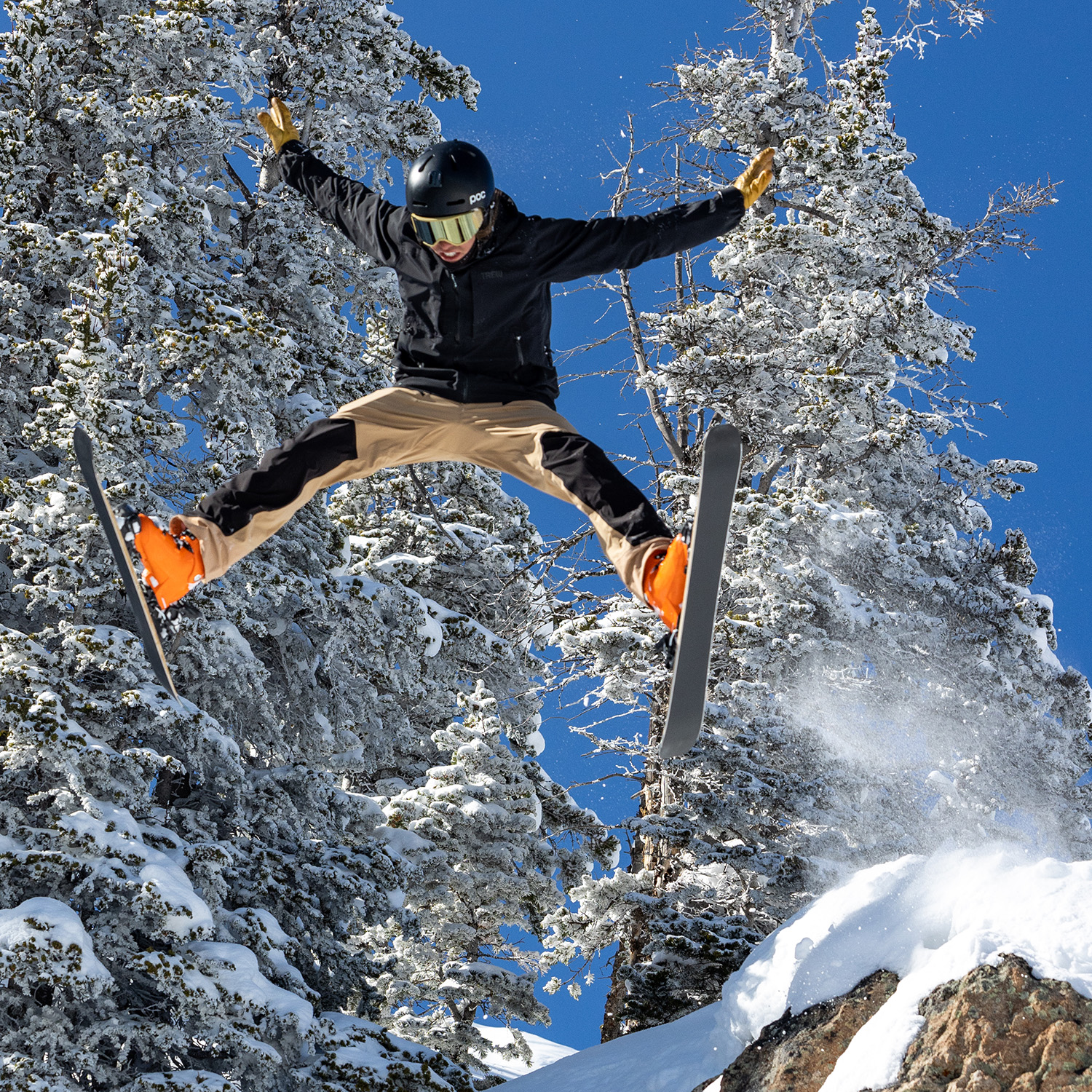
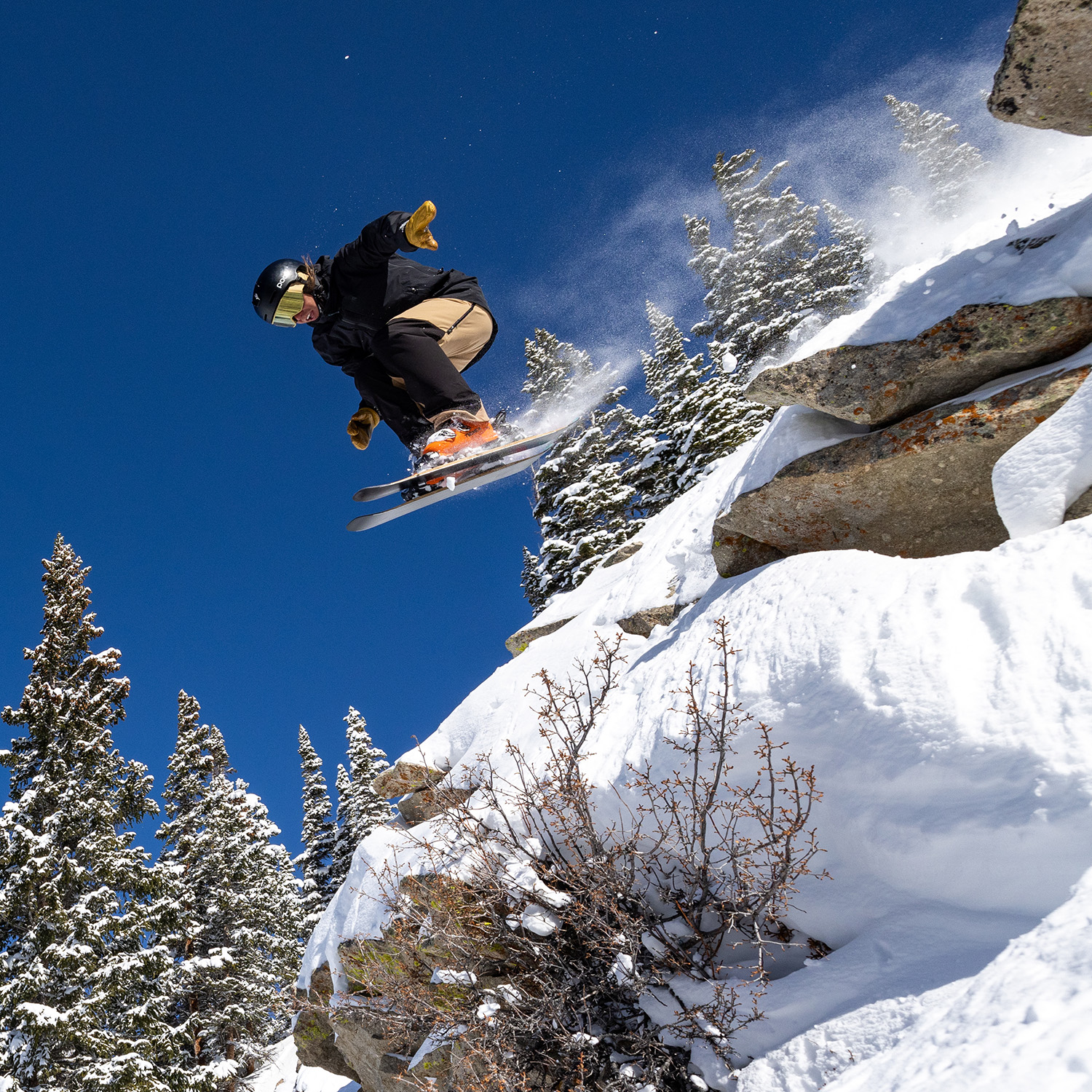
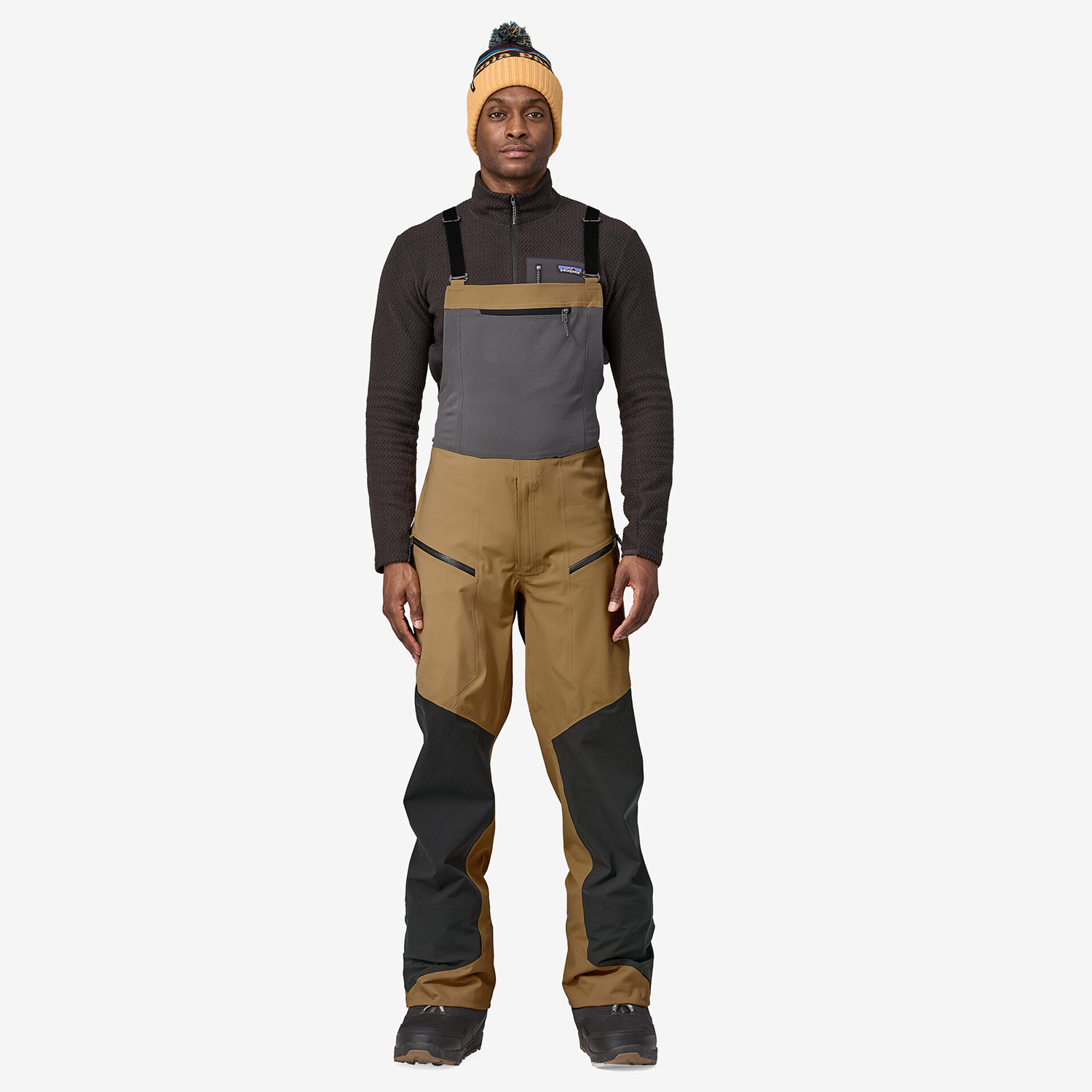
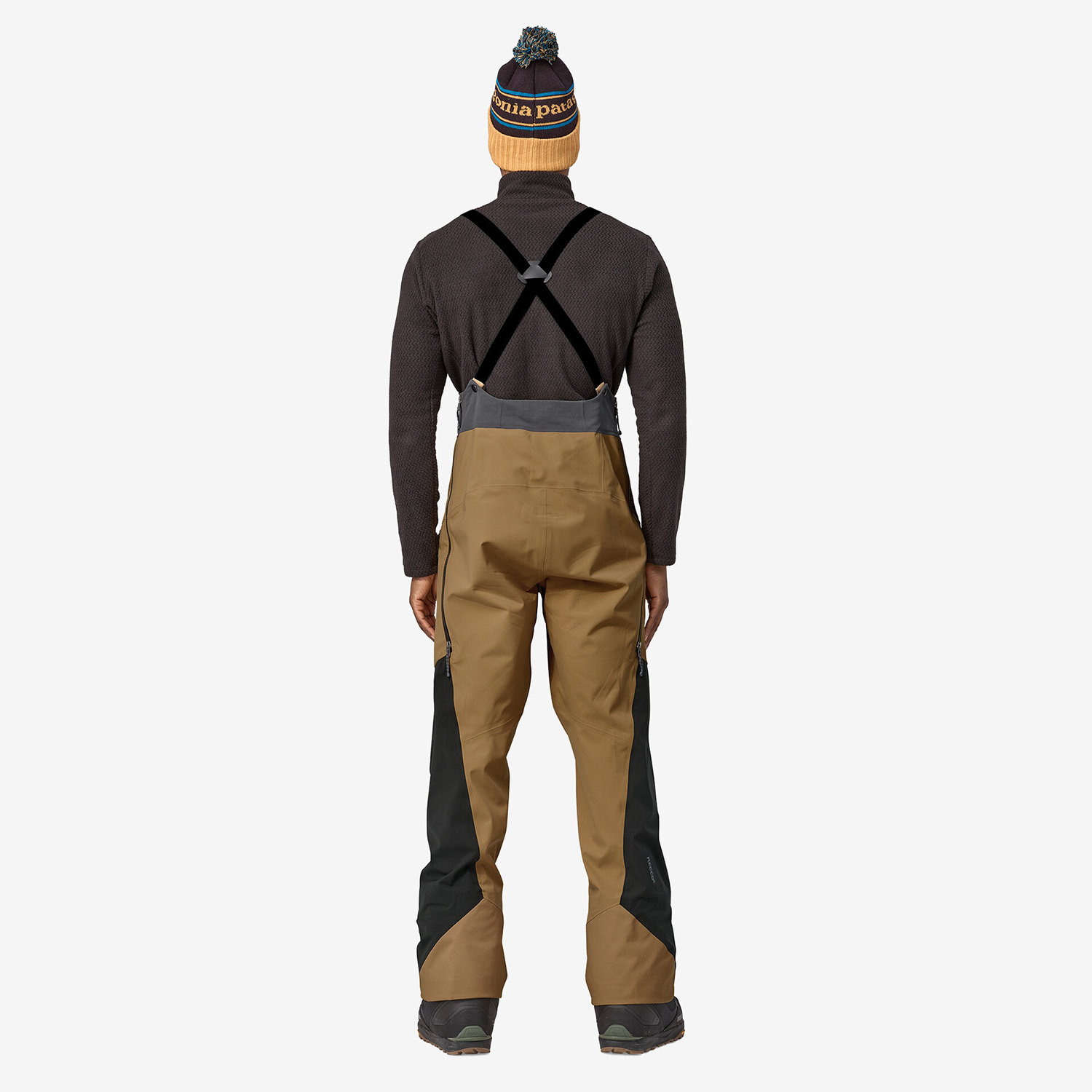
The SnowDrifter Bib’s fabric doesn’t feel like it’s changed a whole lot, which is fine by me — it’s still one of the most comfortable 3L fabrics I’ve used, and while it’s not a class leader in terms of breathability, I’d say it’s a bit better than average, in part because of how thin and not-sticky the fabric feels on skin and baselayers. In terms of weather protection, the SnowDrifter seems similar to most “20K/20K” 3L shells — i.e., quite good overall.
Similar to the Beringia St. Elias 2.0 Bib, the SnowDrifter Bib’s cuff reinforcements are on the more minimal side, so if you’re a skier who frequently cuts up their pant legs with your ski edges, we’d recommend looking at burlier alternatives for frequent resort use (I put a few small cuts in the body fabric above the SnowDrifter Bib’s reinforced area within my first 2 days with it). Otherwise, the SnowDrifter Bib is a solid touring bib if you prioritize comfort and weather protection over maximum breathability, or as a 50/50 option if you prefer a soft and supple fabric over a very rugged, burly one.
Rab Khroma Diffuse Gore-Tex Jacket & Pant
Price: $525 (jacket) $445 (pant)
Fabric: 3L Gore-Tex w/ 70D 100% recycled face fabric
Size Tested: Medium
Measured Weight: 620 g (jacket) 614 g (pant)
Reviewer: Luke Koppa (5’8”, 155 lbs / 173 cm, 70 kg)
The Rab Khroma Diffuse Gore-Tex kit is a solid all-round hardshell. Compared to stretchier, knit-backed shells like the Patagonia SnowDrifter and Flylow Kane, the Khroma Diffuse has a much more traditional hardshell feel, with a more “crinkly” fabric. However, that also generally leads to slightly better abrasion resistance (since it’s less prone to stretching and snagging).
The Khroma Diffuse uses the standard 3L version of Gore-Tex and a 70-denier recycled face fabric — that membrane / face fabric combo could be considered the standard for versatile, high-end 3L shells. I.e., it’s highly protective, as you’d expect of a Gore-Tex piece, pretty average in terms of breathability, and it’s neither super light nor super burly.
The Khroma Diffuse is a ski-specific kit, but aside from its removable powder skirt and slightly longer-than-average dropped tail, it fits and feels more like a generalist alpine shell.
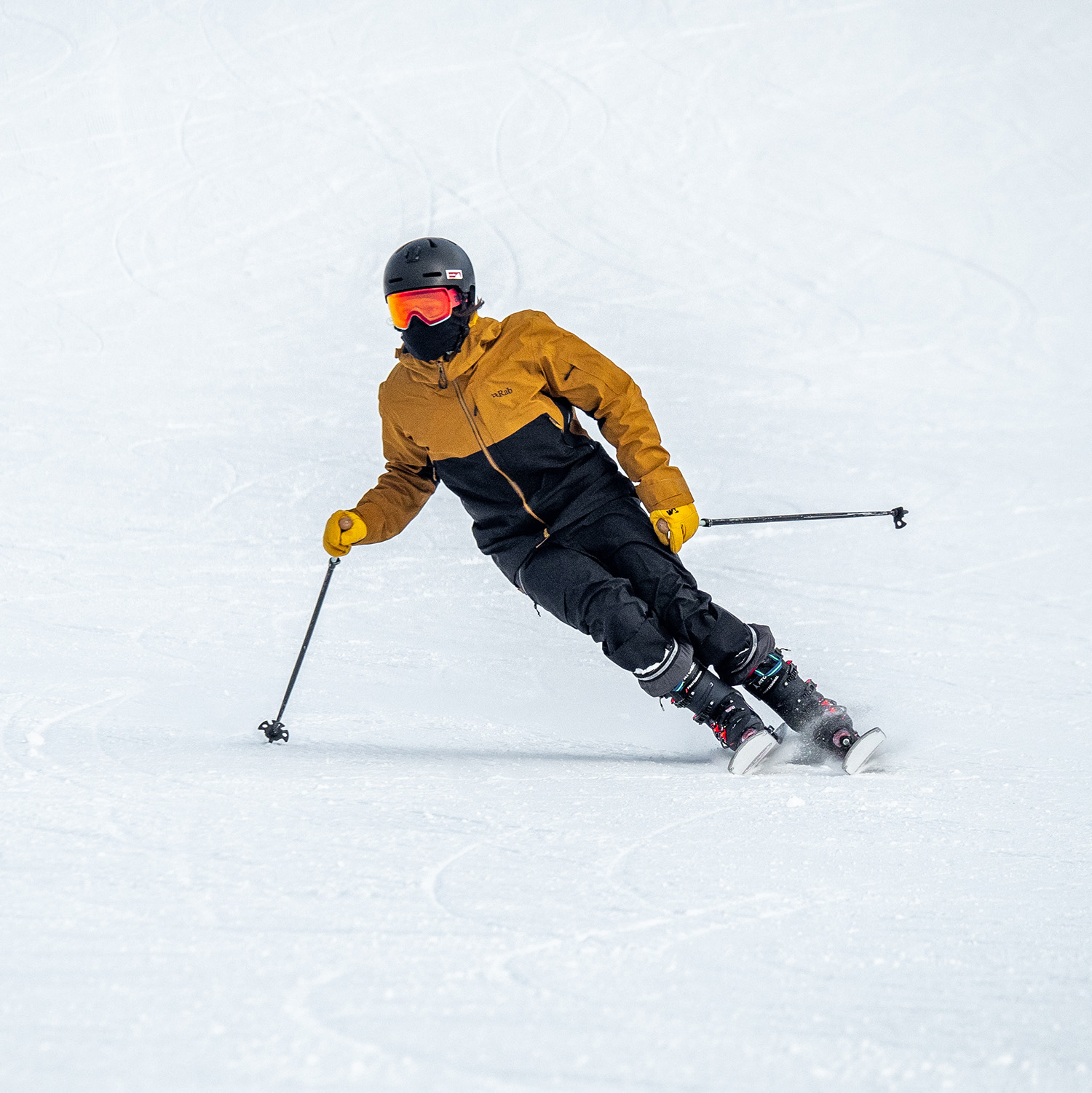
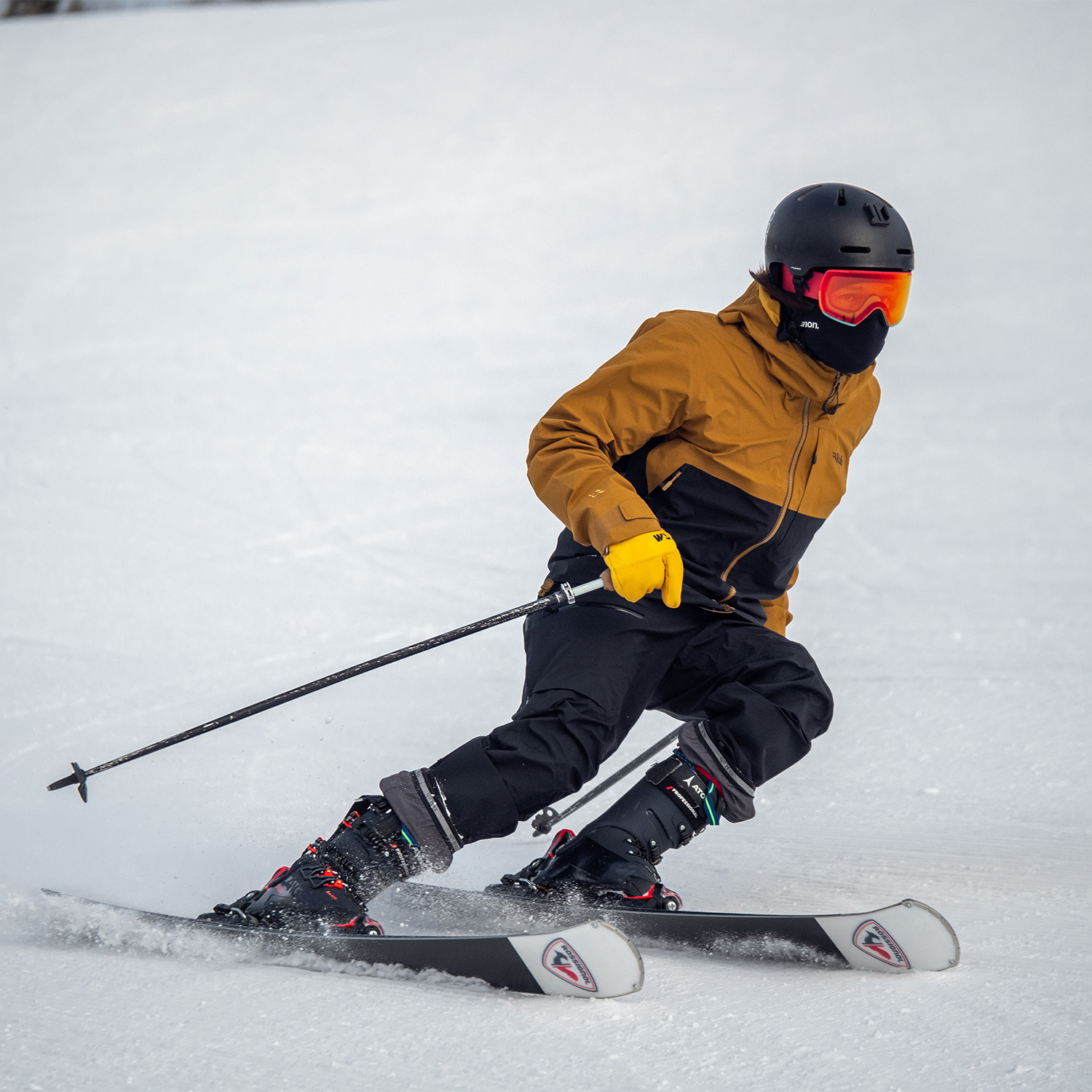
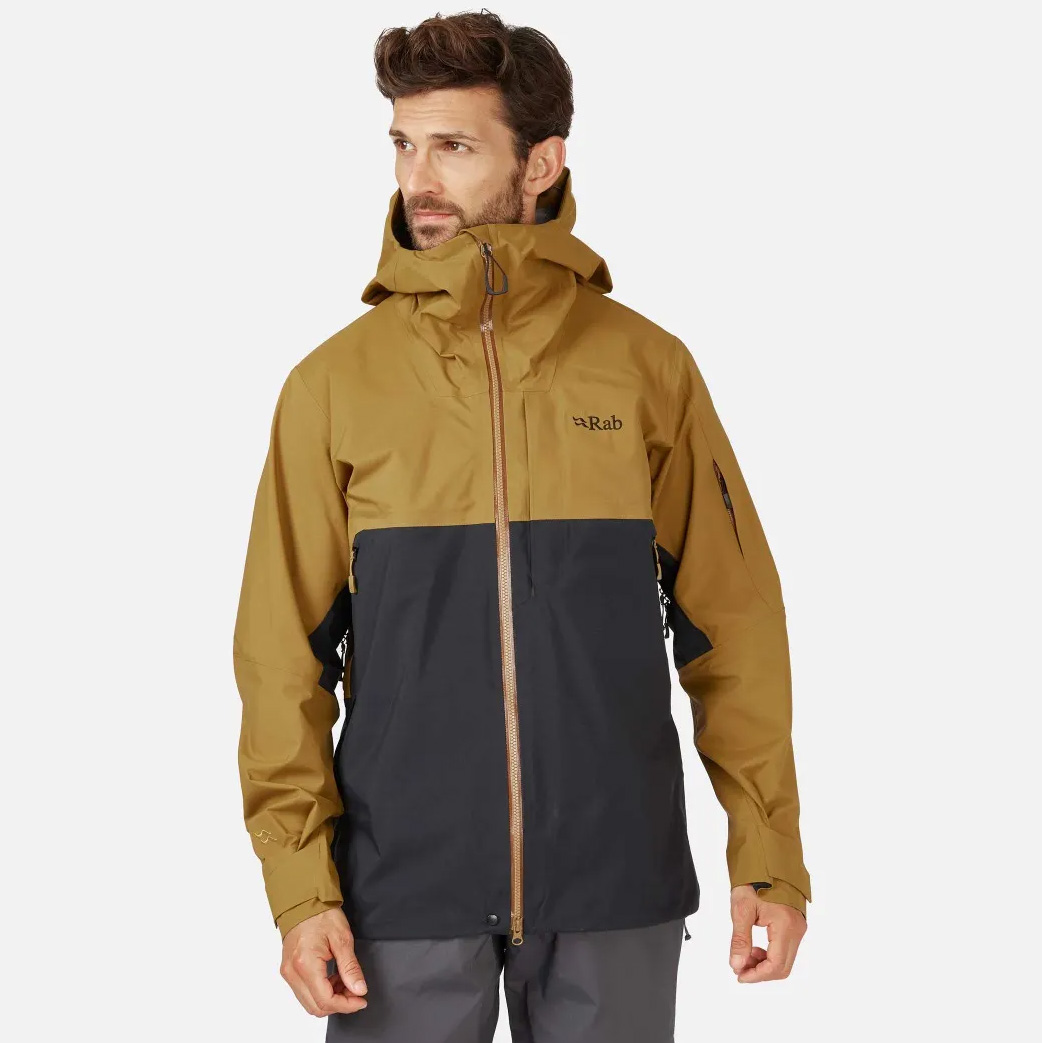
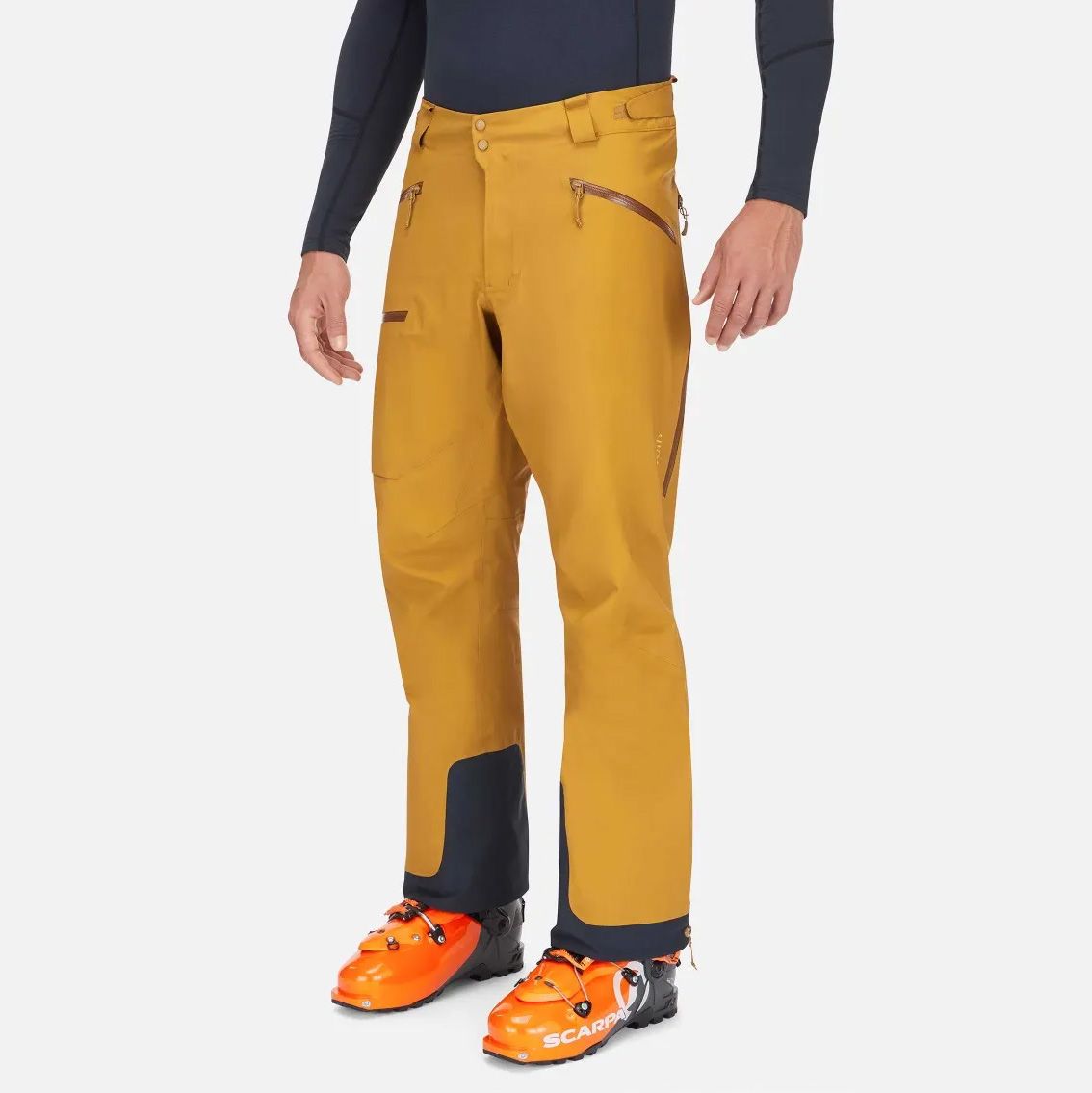
It fits notably slimmer than most of the pieces here, aside from those from Ortovox (the Khroma Diffuse is a bit roomier through the hips than the Ortovox Deep). So if you prefer a trimmer fit, the Khroma Diffuse is one of your better options here. I was still able to comfortably layer a puffy midlayer underneath it and it didn’t feel particularly restrictive overall, so I think Rab has done a good job with their patterning. If I were to own this kit, I’d probably size up on the jacket, though, just since I prefer a slightly looser, longer fit.
With its fit being the one caveat, the Khroma Diffuse strikes me as a very “safe bet” in the ski outerwear world. It’s not super heavy, not super light, is highly protective against wind and water, and still breathes fairly well (and features several vents). I’d look to the air-permeable options for better breathability, or heavier options if you’re hard on your shells. But there are lots of people who could be well served by the Khroma Diffuse kit.
Trew Le Skieur LW Anorak & LW Bib
Price: $499 (jacket) $519 (pant)
Fabric: “Ultralight LW 3L” w/ 7D circular knit backing
Size Tested: Small
Measured Weight: 439 g (jacket) 685 g (pant)
Reviewer: Luke Koppa (5’8”, 155 lbs / 173 cm, 70 kg)
Trew might still be best known for their bright and burly resort-oriented jackets and bibs, but in the spring of 2023, they released their lightest and most uphill-oriented outerwear kit. Le Skieur LW Anorak & LW Bib use a super thin 3L fabric that’s borderline see-through in spots, and despite Trew not mentioning any air-permeability metrics, I’d say Le Skieur Anorak & LW Bib are pretty similar breathability-wise compared to Flylow’s Perm fabrics and Beringia’s St. Elias 2.0 kit. And if there’s some wind, these Trew pieces feel even more breathable, purely due to the extremely thin fabric and its lack of insulative value. (If I’ve got a midlayer underneath, though, I don’t really notice / feel the wind.)
So, these pieces are definitely oriented toward human-powered travel. I wouldn’t recommend using them very much in the resort, at least if you’re remotely hard on your outerwear. But I’ve really enjoyed them in the backcountry.

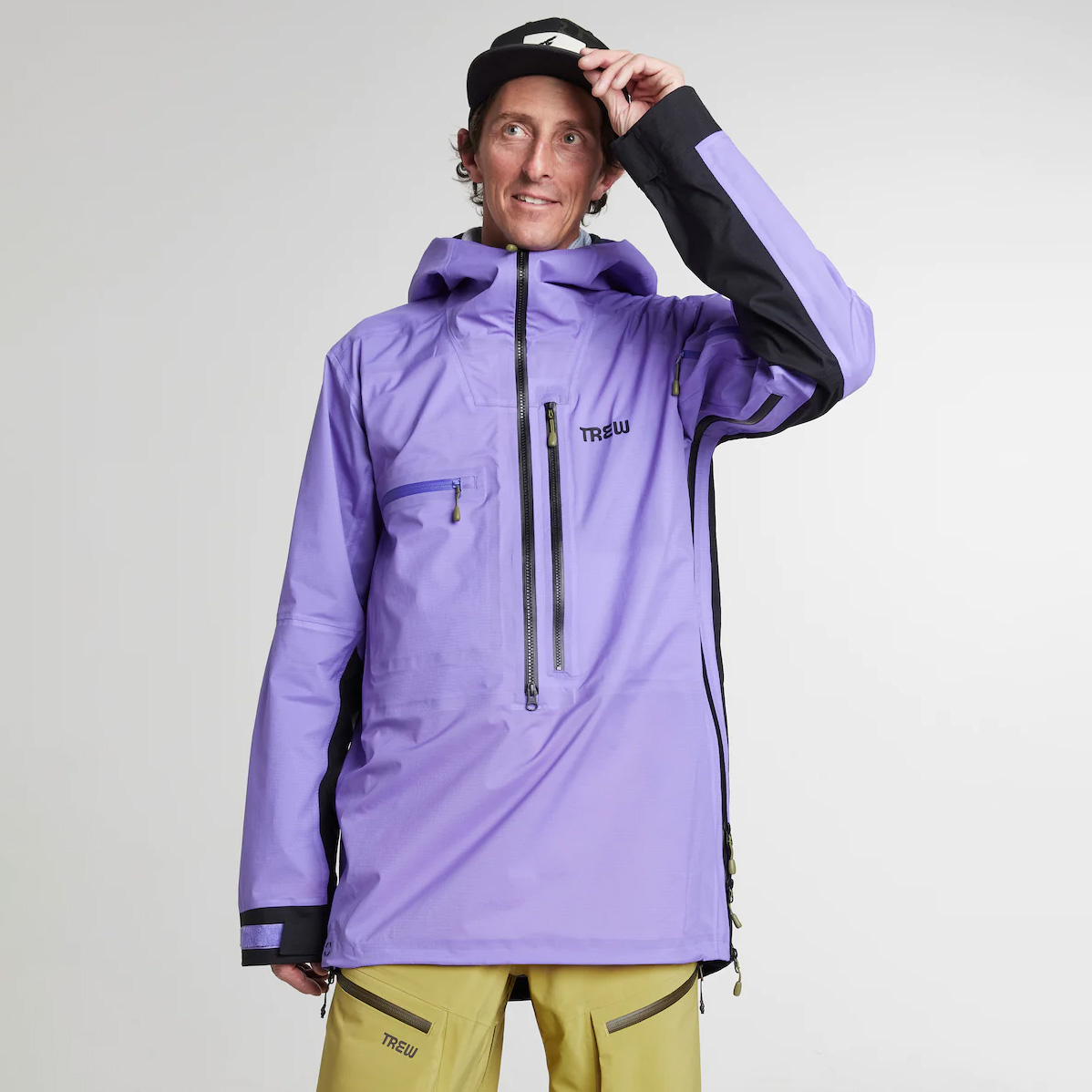
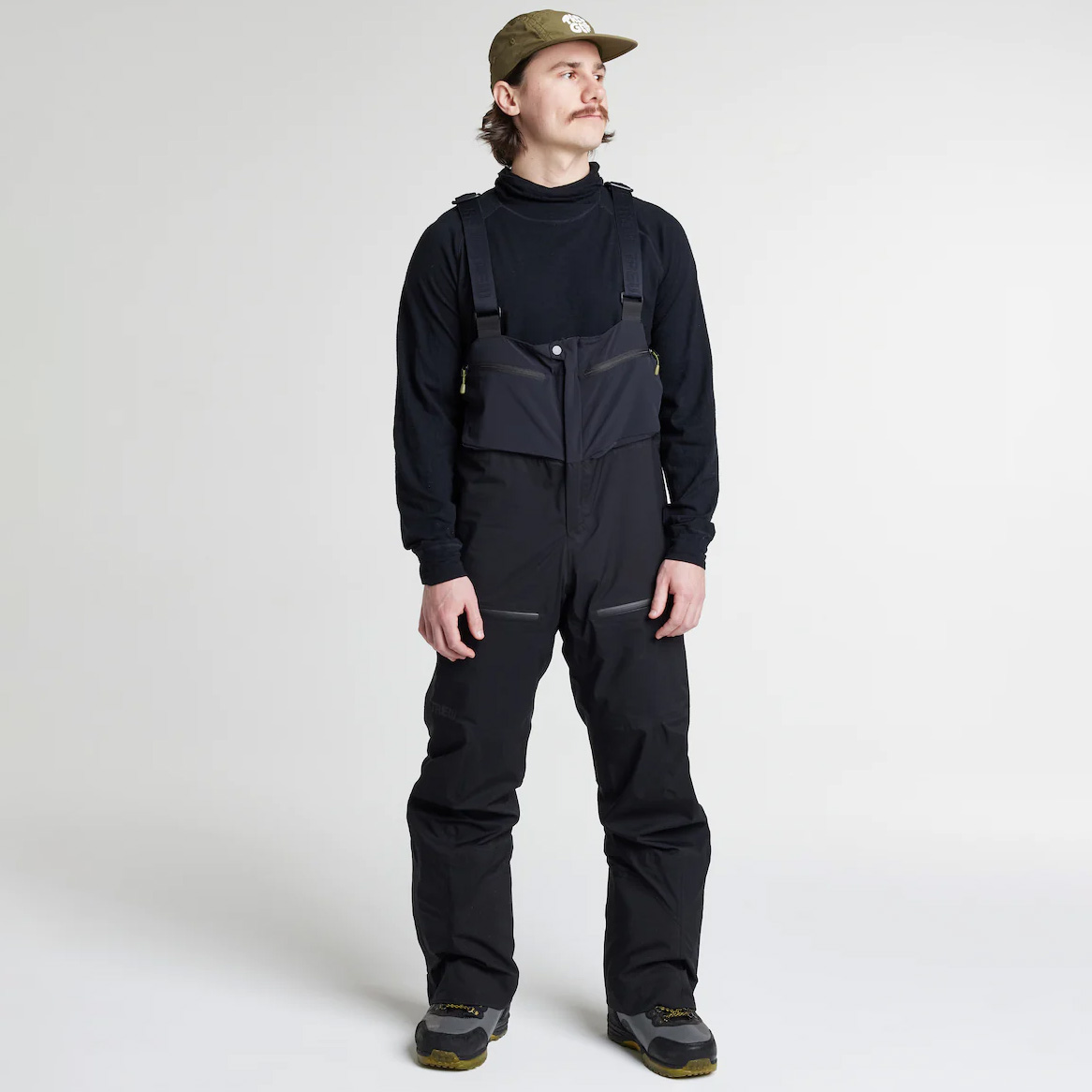
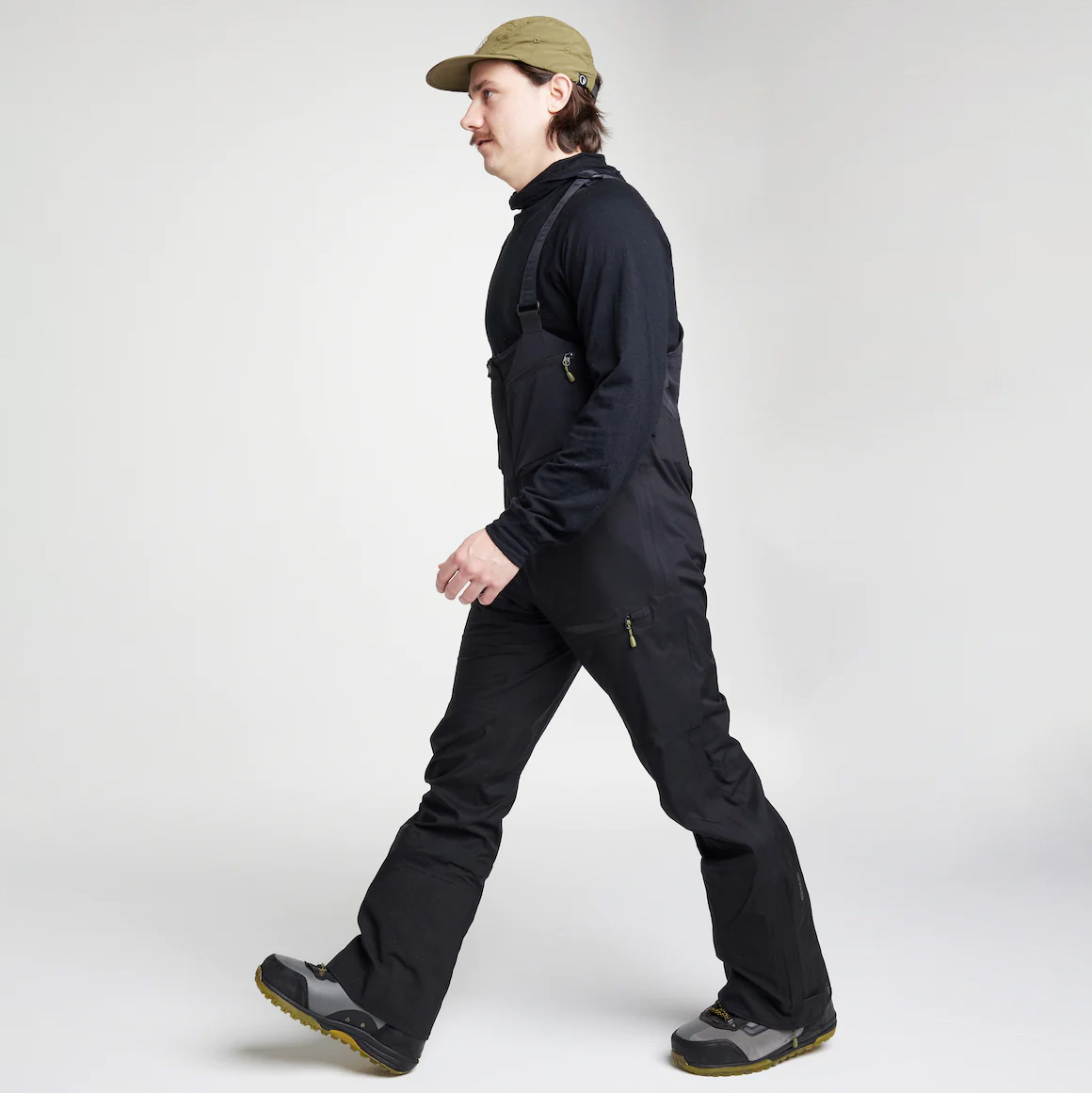
Le Skieur Anorak’s silhouette is unique, with a distinctly long cut and a big ¾-length main zipper. I love the resort-oriented Trew Cosmic Jacket in a size Medium, but I opted to go for a Small in Trew’s LW kit, and that was the right call for the Anorak. It still falls down to mid-thigh and leaves enough room to throw a pretty thick midlayer underneath, while being slim and streamlined enough to not feel bulky under a big puffy jacket. Despite being a proud anorak fan, I personally think a full-length zip with three zipper sliders might have been a better call, since the ¾-length zip doesn’t save much bulk (vs. a full-length zip) and a waterproof shell is something I take off / put on often throughout a day, but Le Skieur LW Anorak’s above-average breathability does make it easier to keep on than most waterproof shells.
I like the big vertical chest pocket for skins, while the smaller chest pocket and bicep pocket are nice for small, light items. Its multi-slider zippers on the main zipper and side give you the option to create big vents, make it easier to put on / take off, and allow you to access the bib pockets underneath. I also appreciate that they still added big, functional, velcro wrist cuffs and an adaptable hood design for use with or without a helmet.
The LW Bibs are similar in terms of being fairly slim but far from skin-tight, and featuring all the things I usually want from a touring pant without much excess. However, in hindsight, I think a size Medium would’ve been better for me with the LW Bibs; the size Small can give me a bit of a wedgie sometimes, likely due to the fact that my legs are a bit longer than average for my actual height.
The chest pockets on the stretchy bib portion do sag a bit when loaded with a heavy beacon or phone, but not enough to be an issue for me, and I always like having storage options in that area on a bib. The side vents are absolutely massive and allow for easier bathroom breaks, and the magnetic FidLock cuff adjustment has done a great job of snugging down over various footwear while staying secure and out of the way. Despite the main fabric being ultralight, they still have a big Vectran inside-cuff reinforcement, which I’ve found to offer above-average resistance to cuts from ski edges and crampons, relative to how light it is.
Overall, Trew’s LW kit is a pretty dialed combo for those who want waterproof protection and backcountry-focused features in a very light, quite breathable package. Here in Crested Butte, I’ve enjoyed it for mid-winter touring when the temps are below freezing and/or it’s snowing, whereas I usually opt for a non-waterproof kit during our drier, less-cold days, but I think it’s a compelling option for locales where heavy snow / rain is a more common factor in the backcountry.

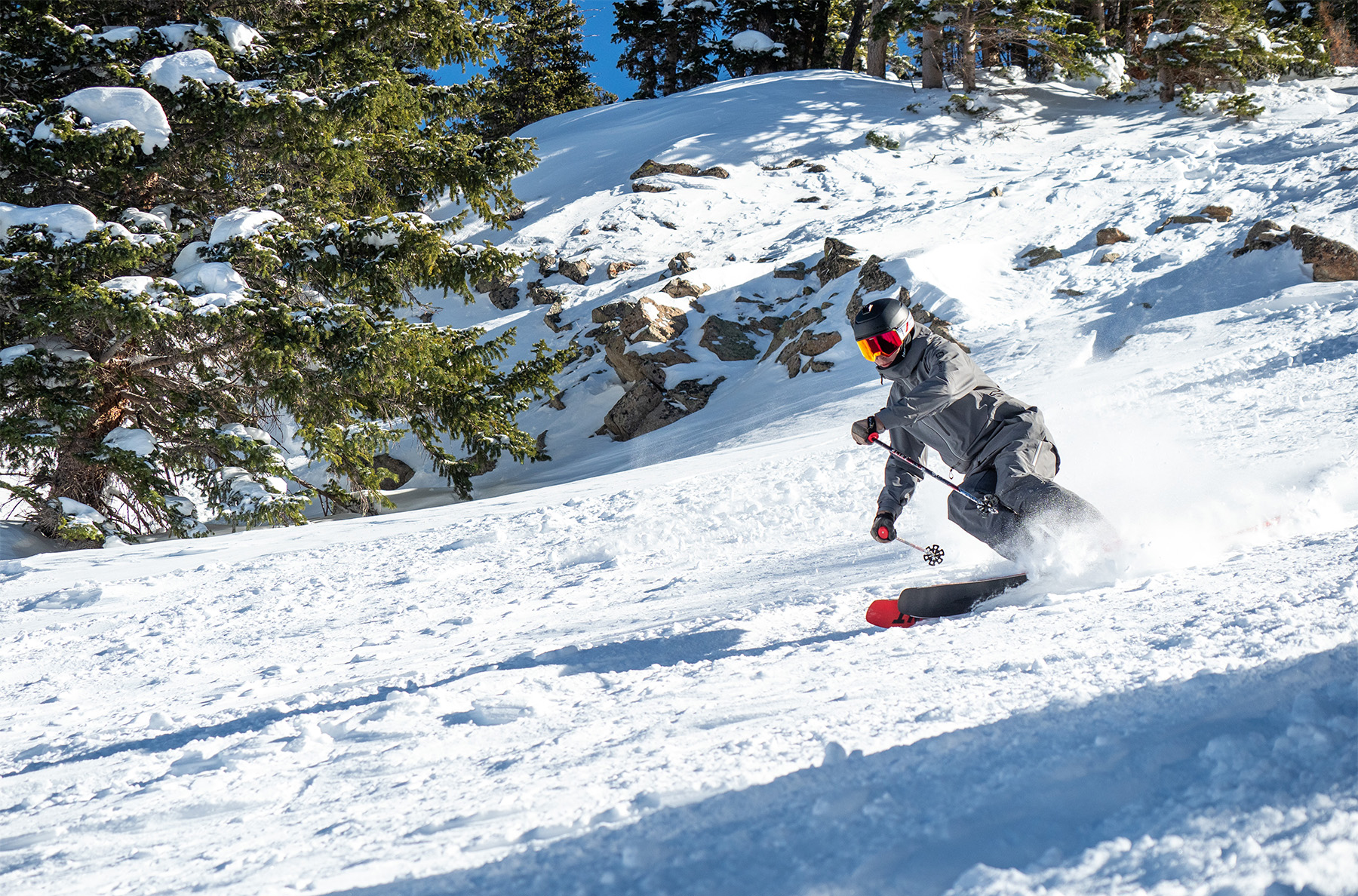





Hoping to see some reviews for Norrona in part two.
We’ll have at least a couple Norrona pieces in Part Two. The Lofoten Gore-Tex Pro kit we discussed in last year’s roundup is also still current: https://blisterreview.com/gear-reviews/ski-snowboard-outerwear-mega-roundup-mens
I have the Baker Perm bib, and use it on colder but not horribly wet days. It’s an awesome piece, with much better breathability than the Gore-Tex Pro bibs that I use in blizzards and only a bit less water resistance.
Any chance you guys got a Made Outdoor shell and reviewed that? I remember when you first had a blurb about them on the site back in 2021, https://blisterreview.com/featured/made-custom-technical-apparel-ep-139.
Strongly considering it…
Yep, Jonathan has been testing one and we’ll aim to have that included in Part Two.
Have you considered reviewing Tobe monosuits? I normally ski with bibs (Flylow Baker Bibs, Arcteryx Saber) and shell jackets but on especially cold days I break out the Tobe monosuit and it is the warmest option I have found. Yes it’s a snowmobiling suit but versatile in use.